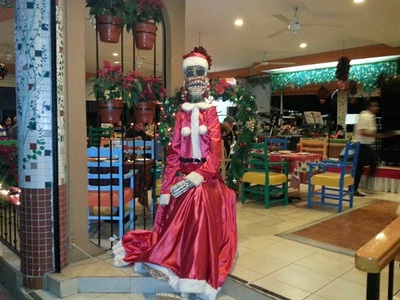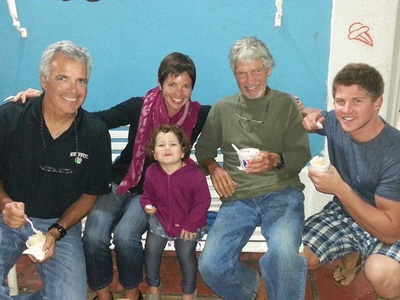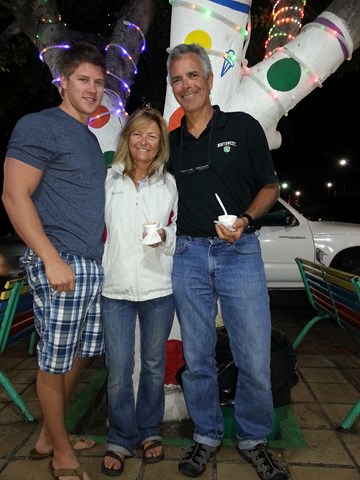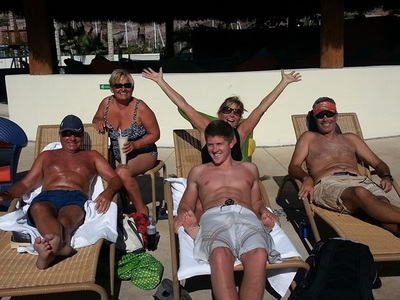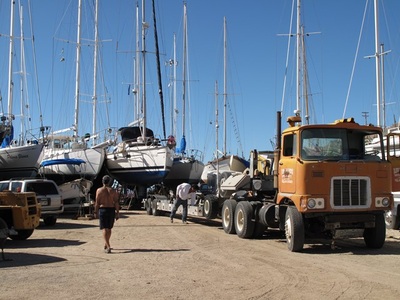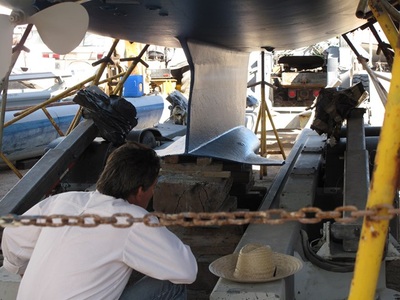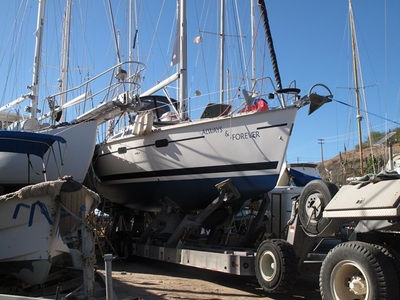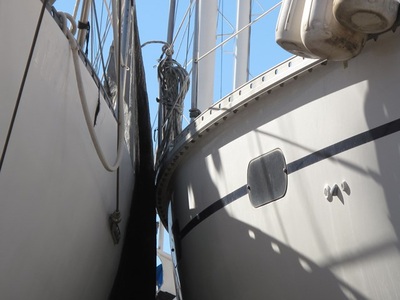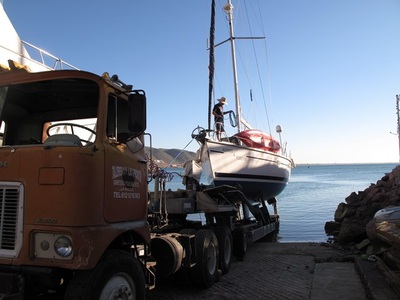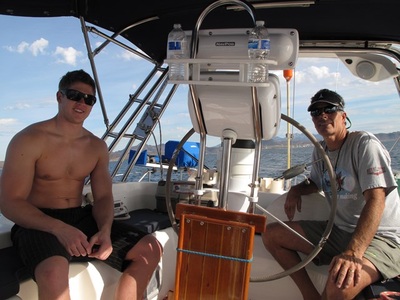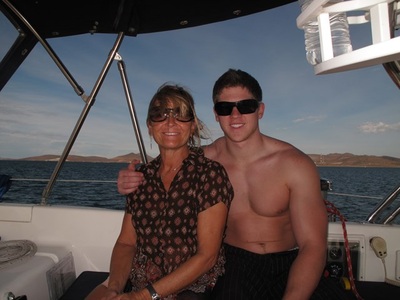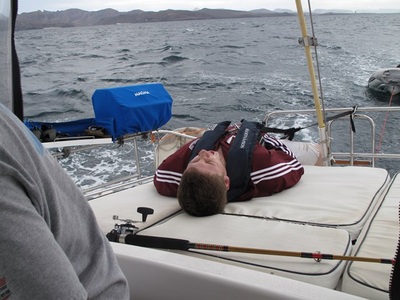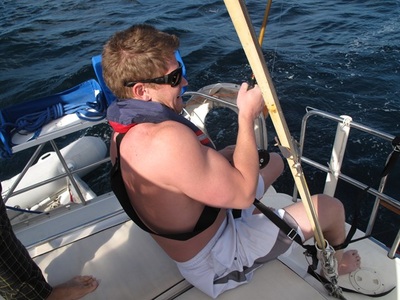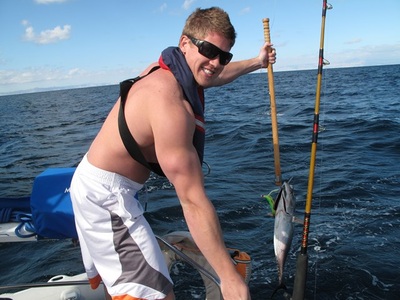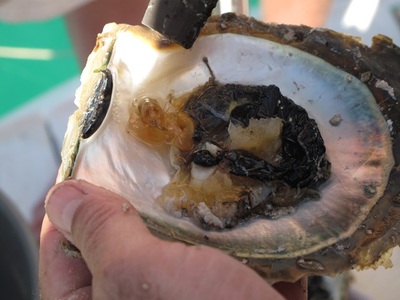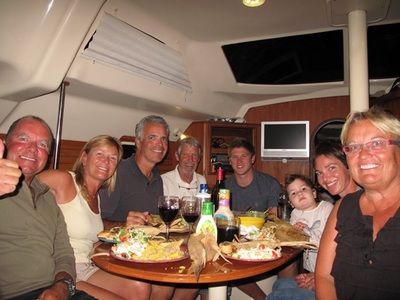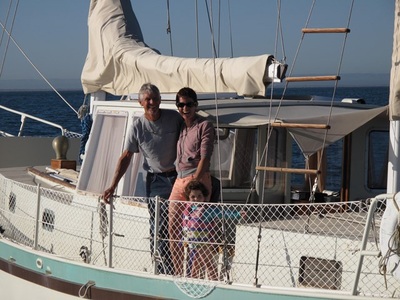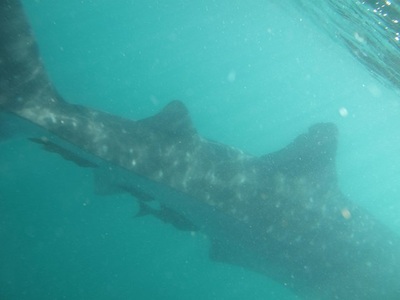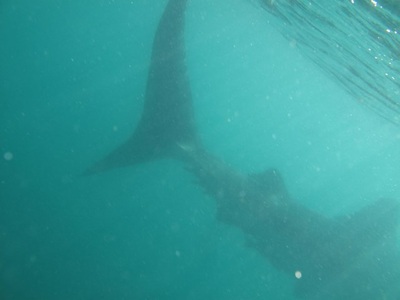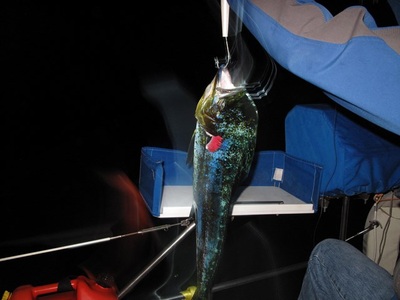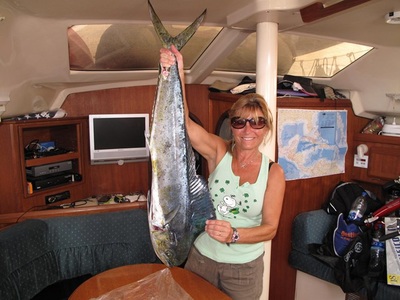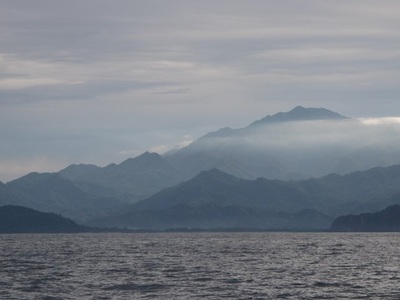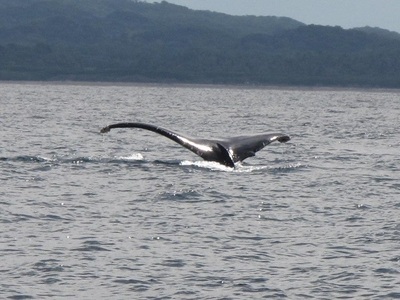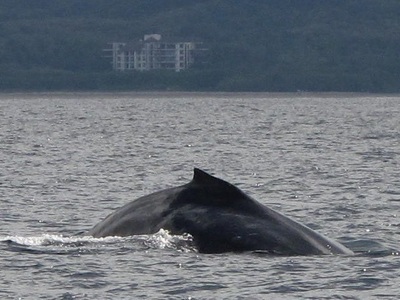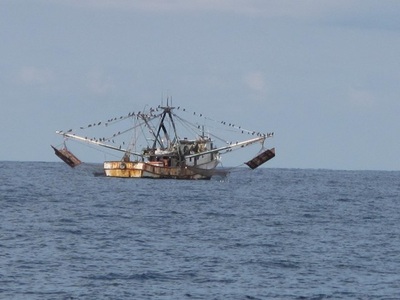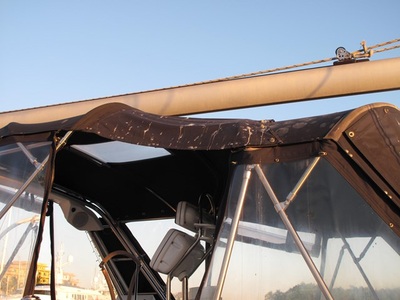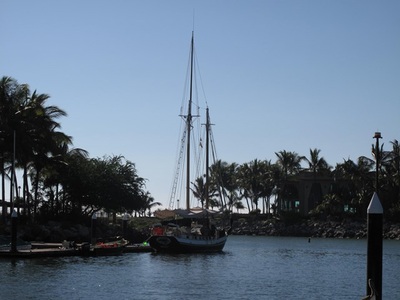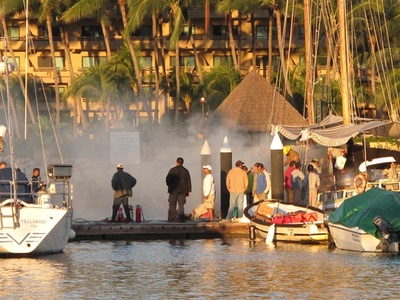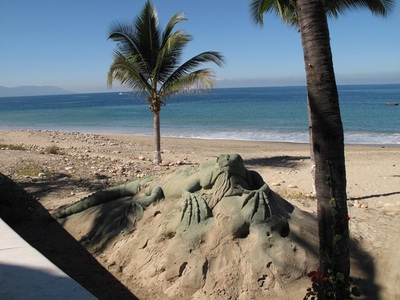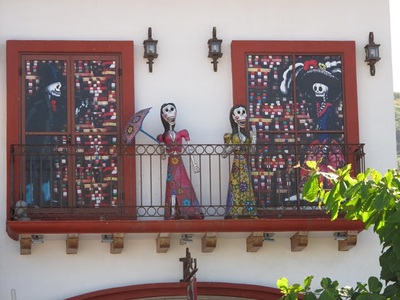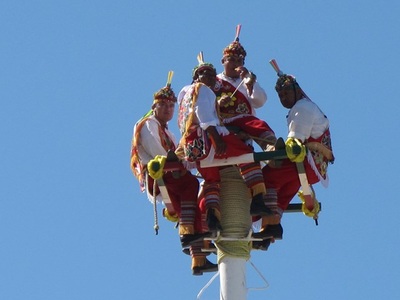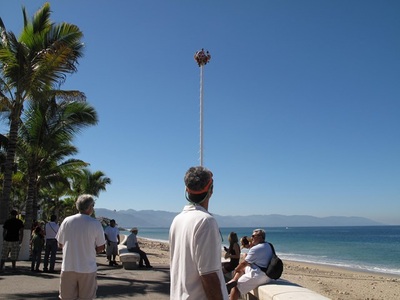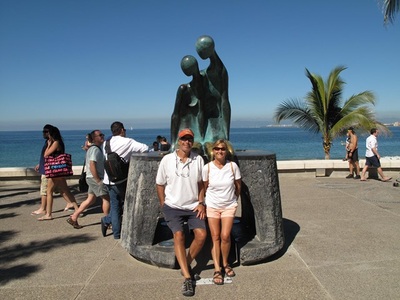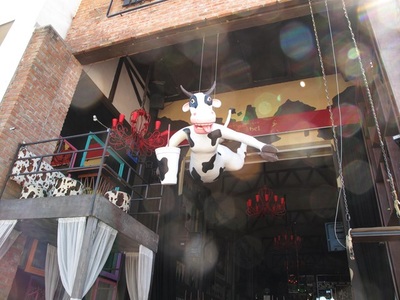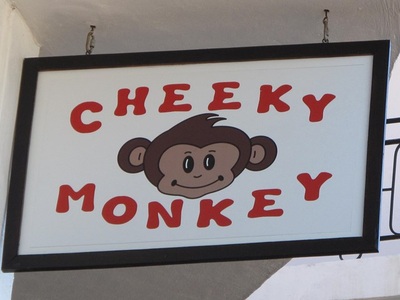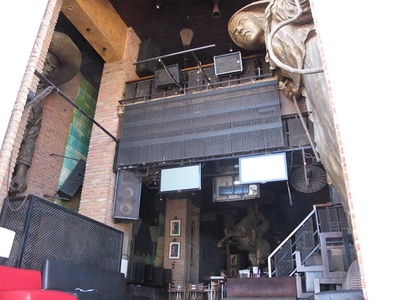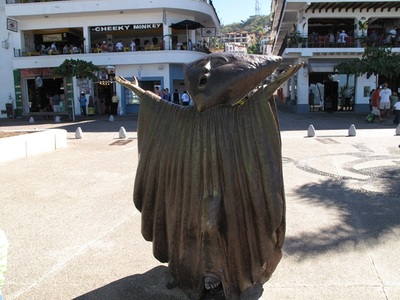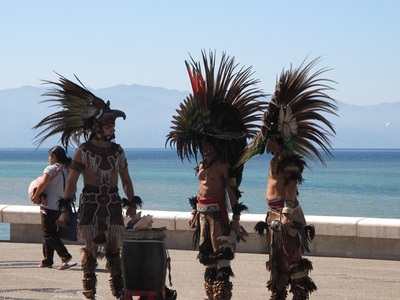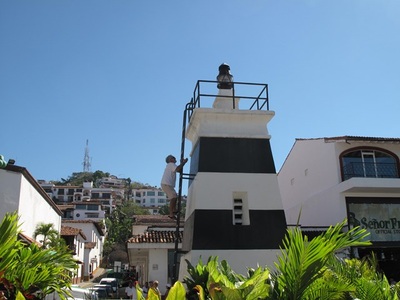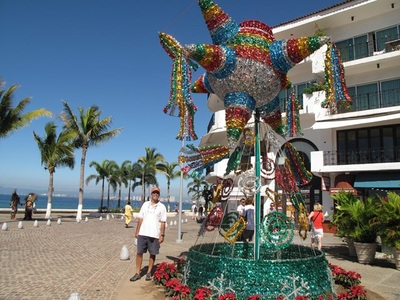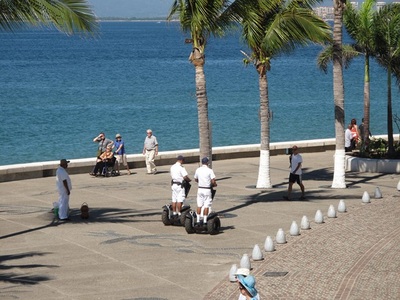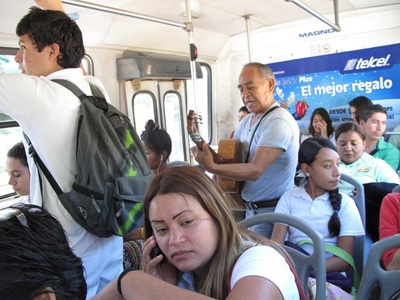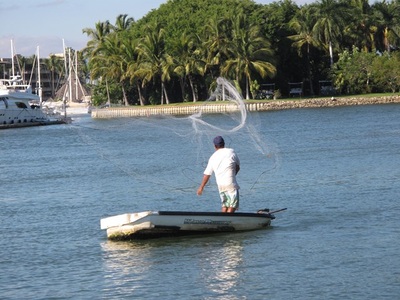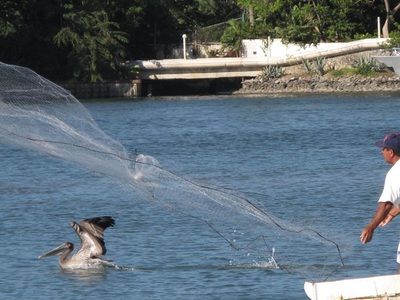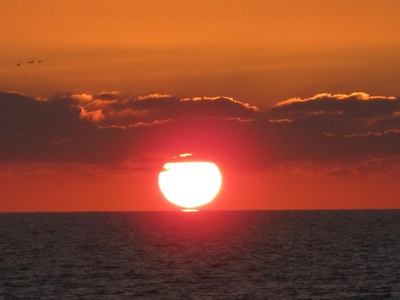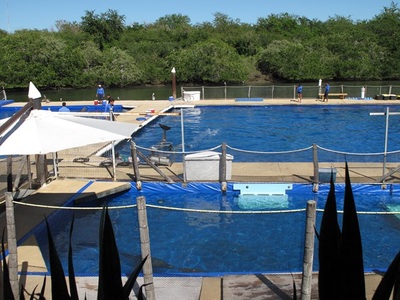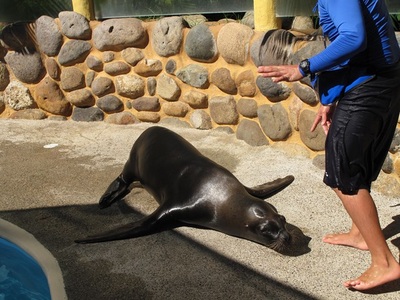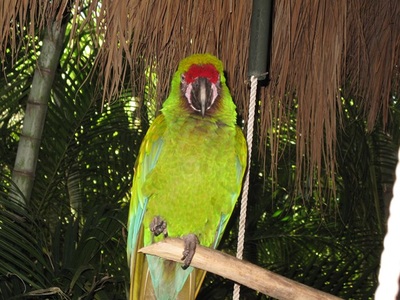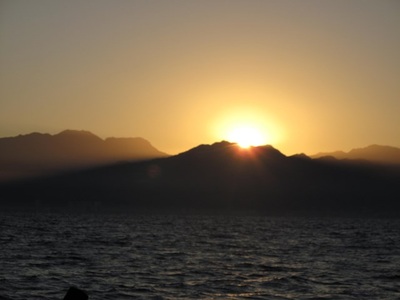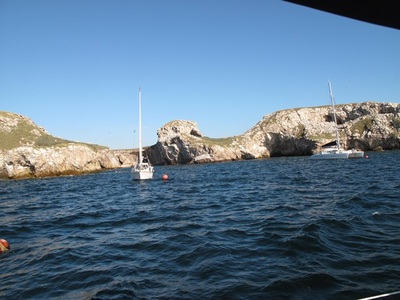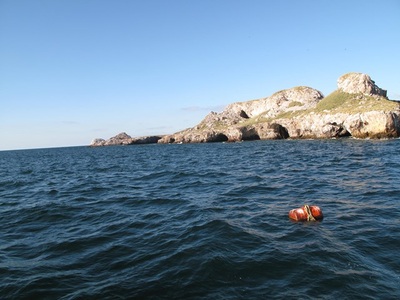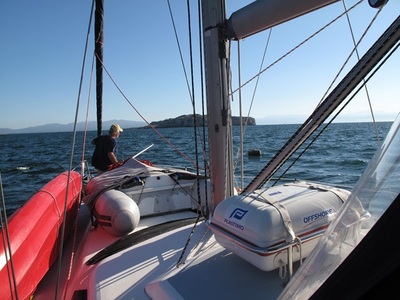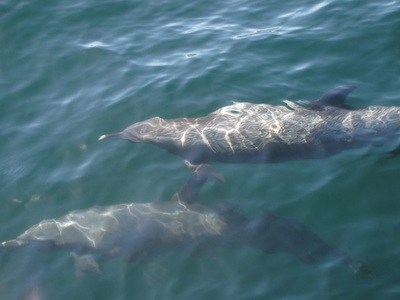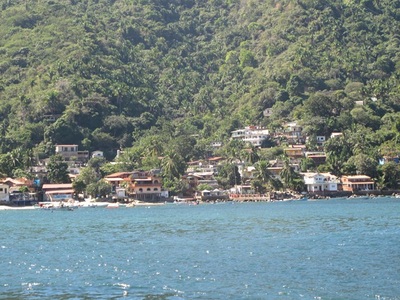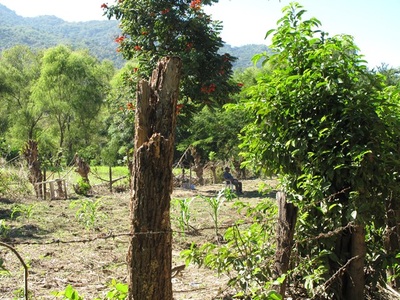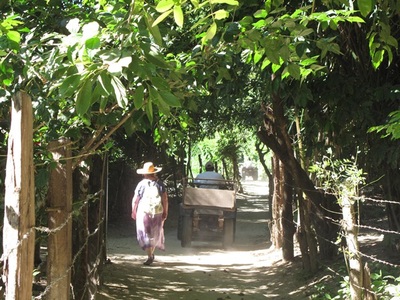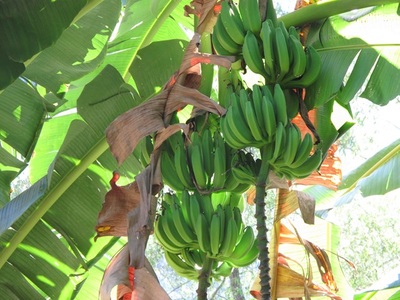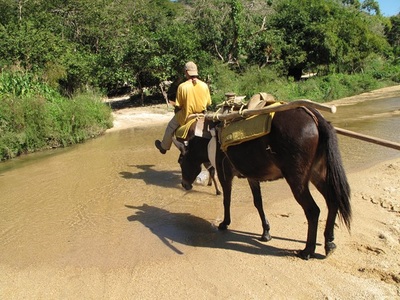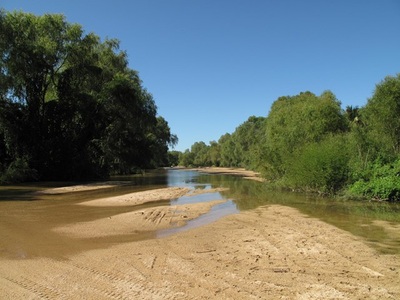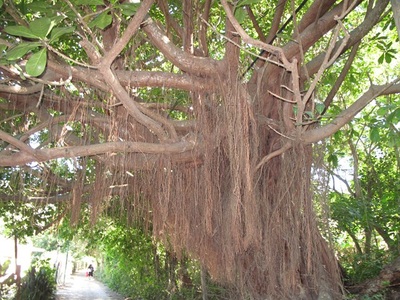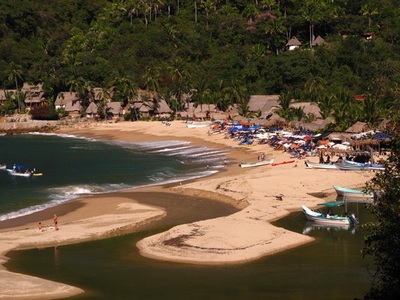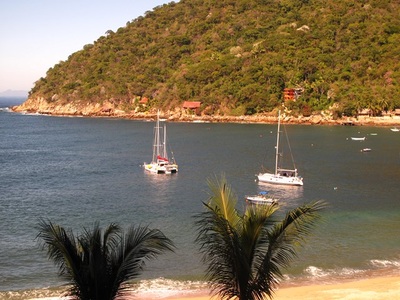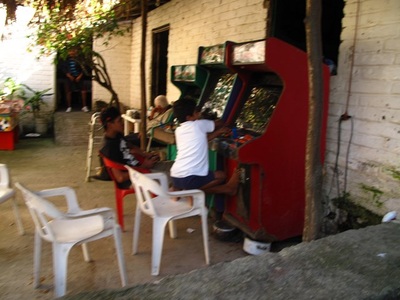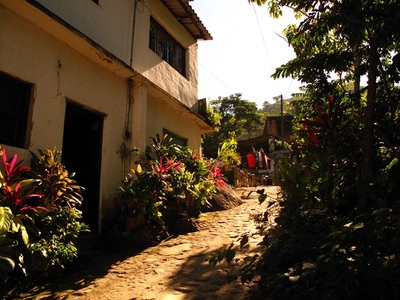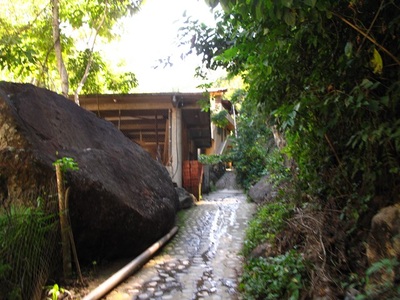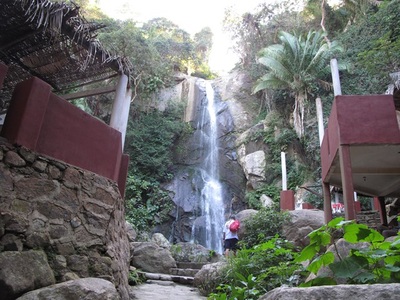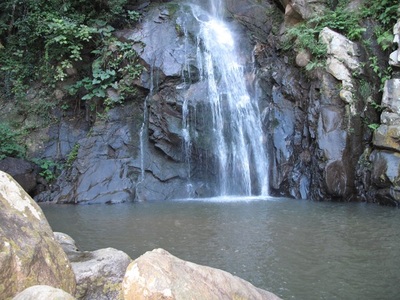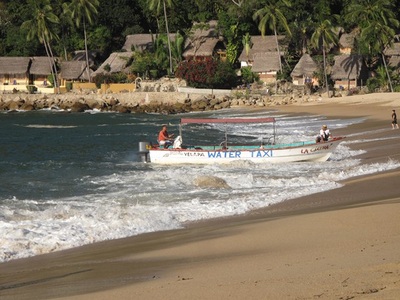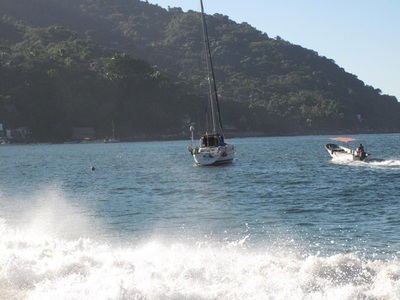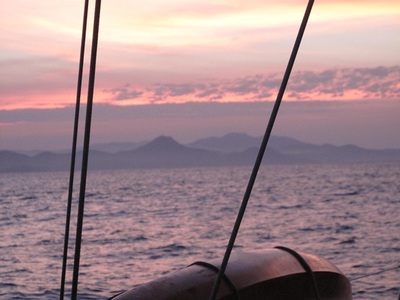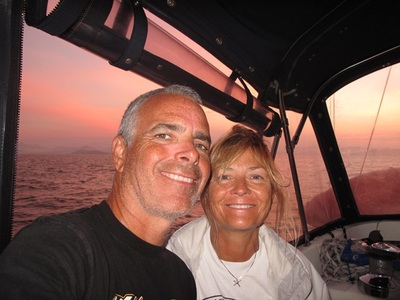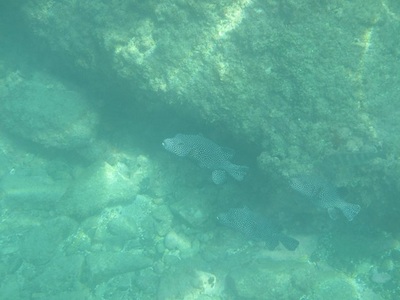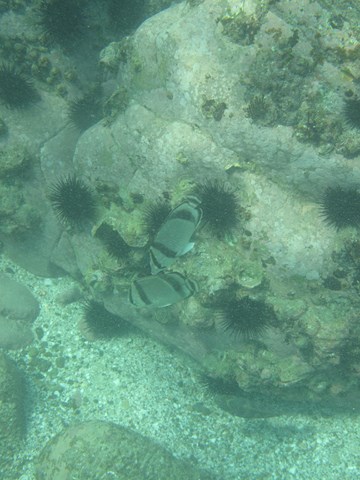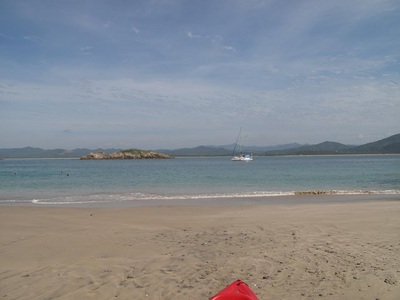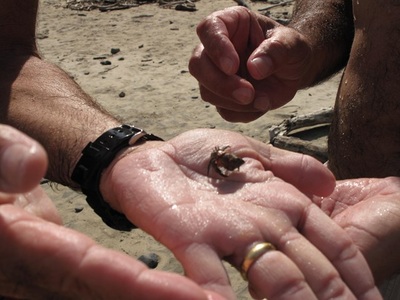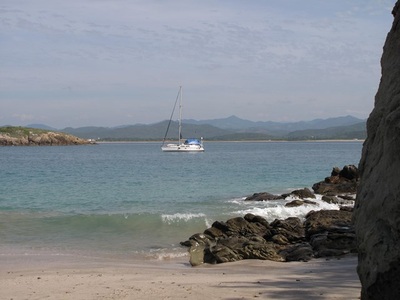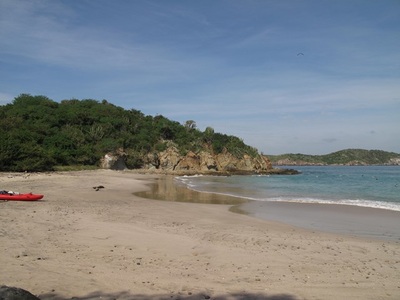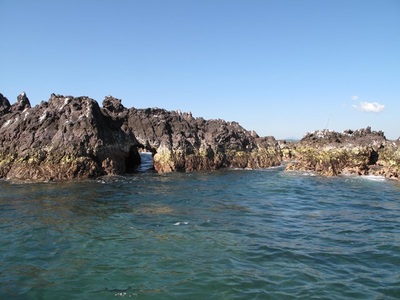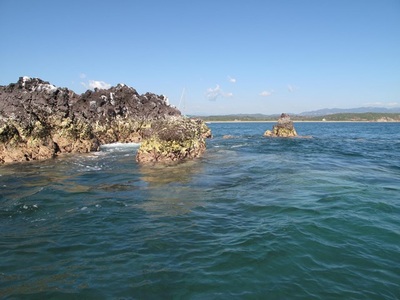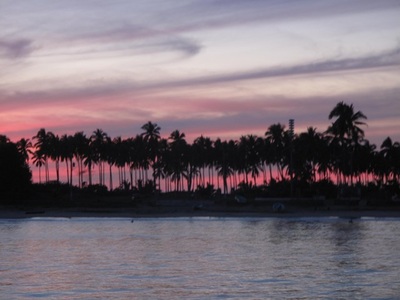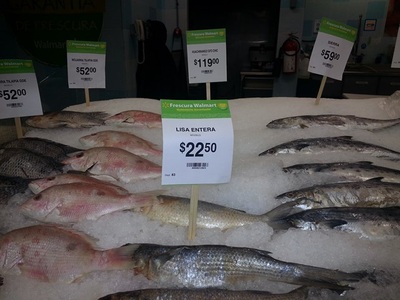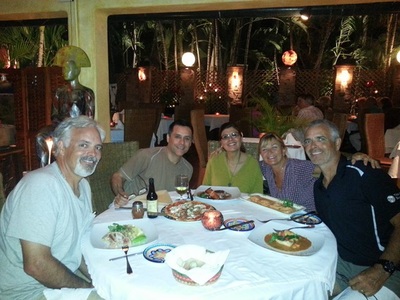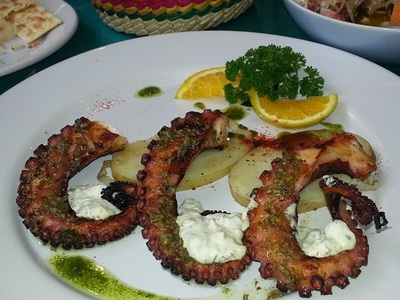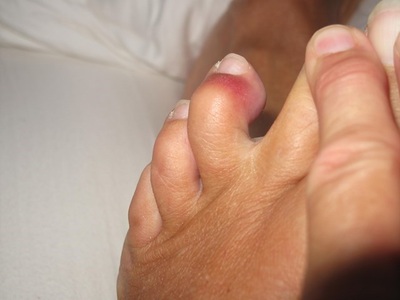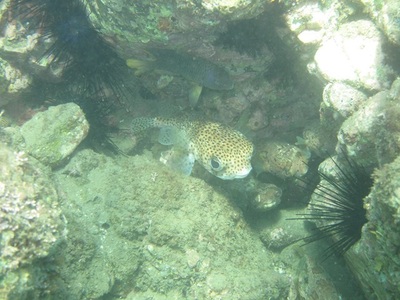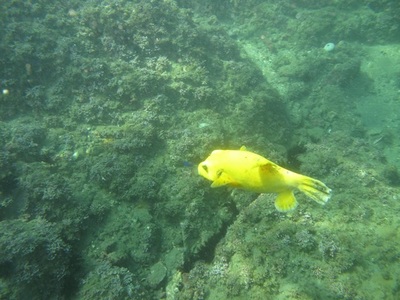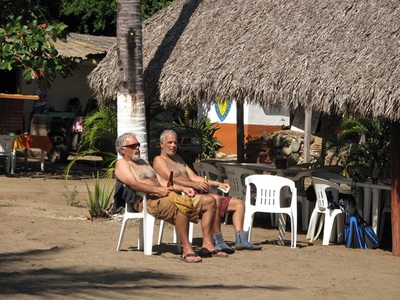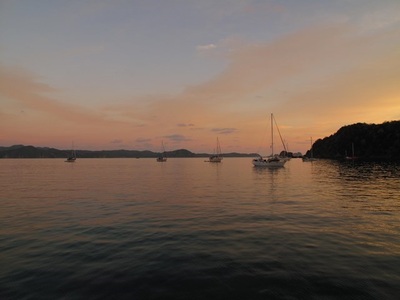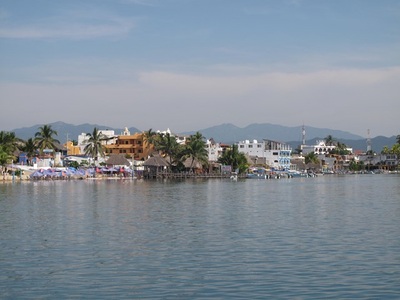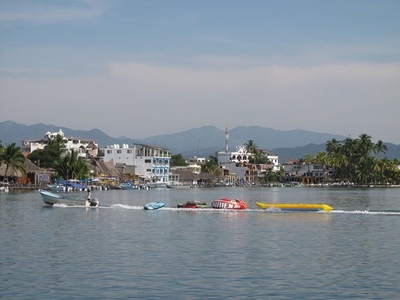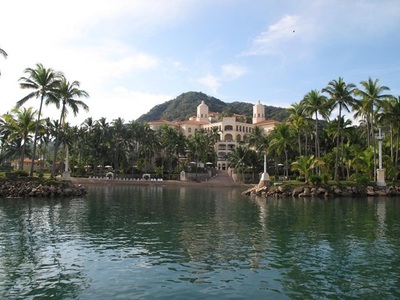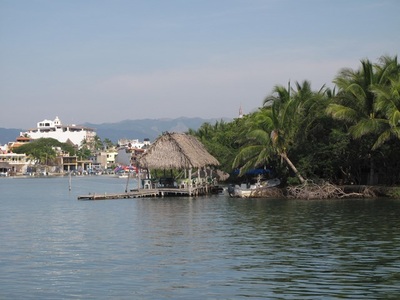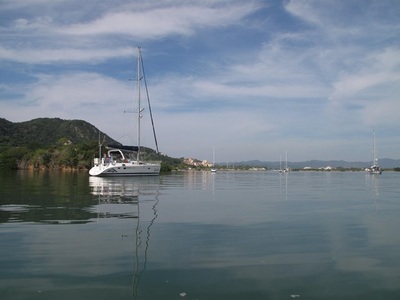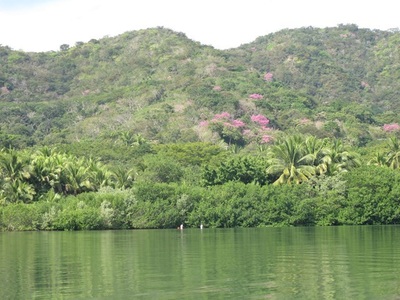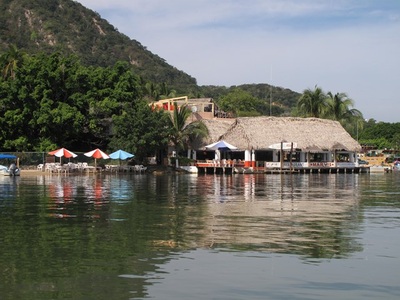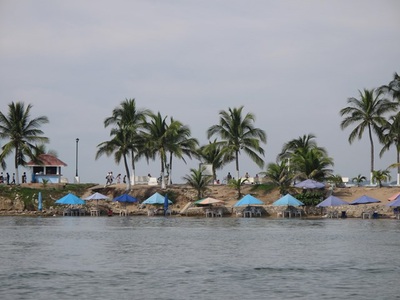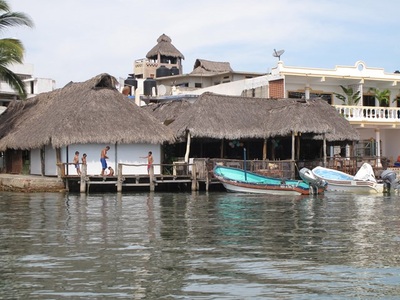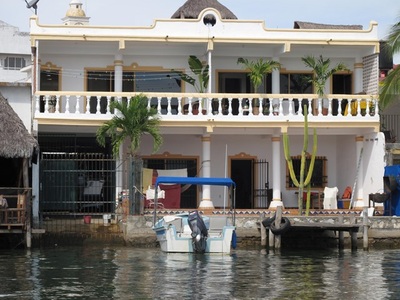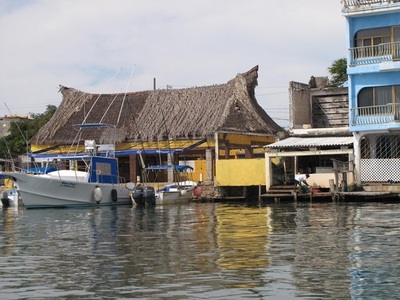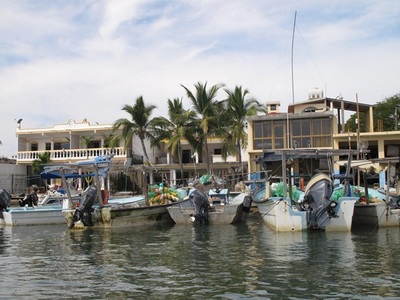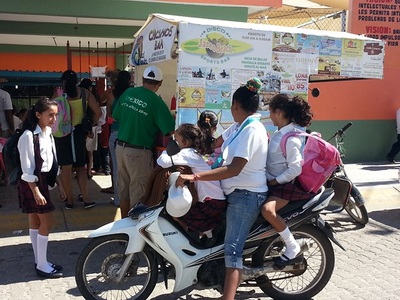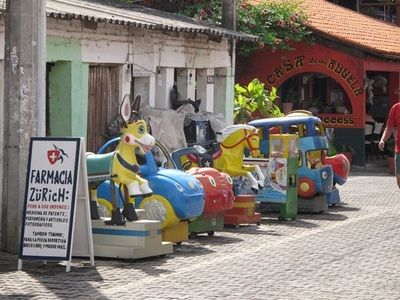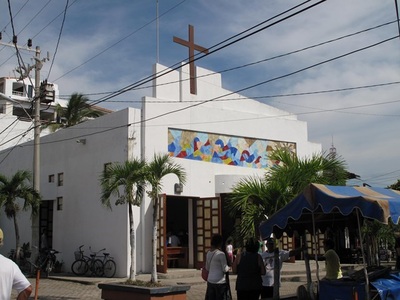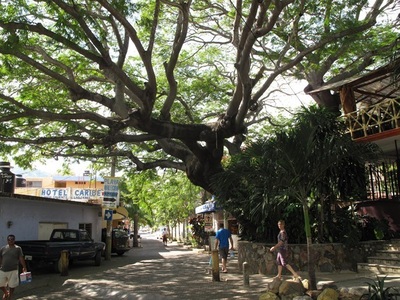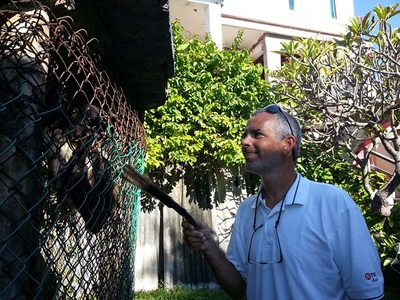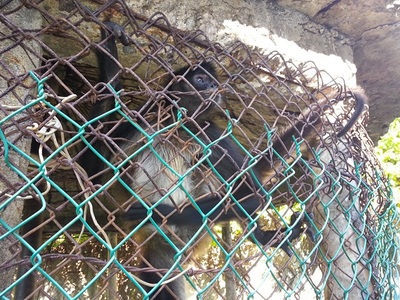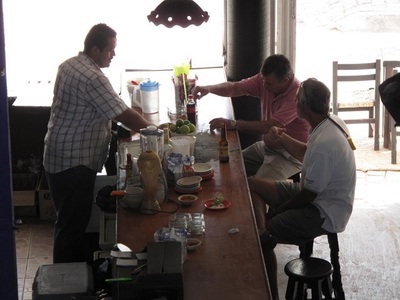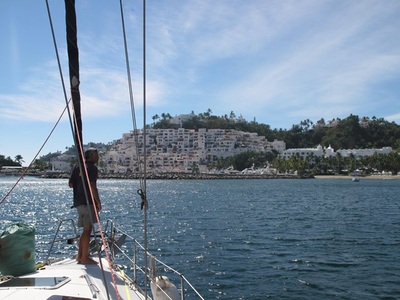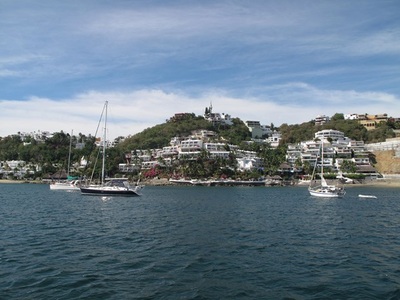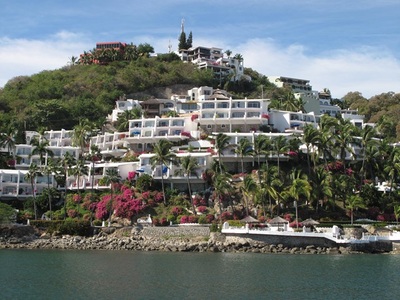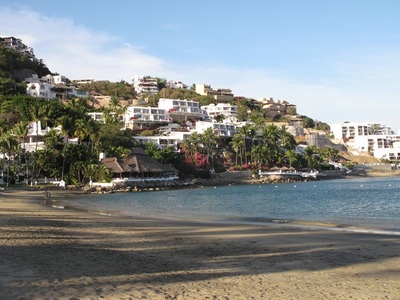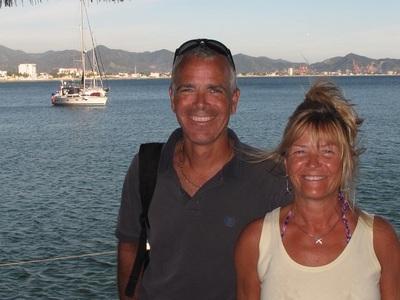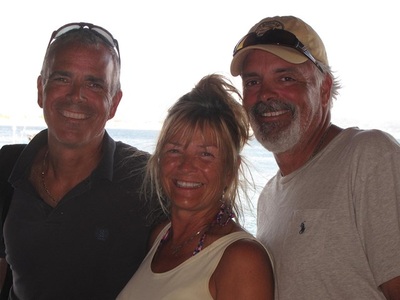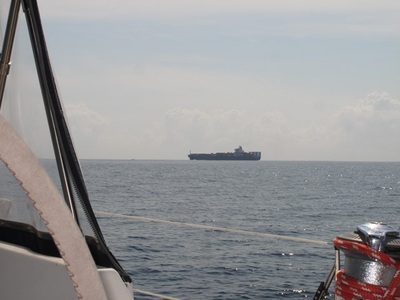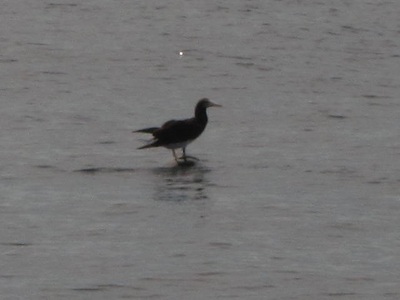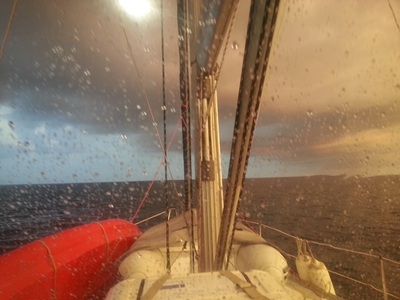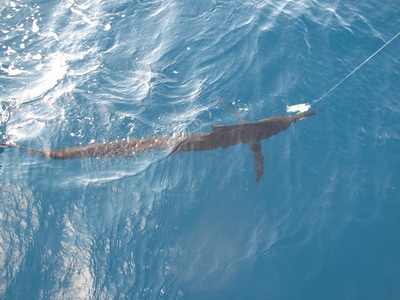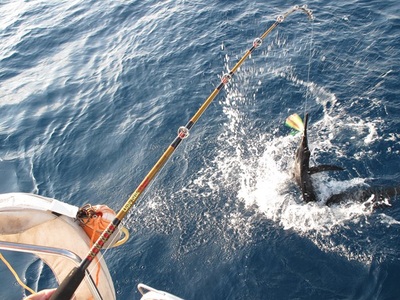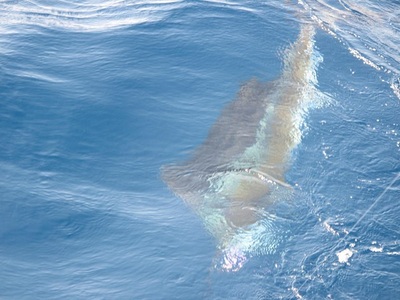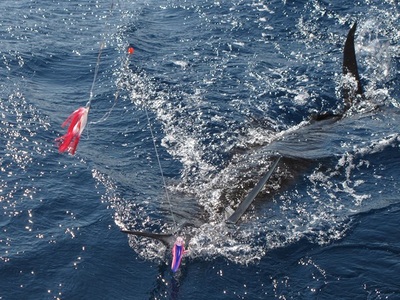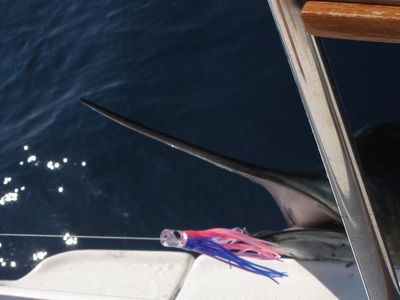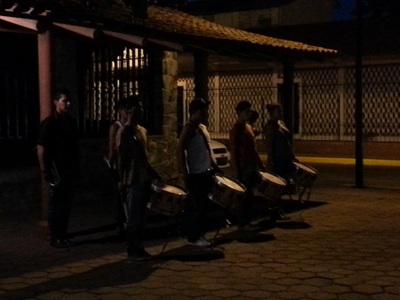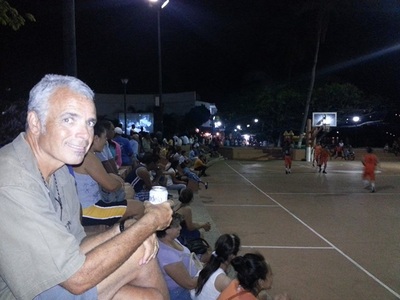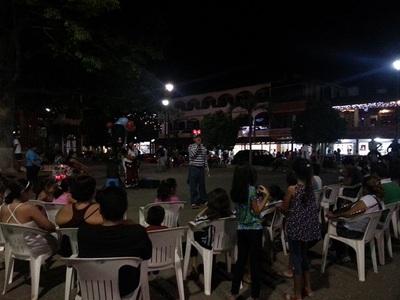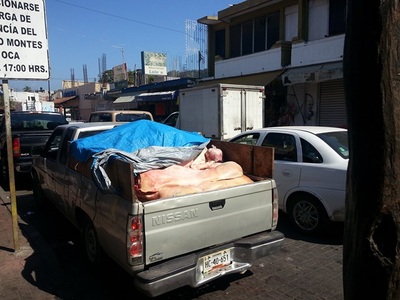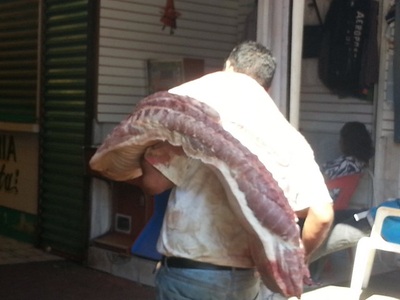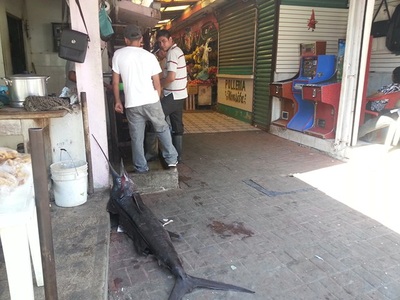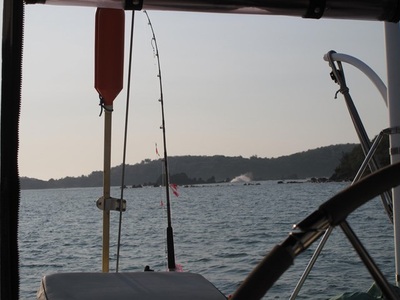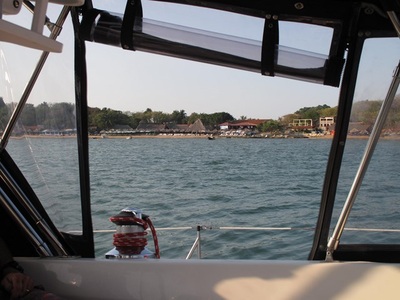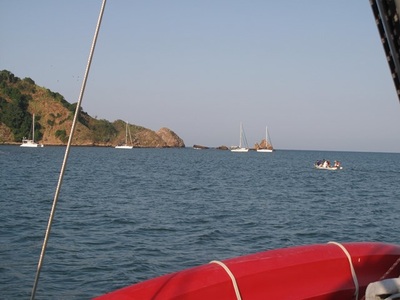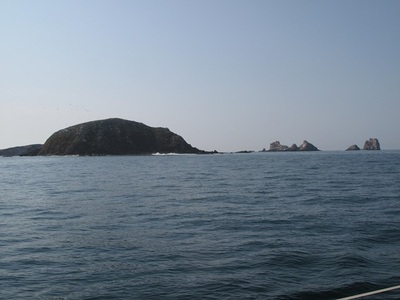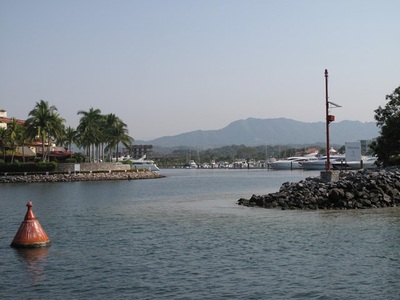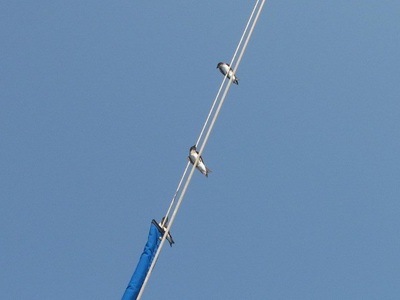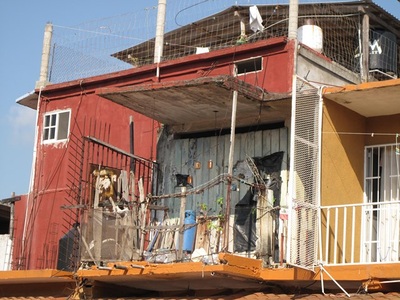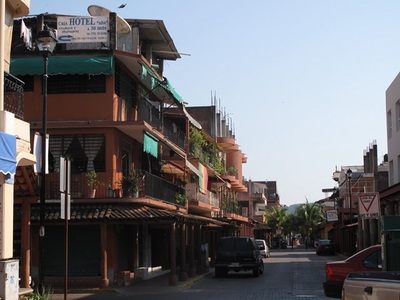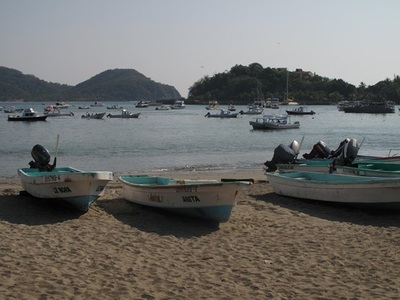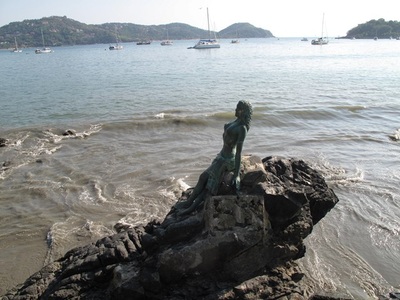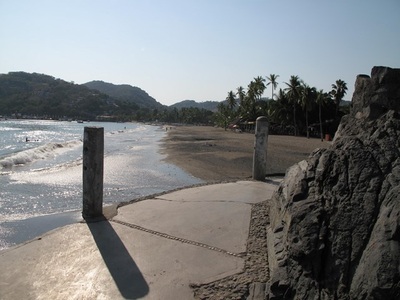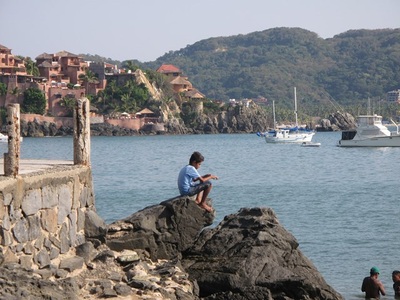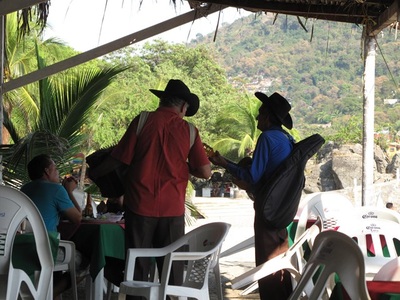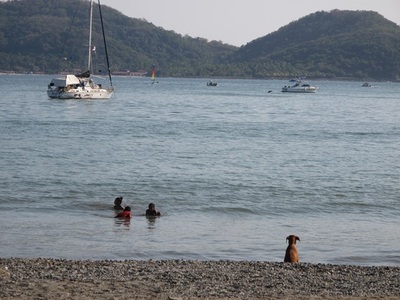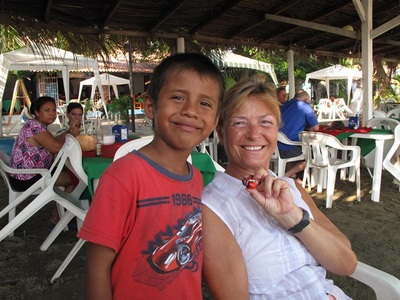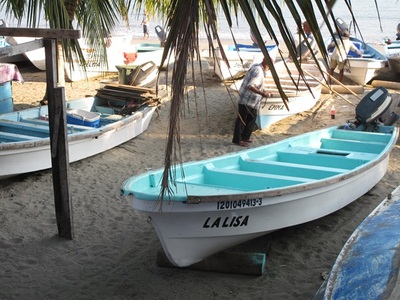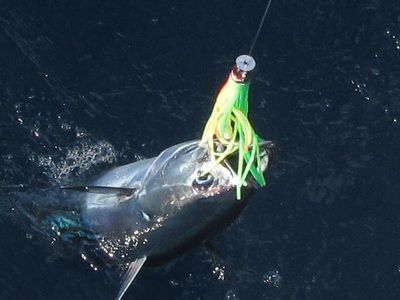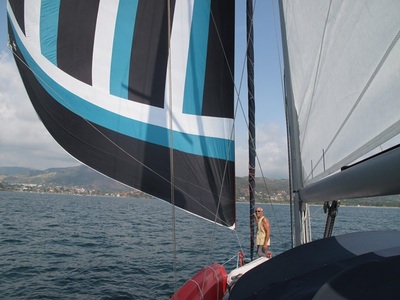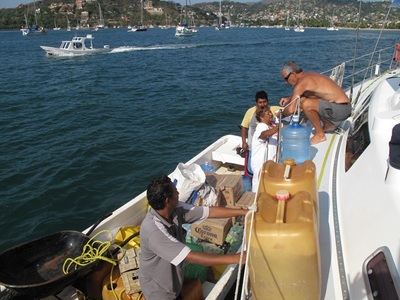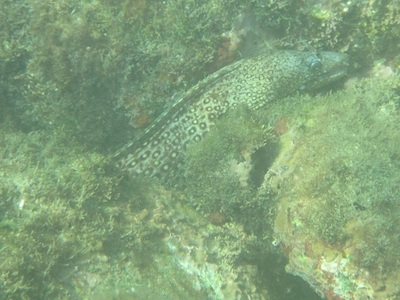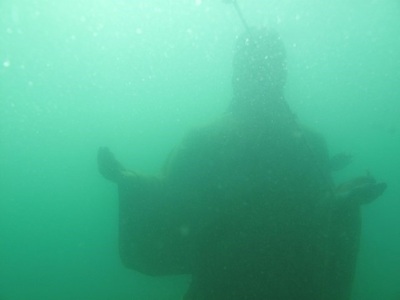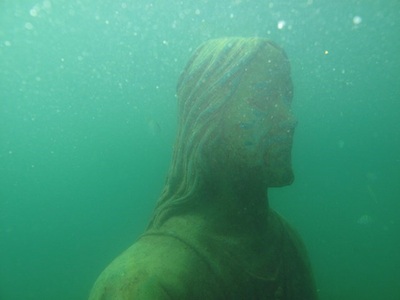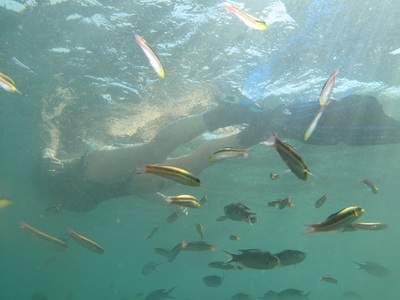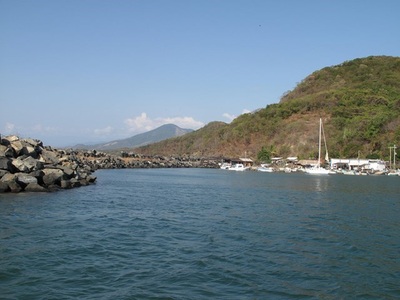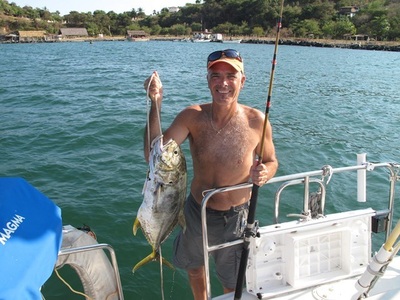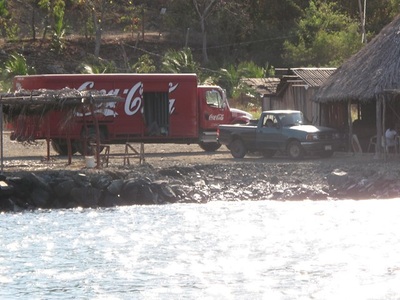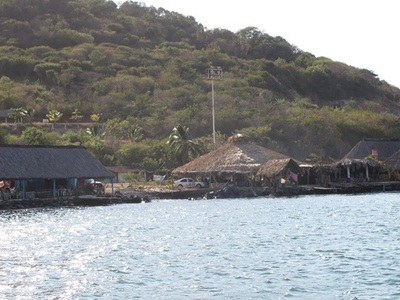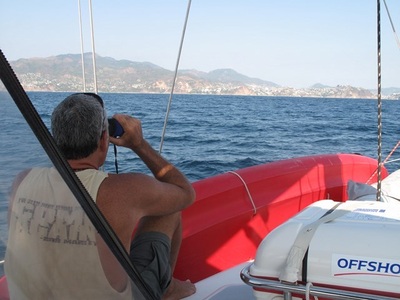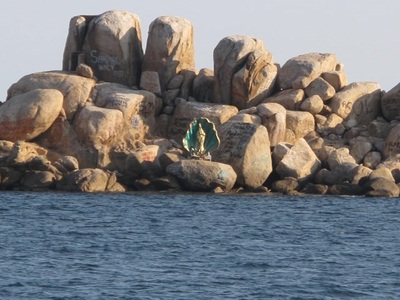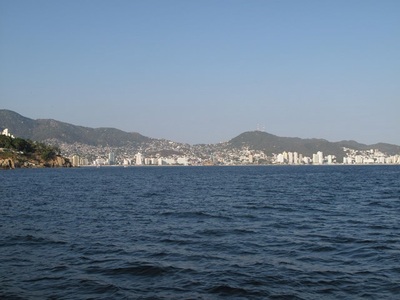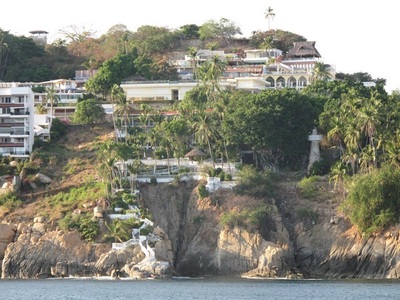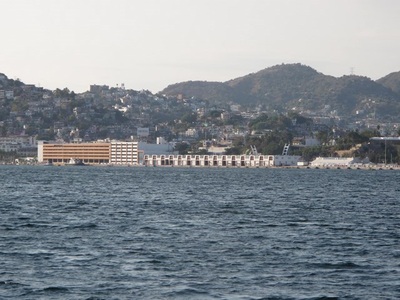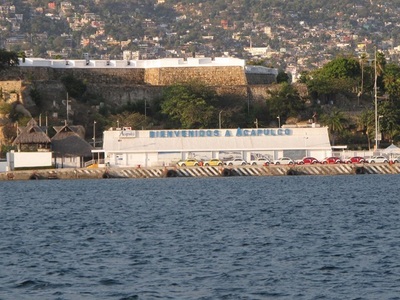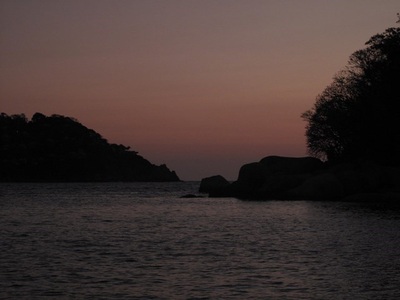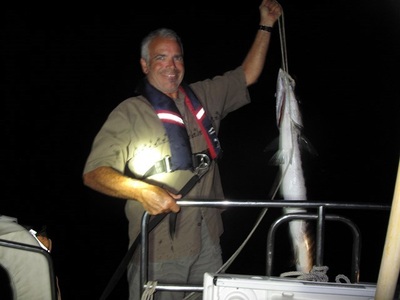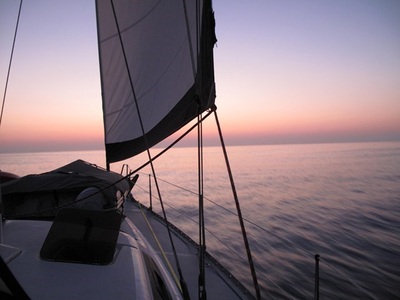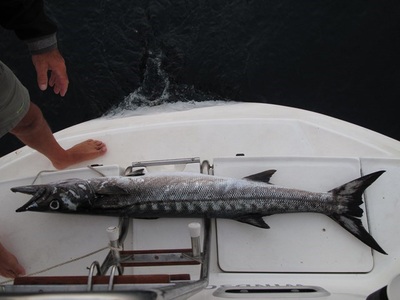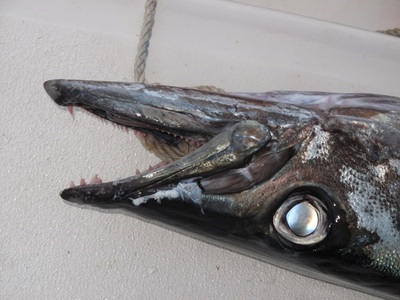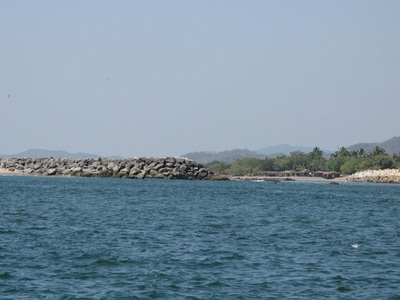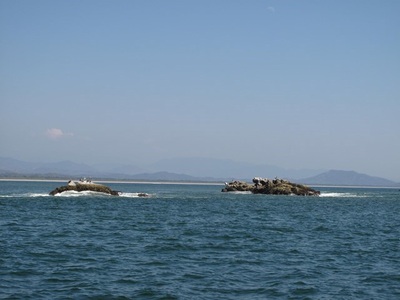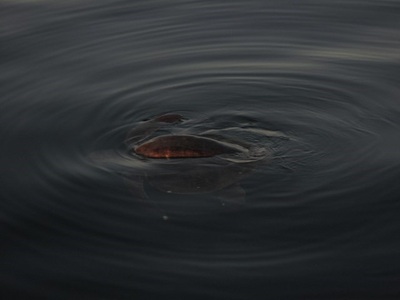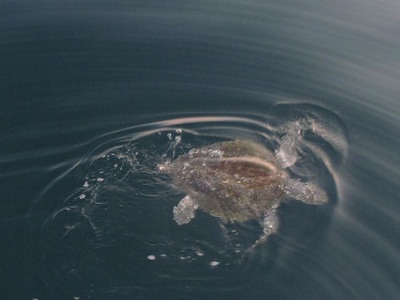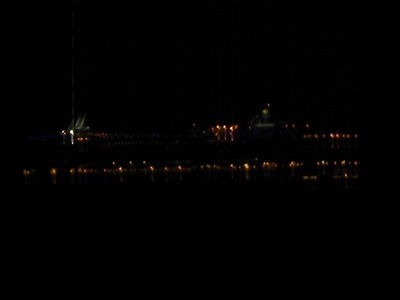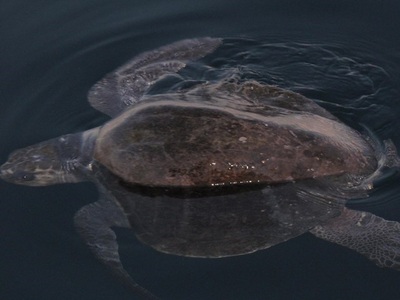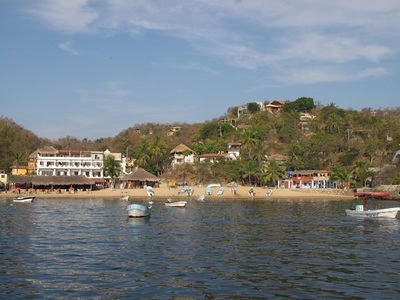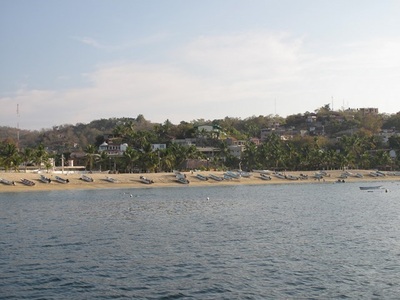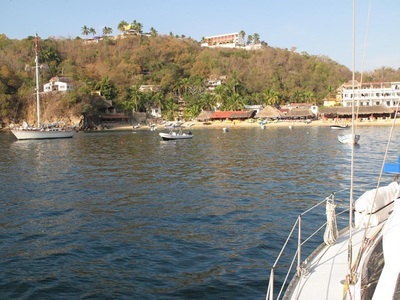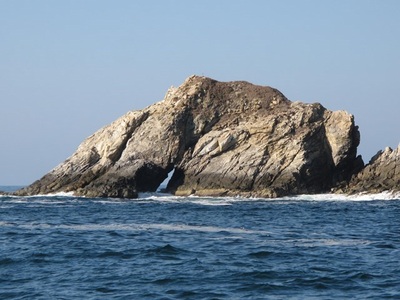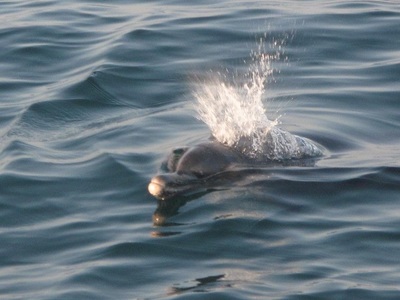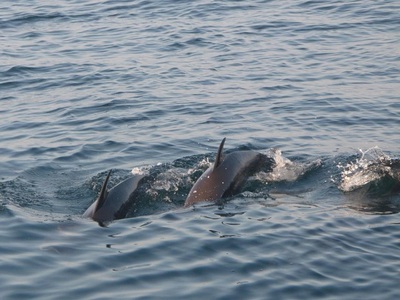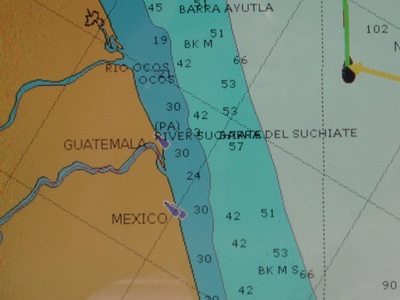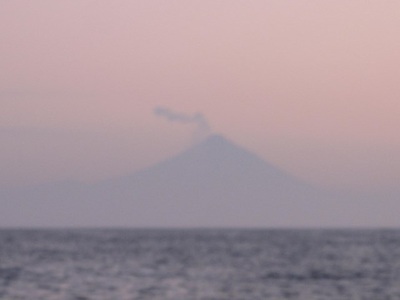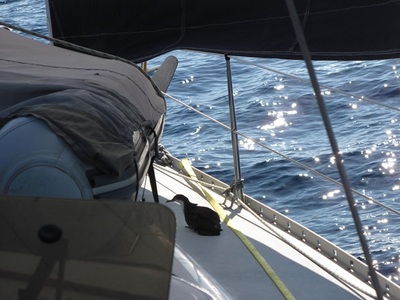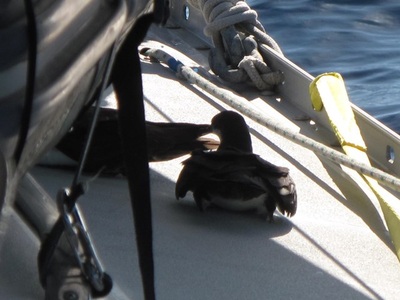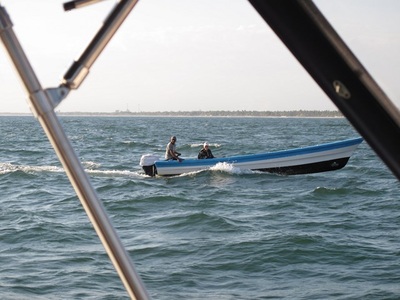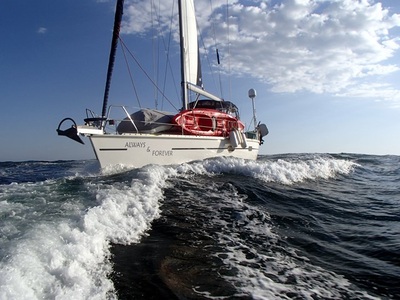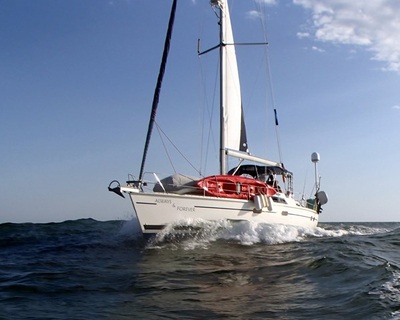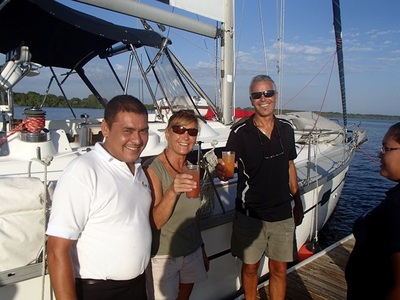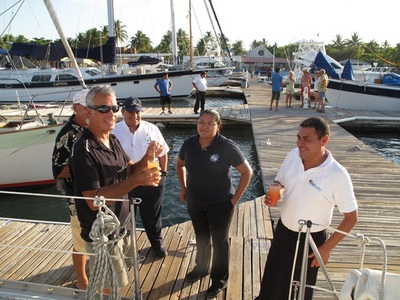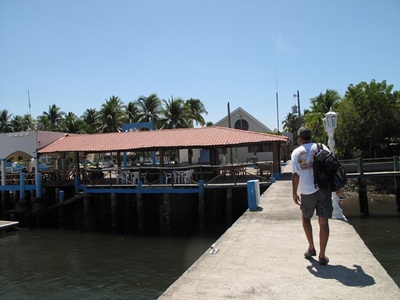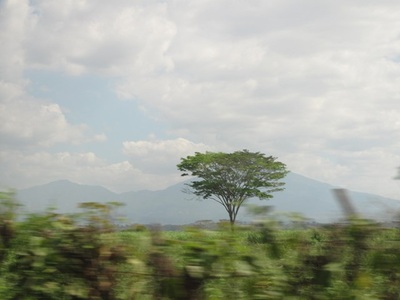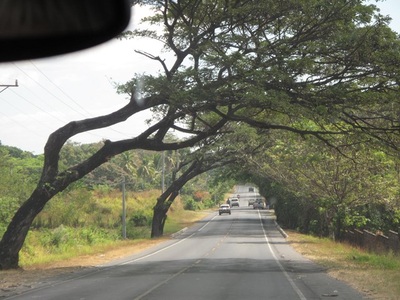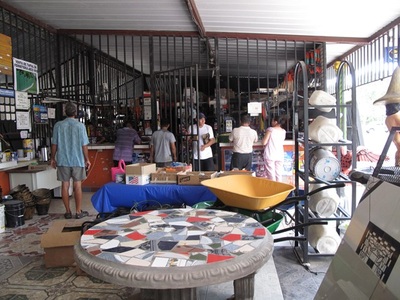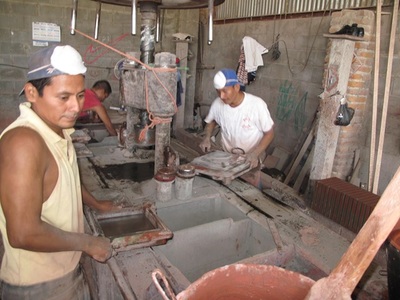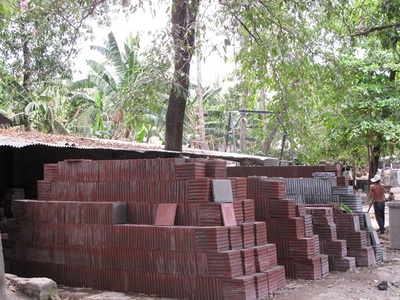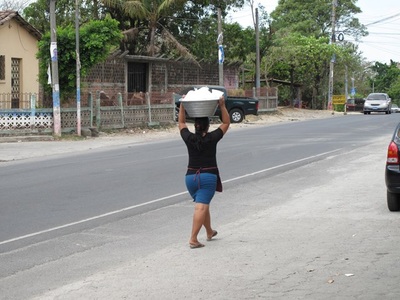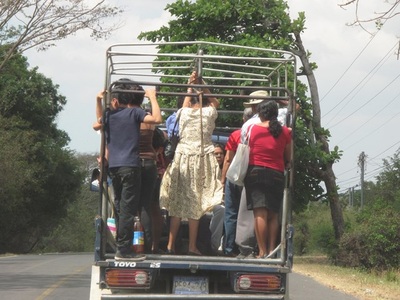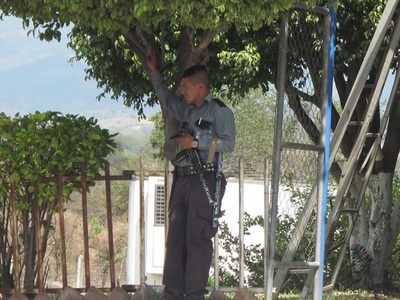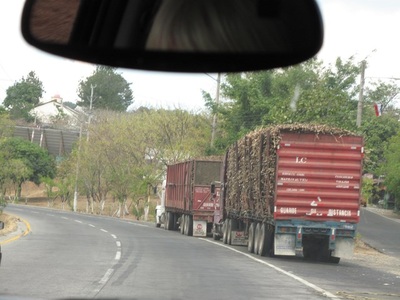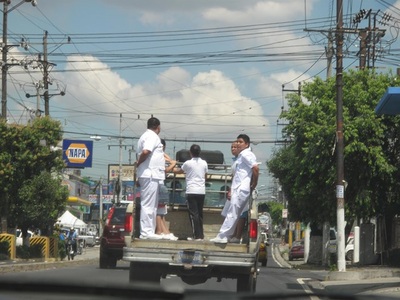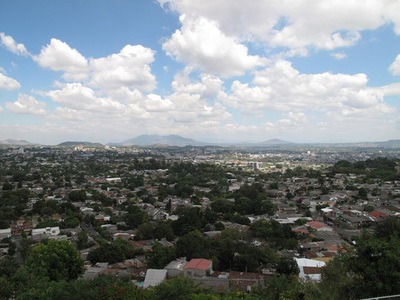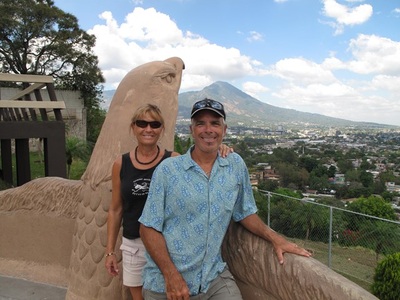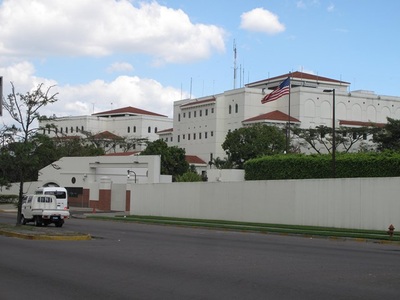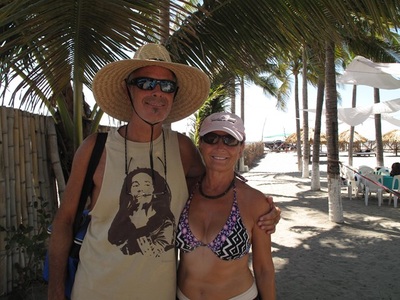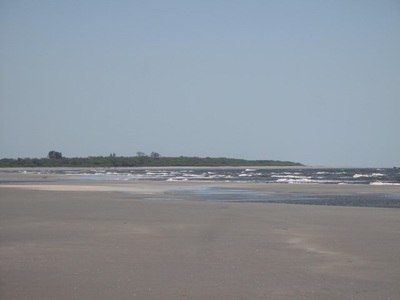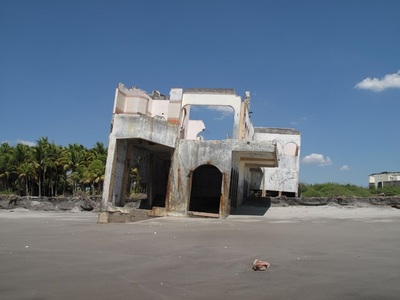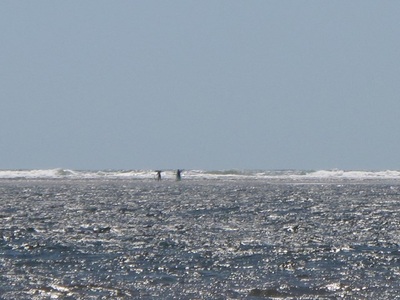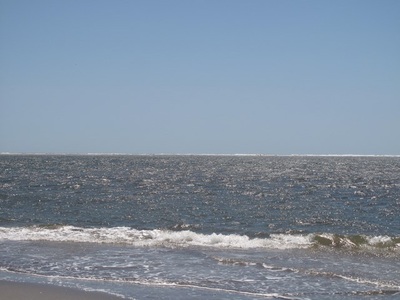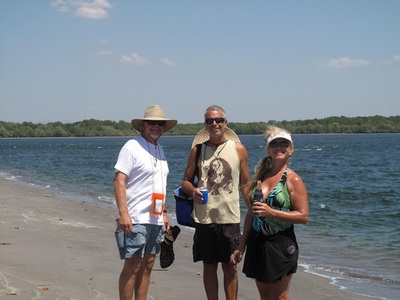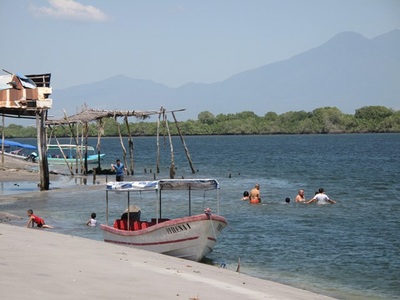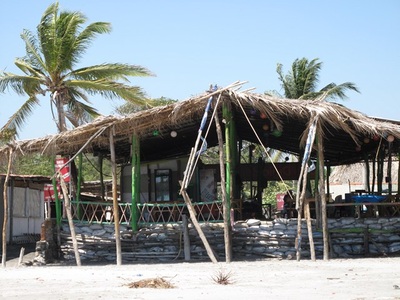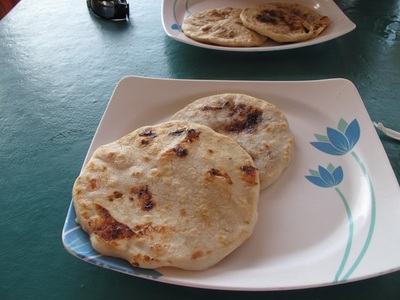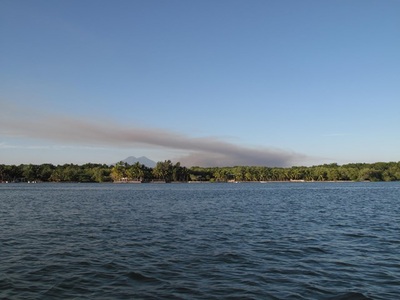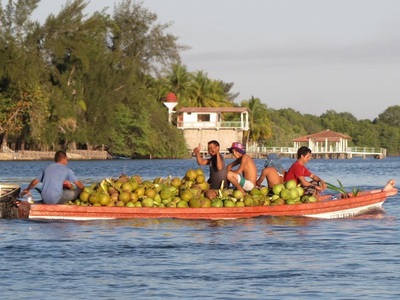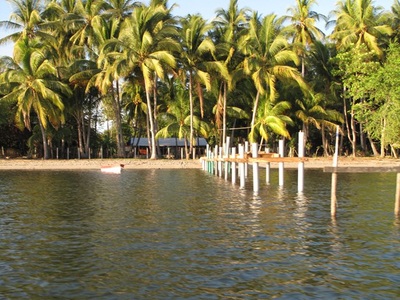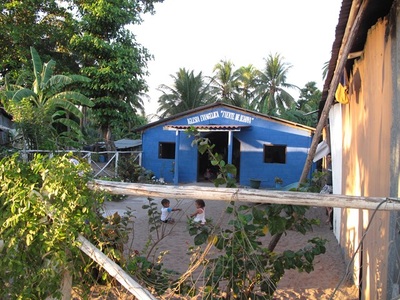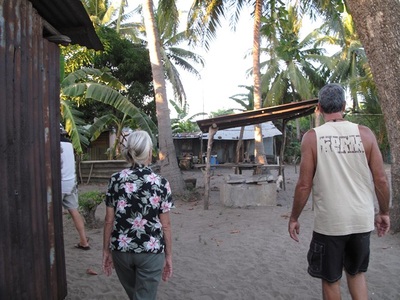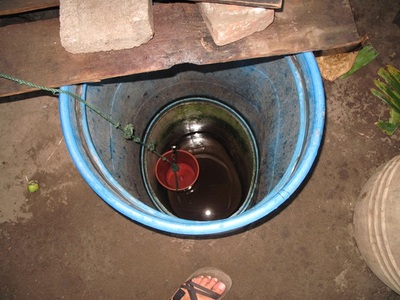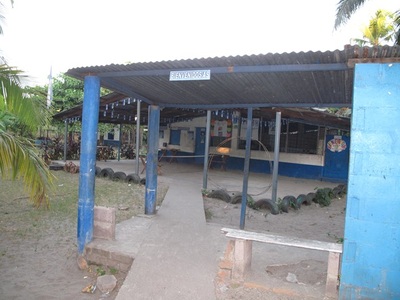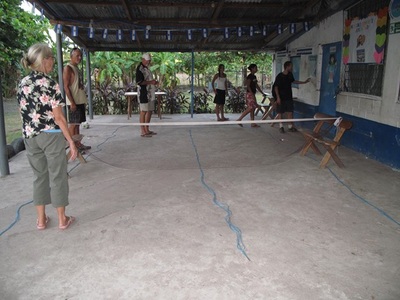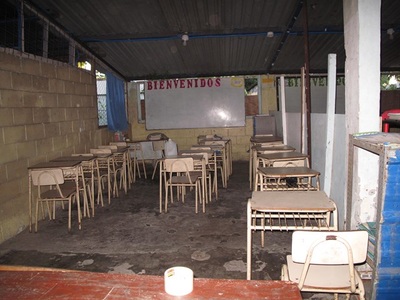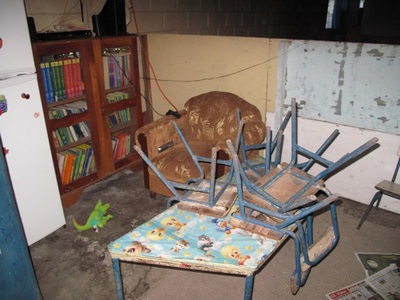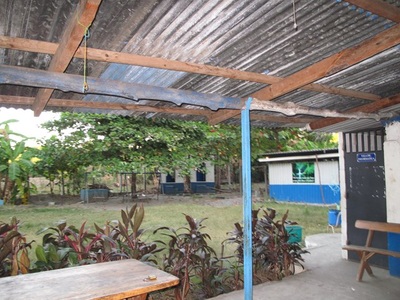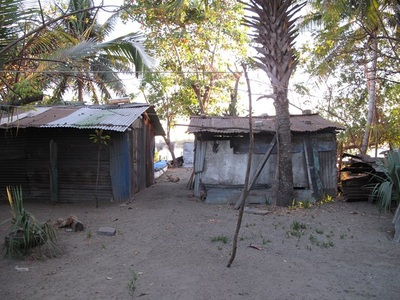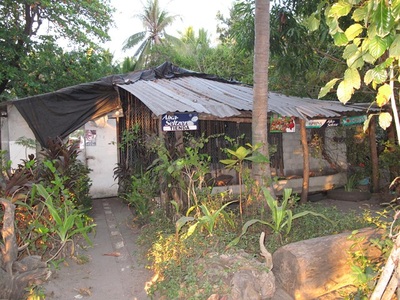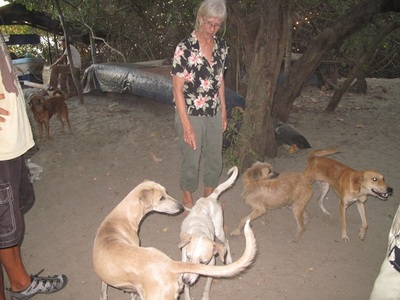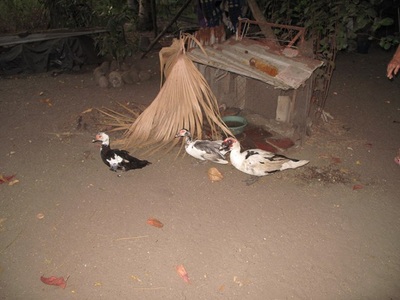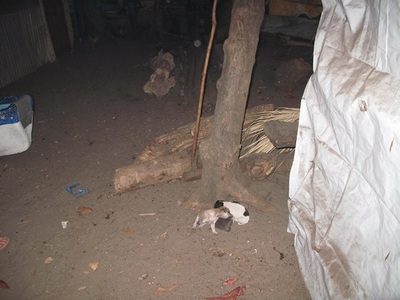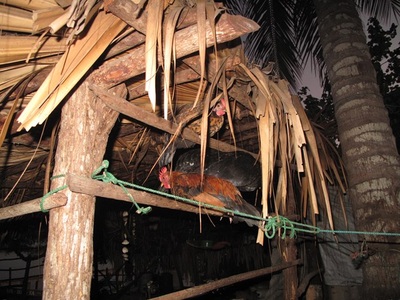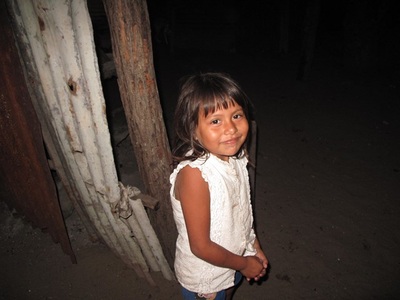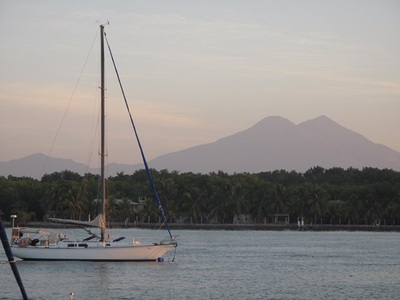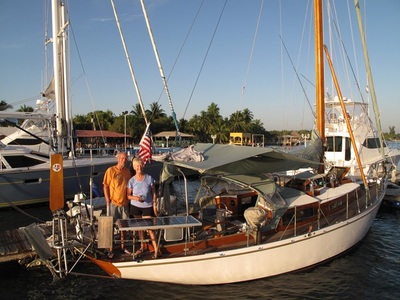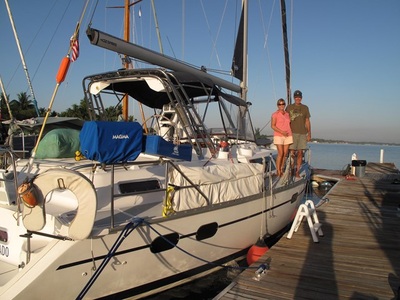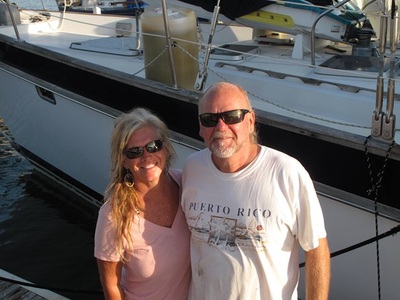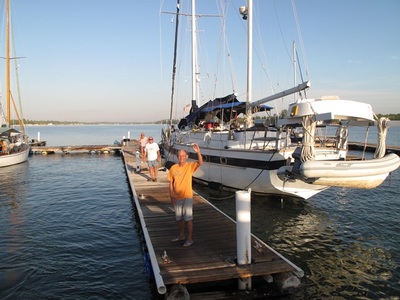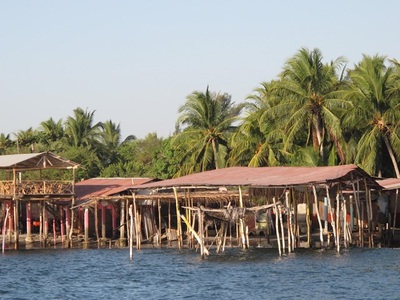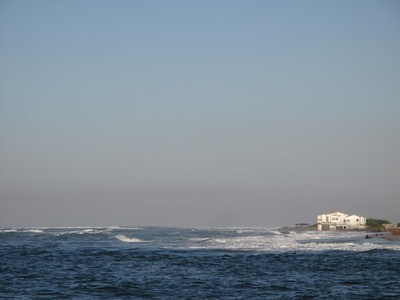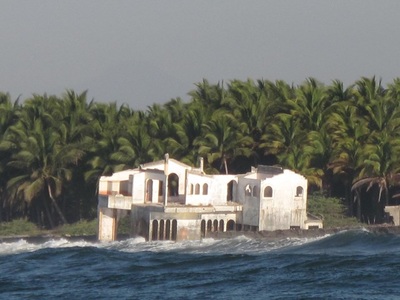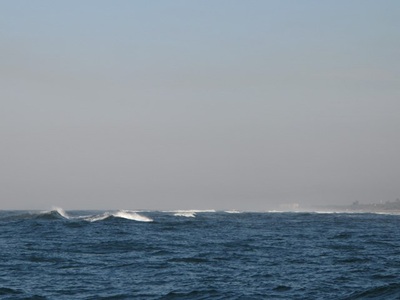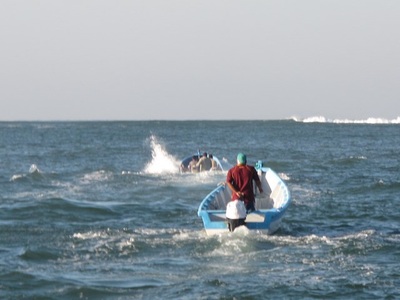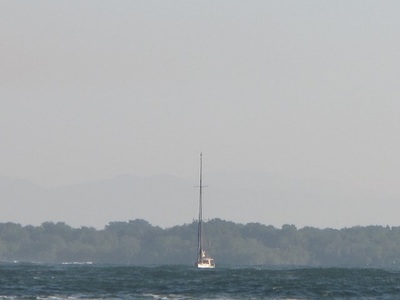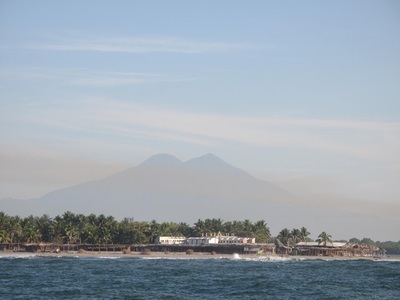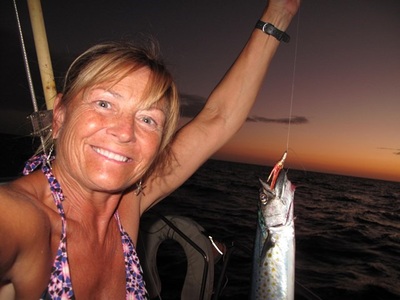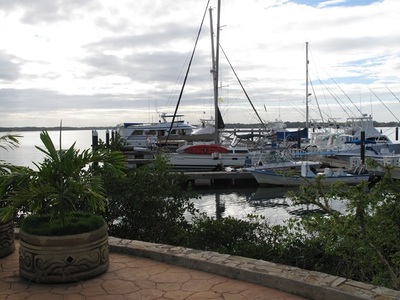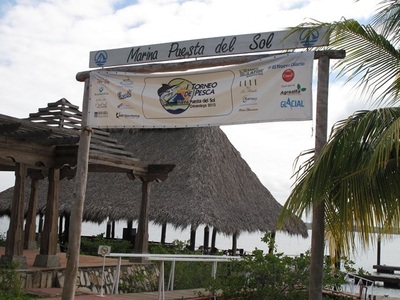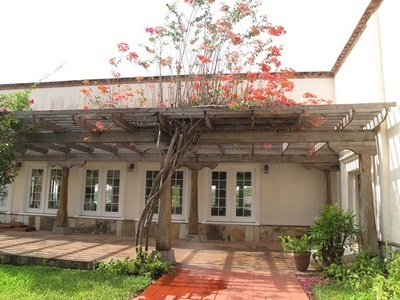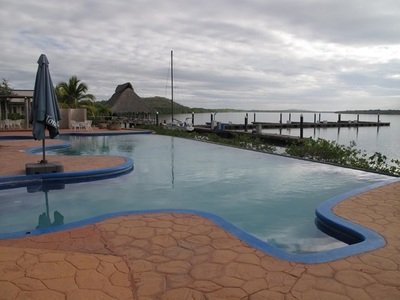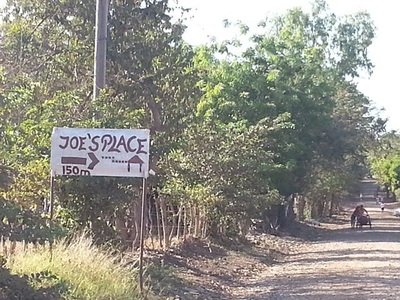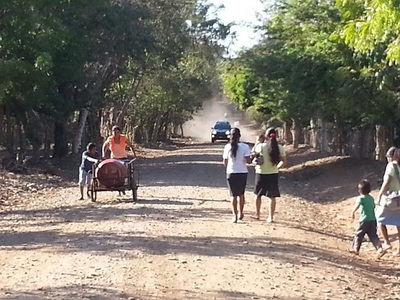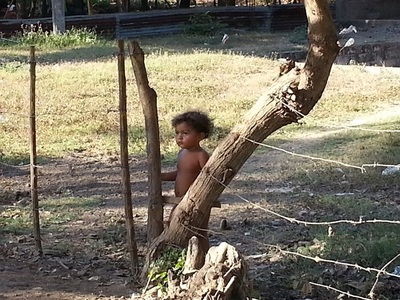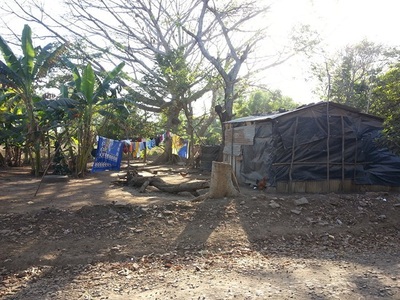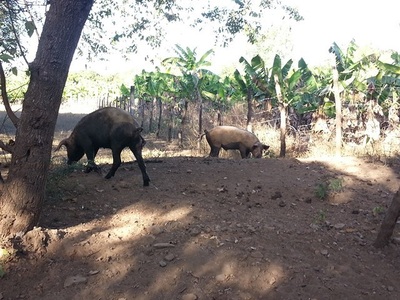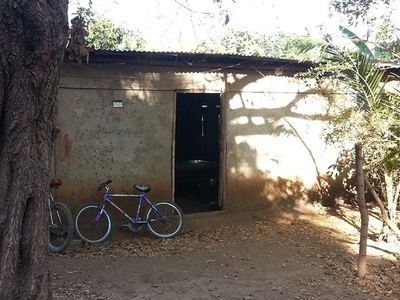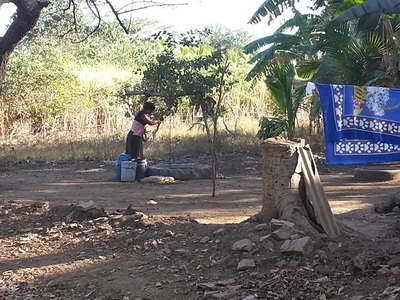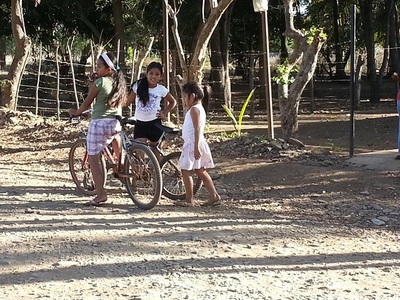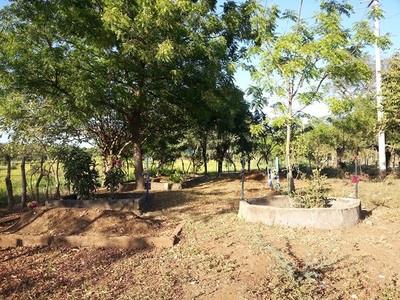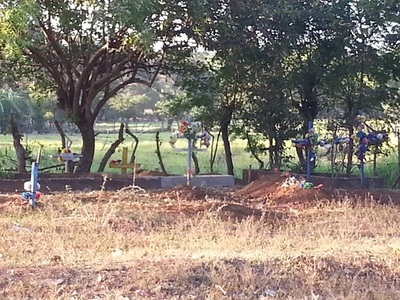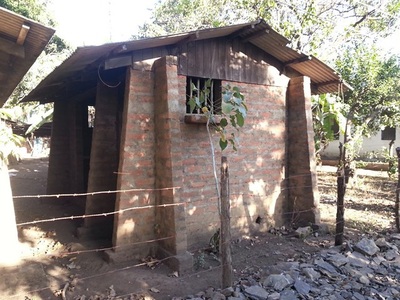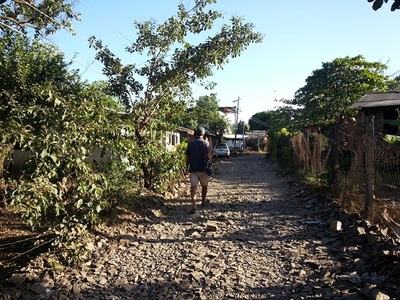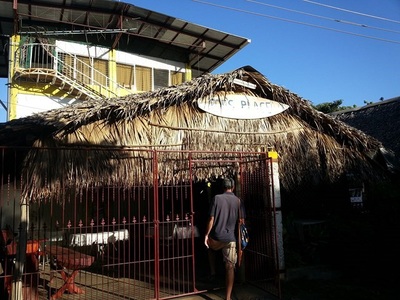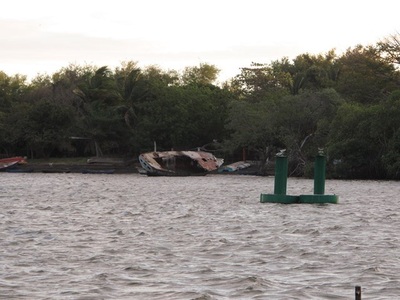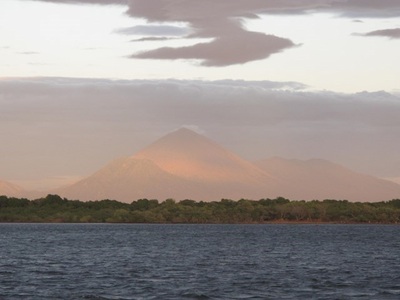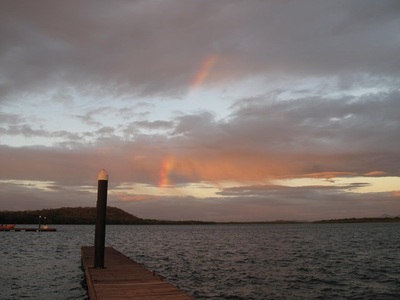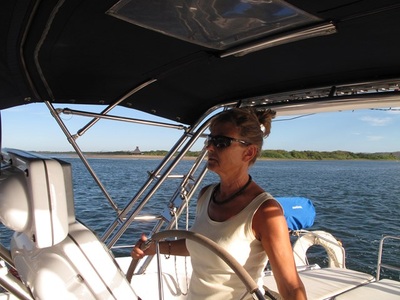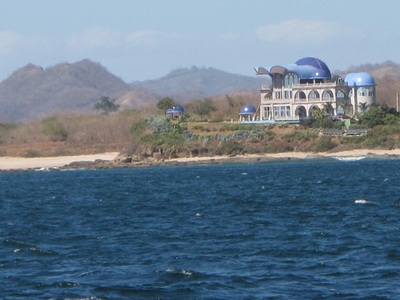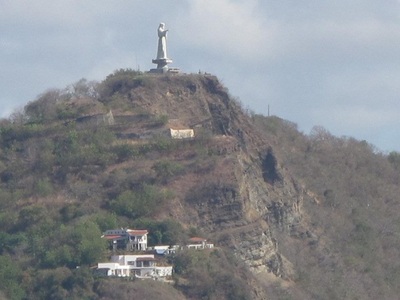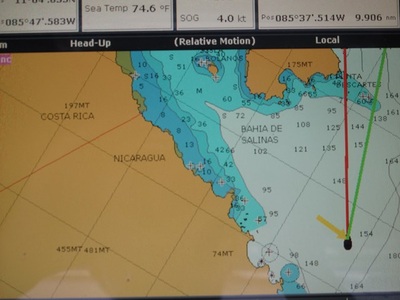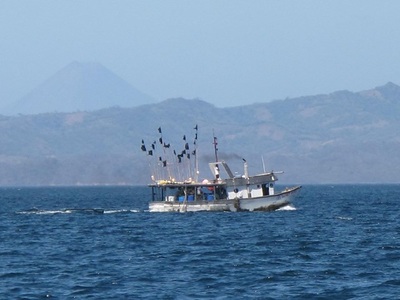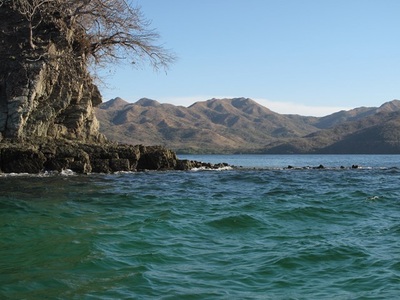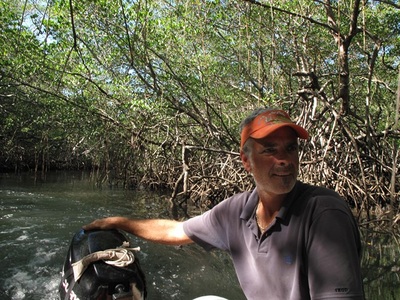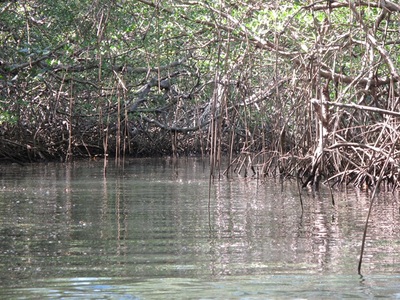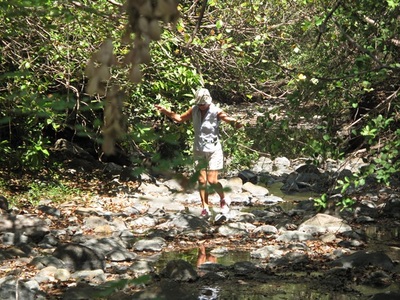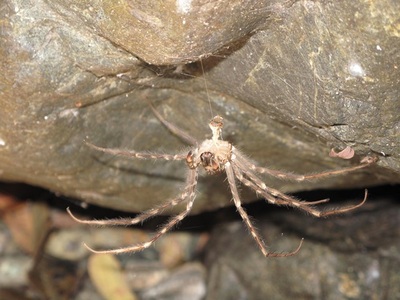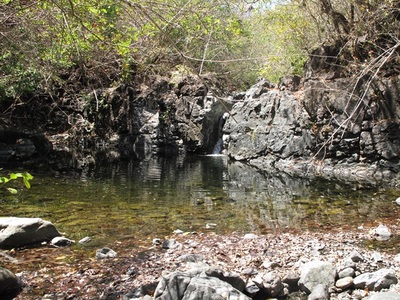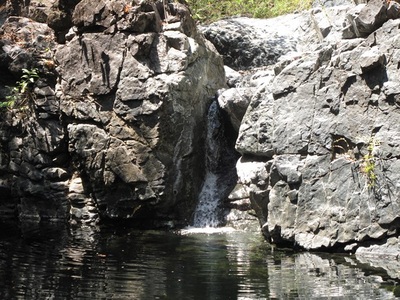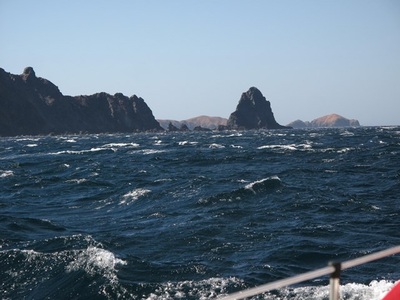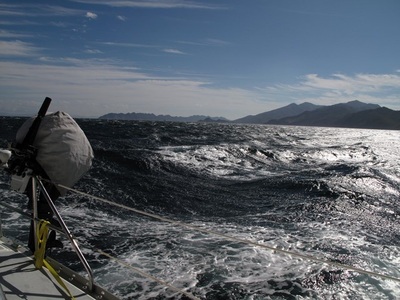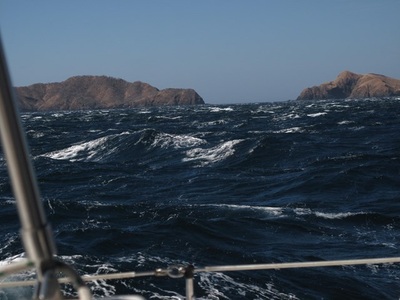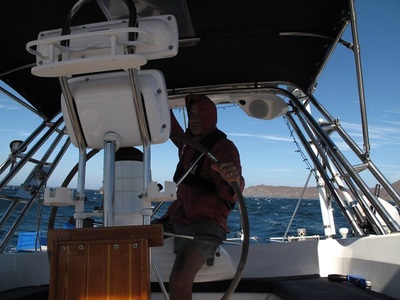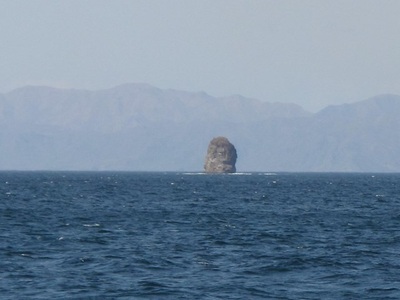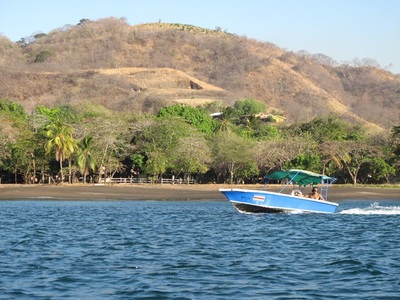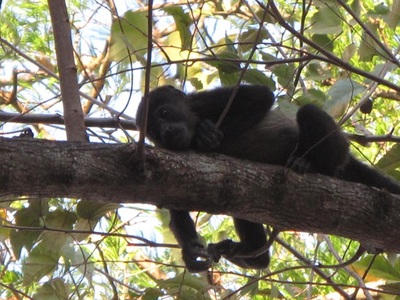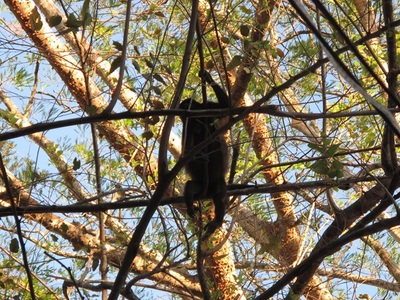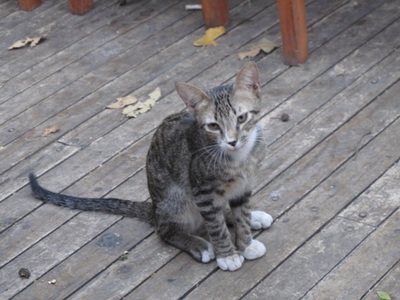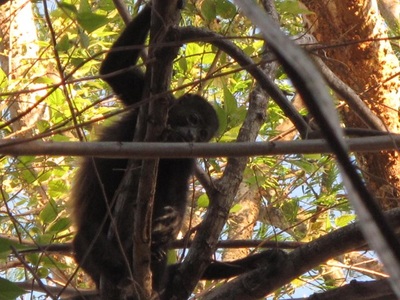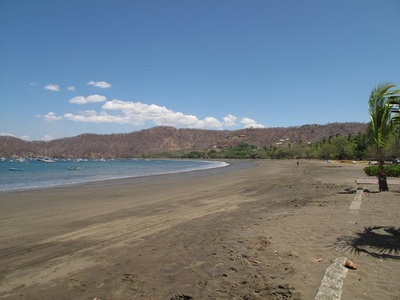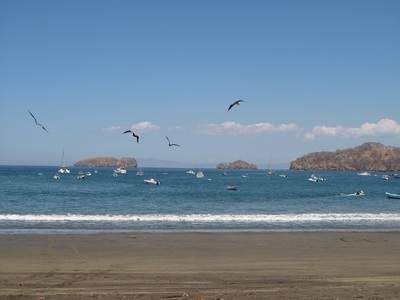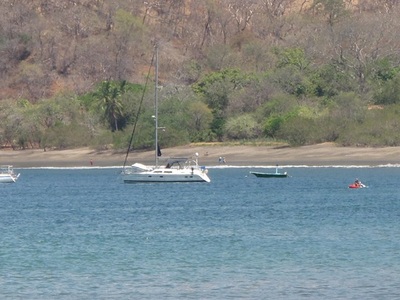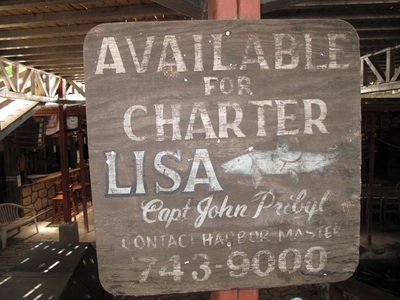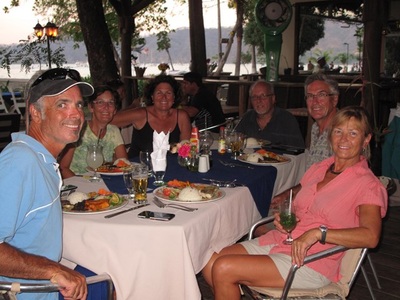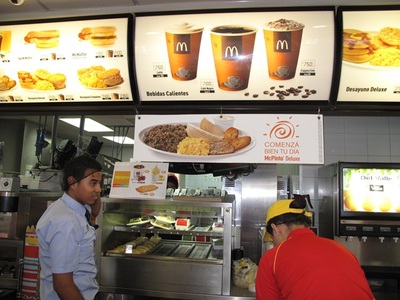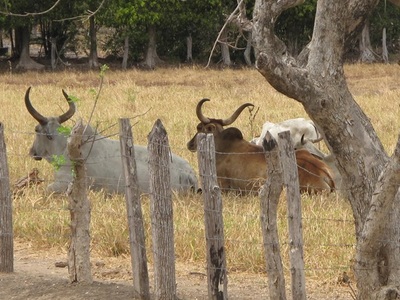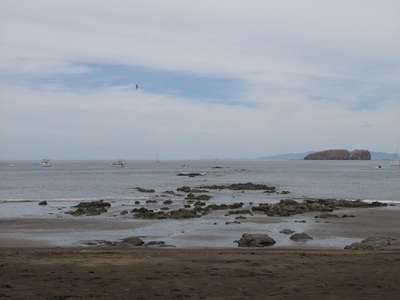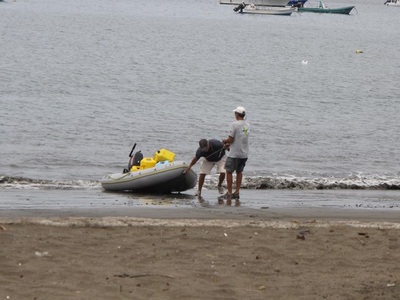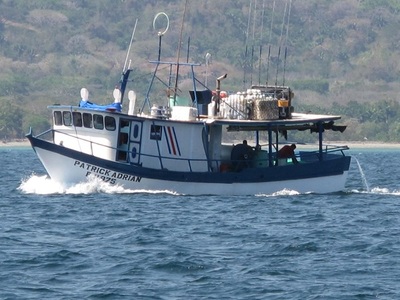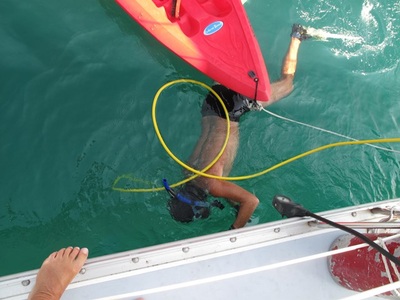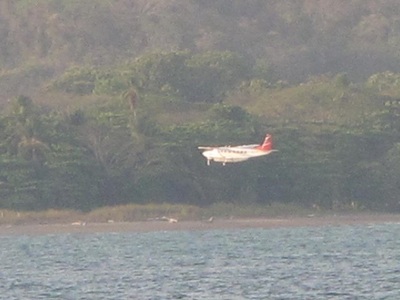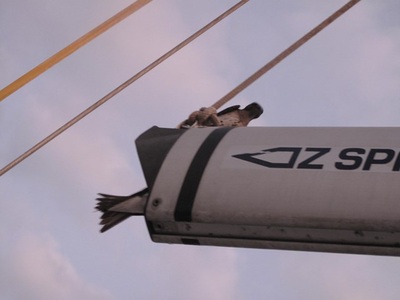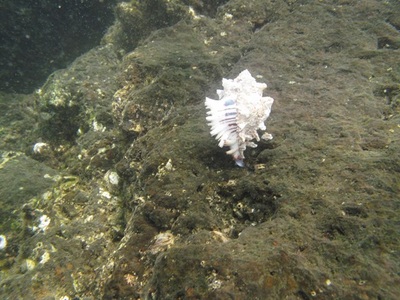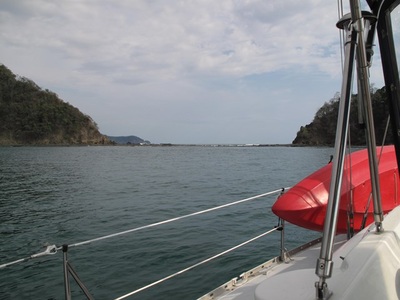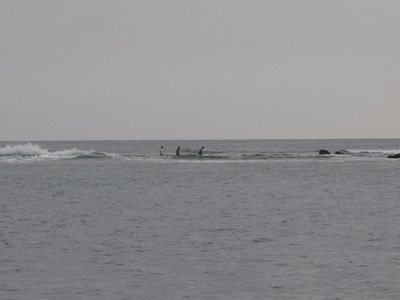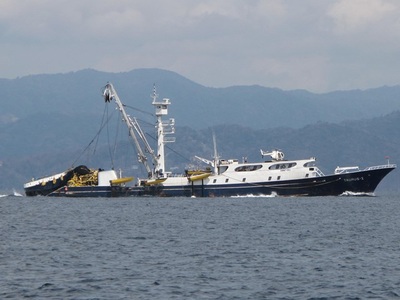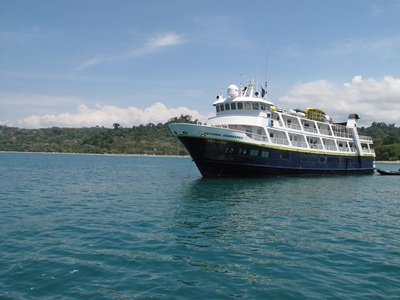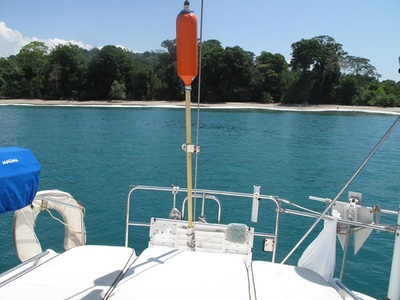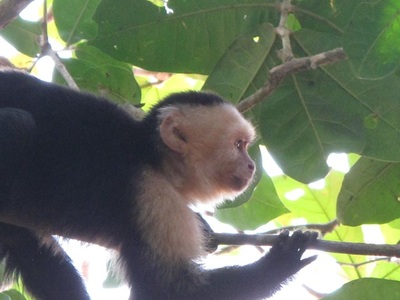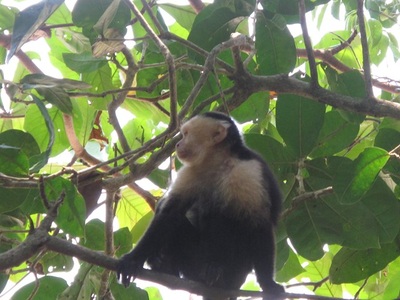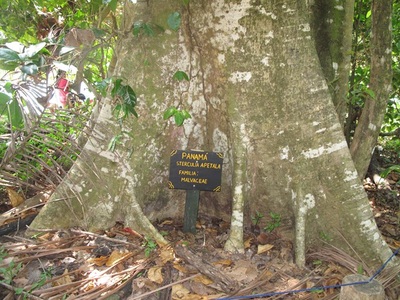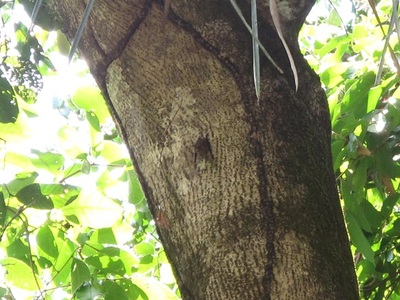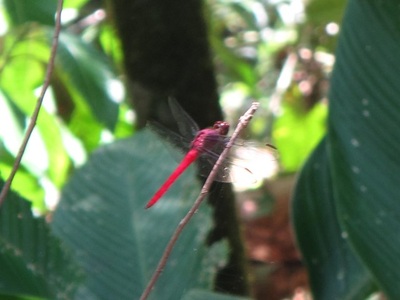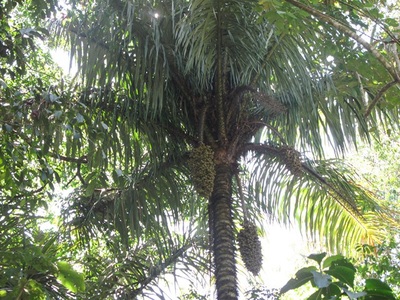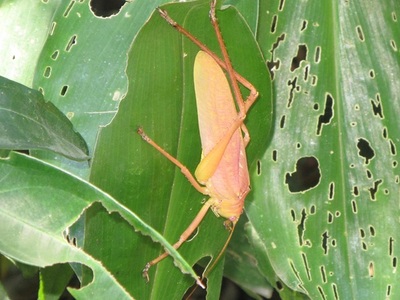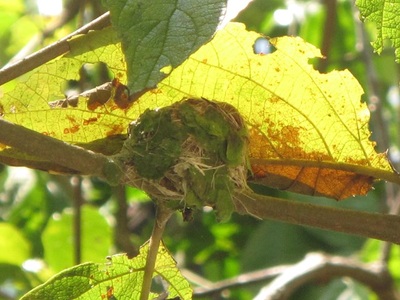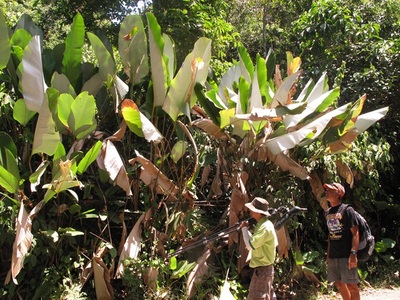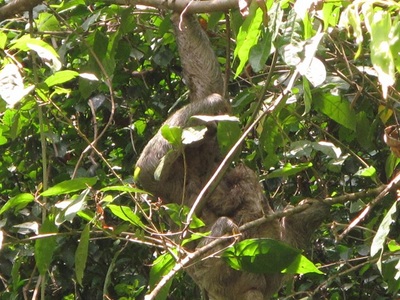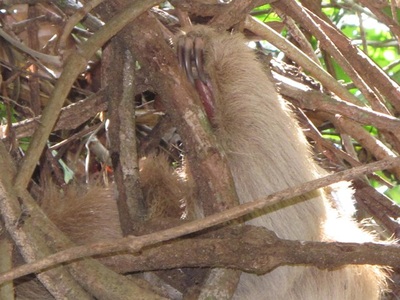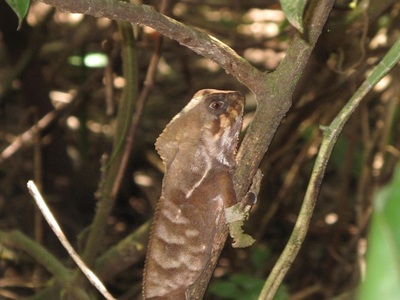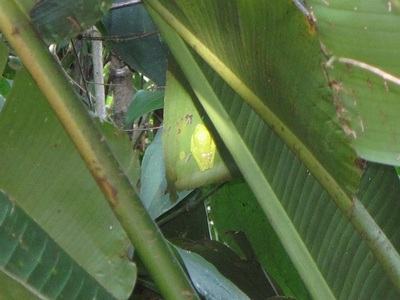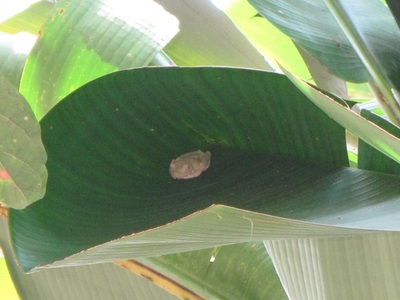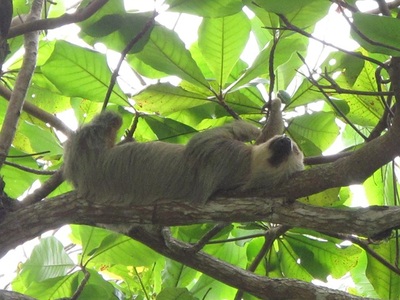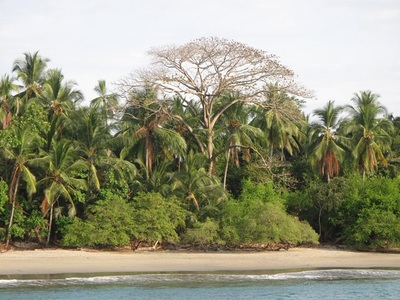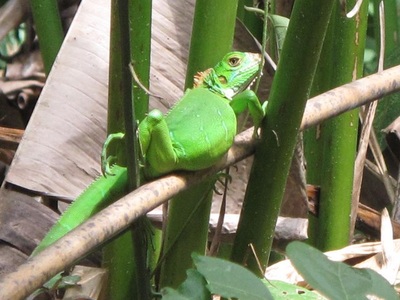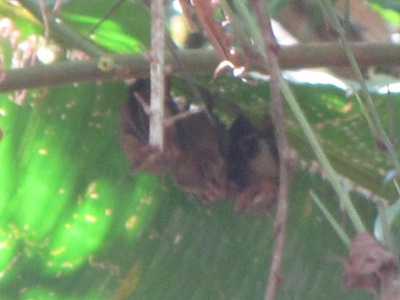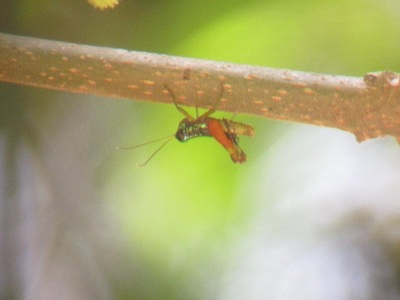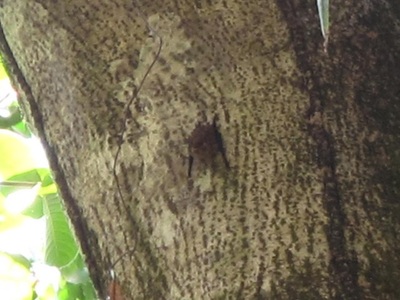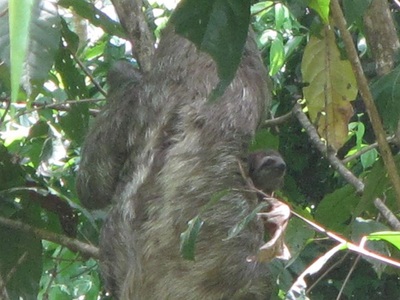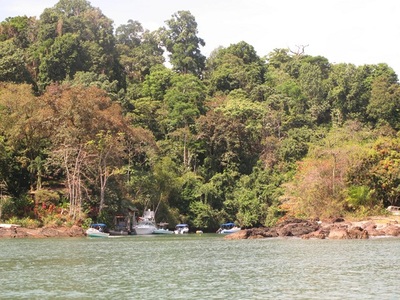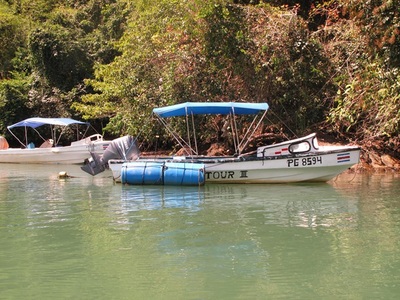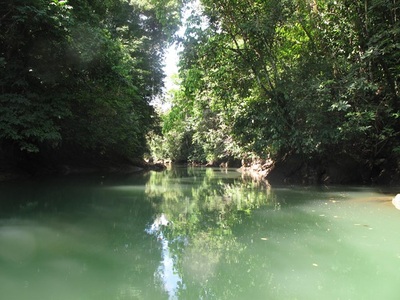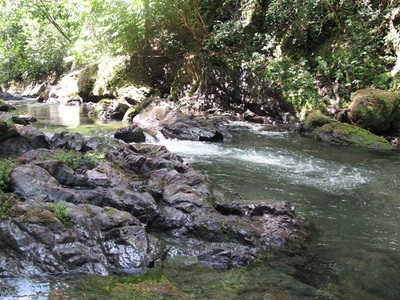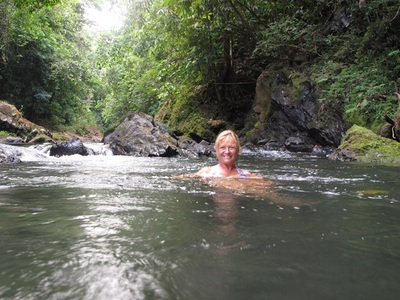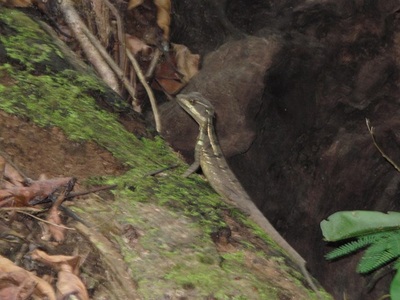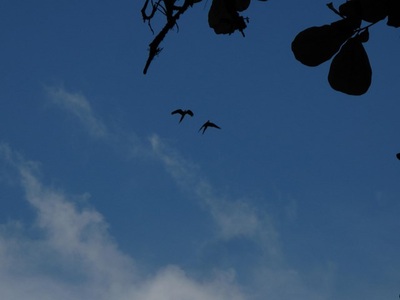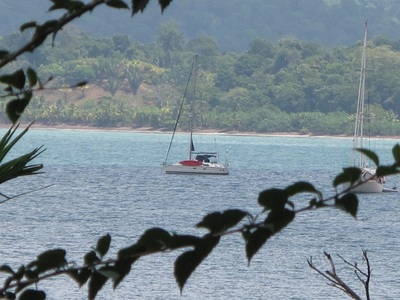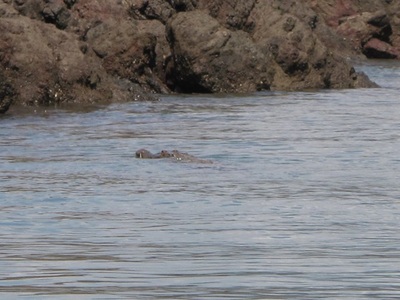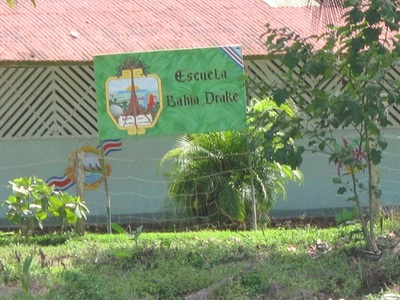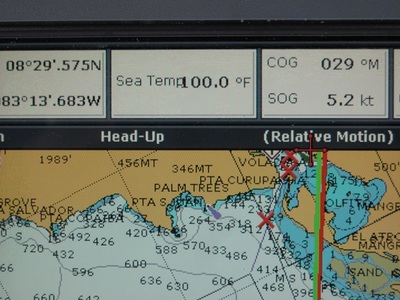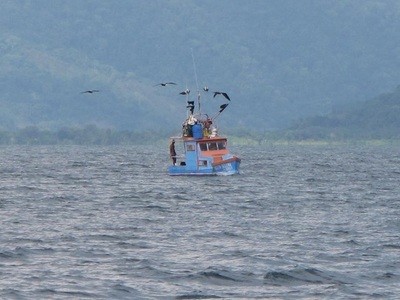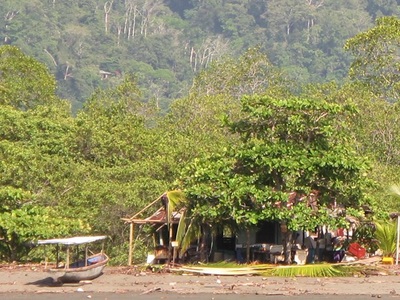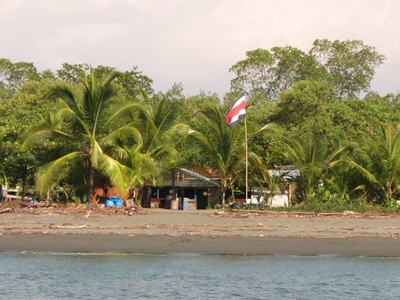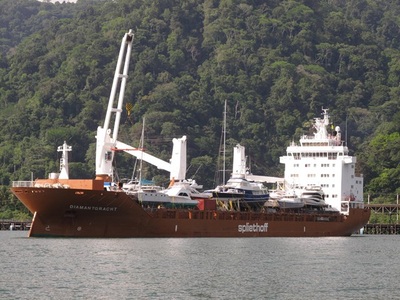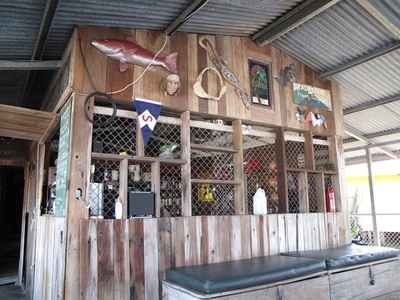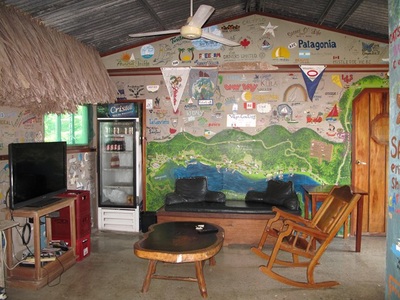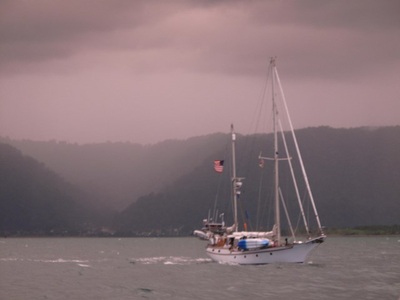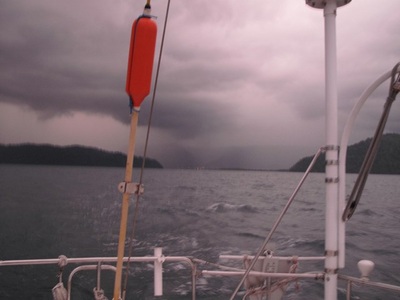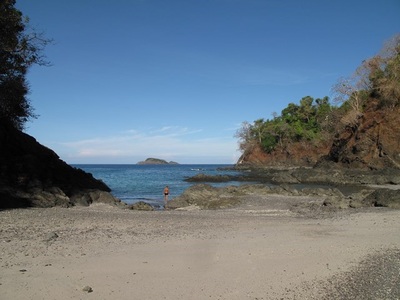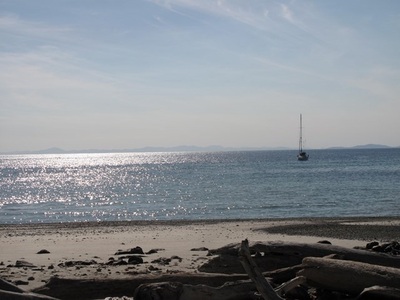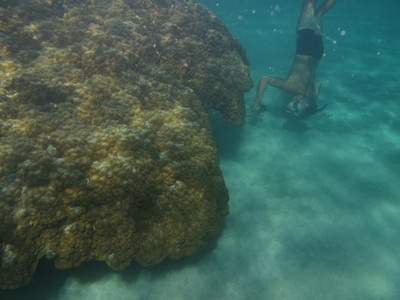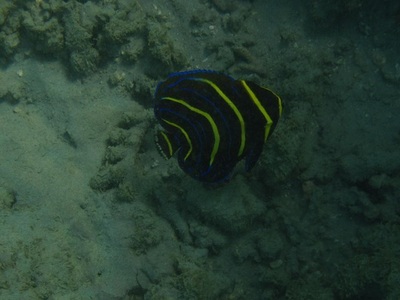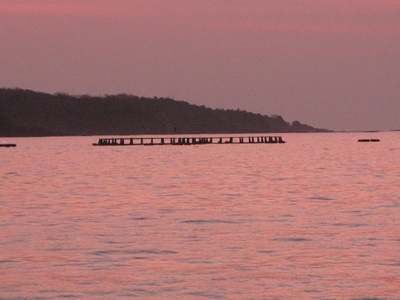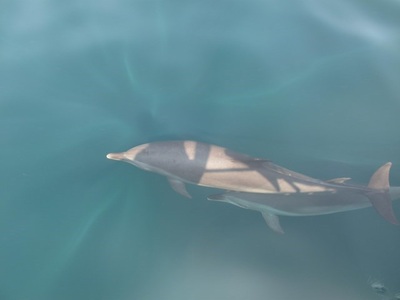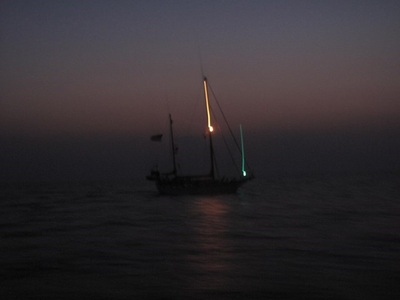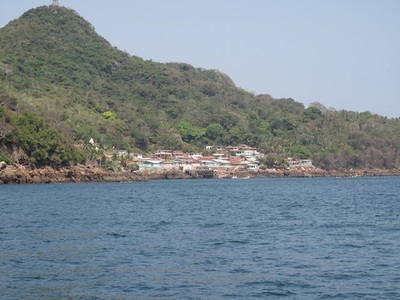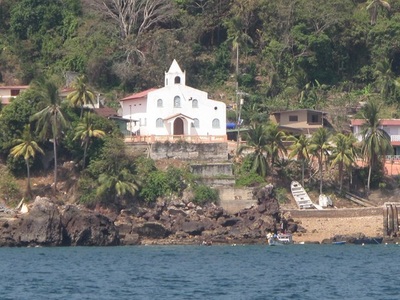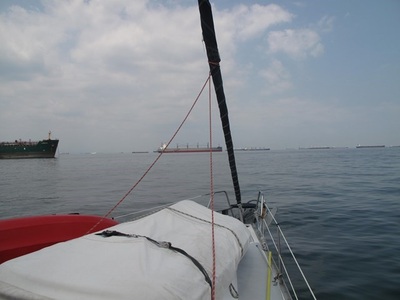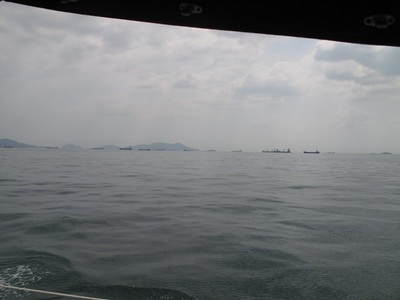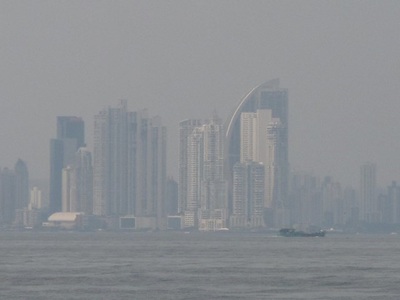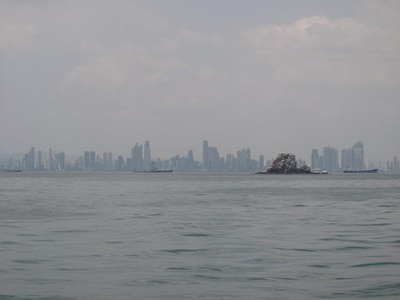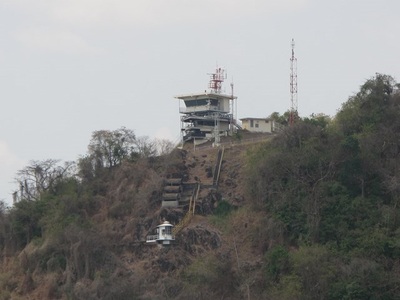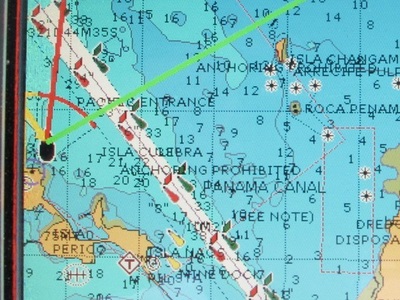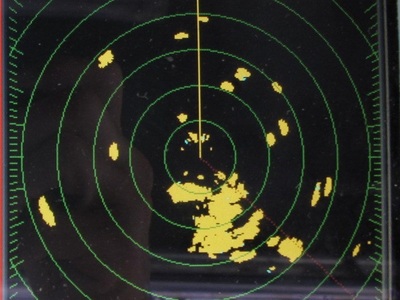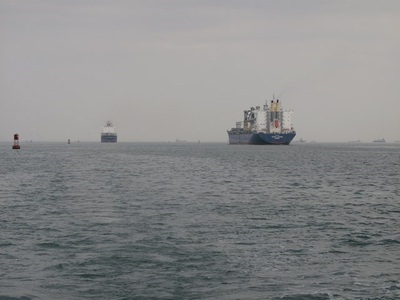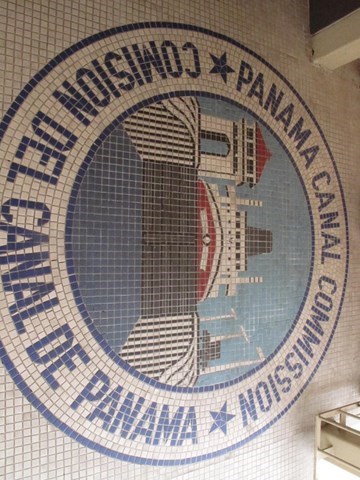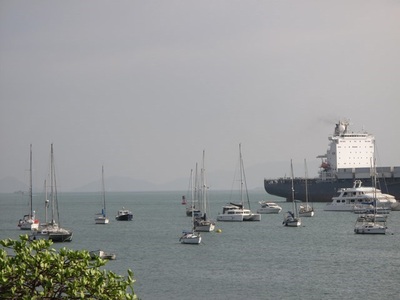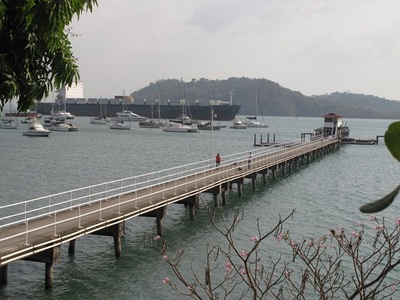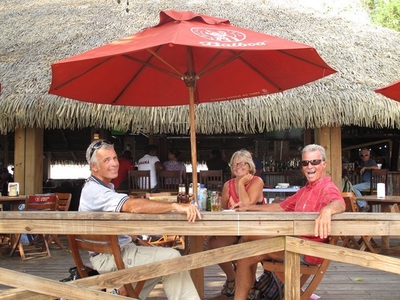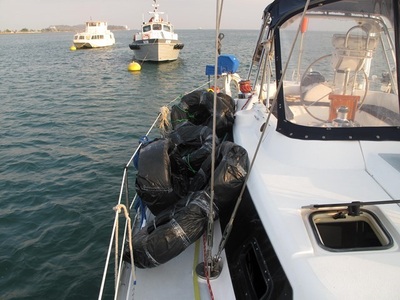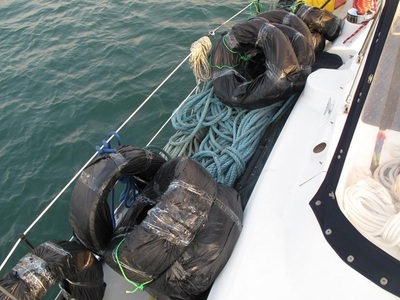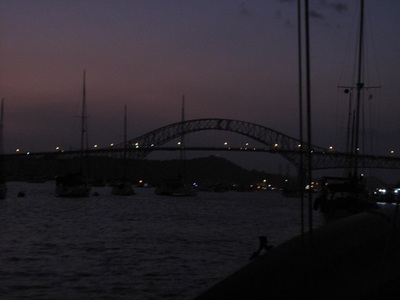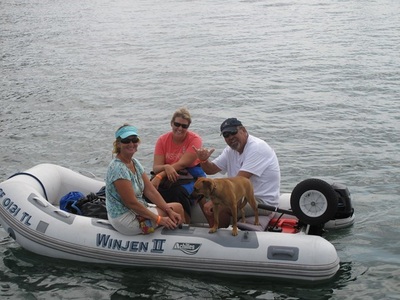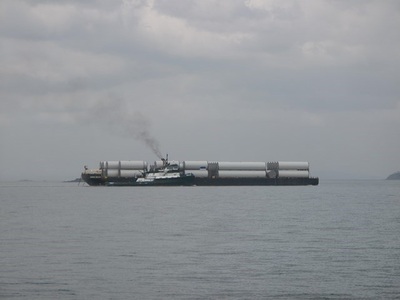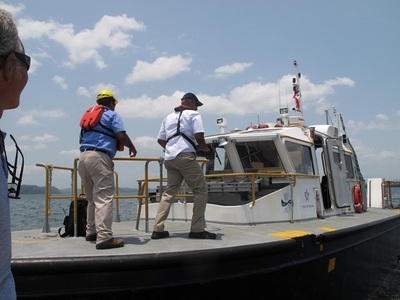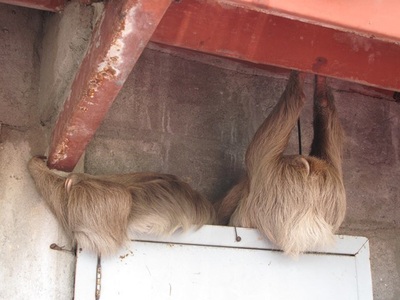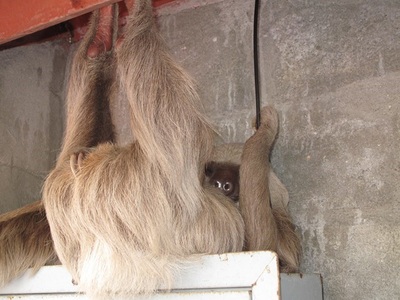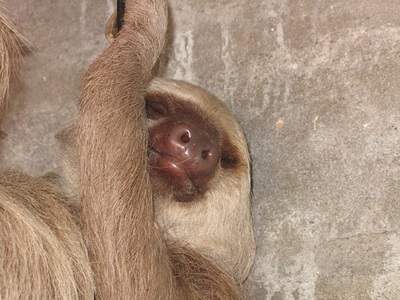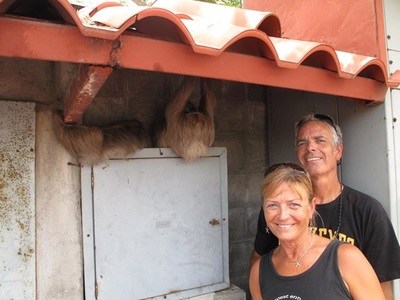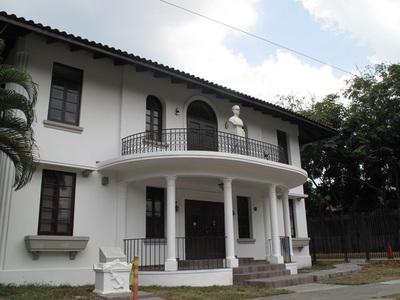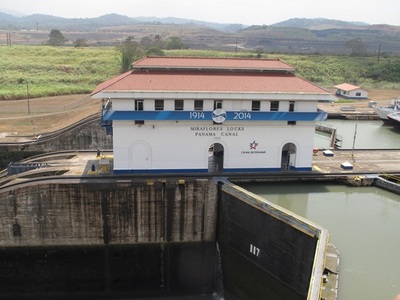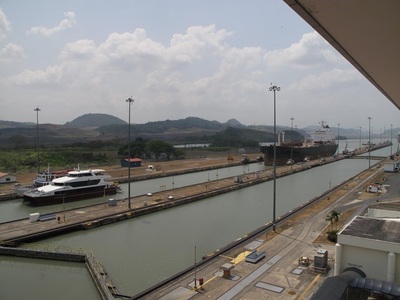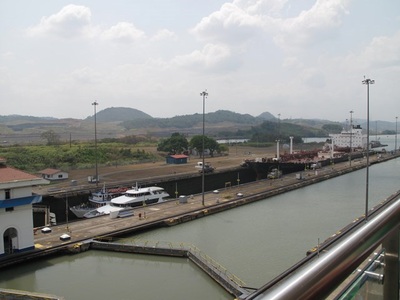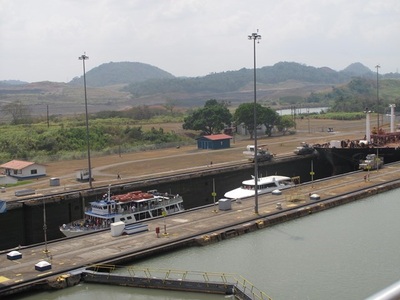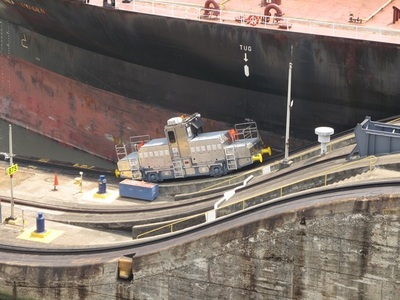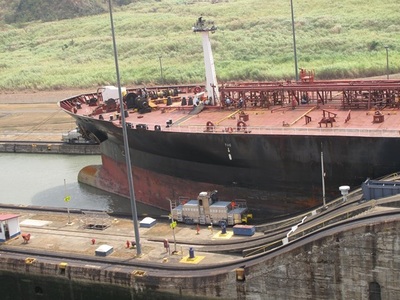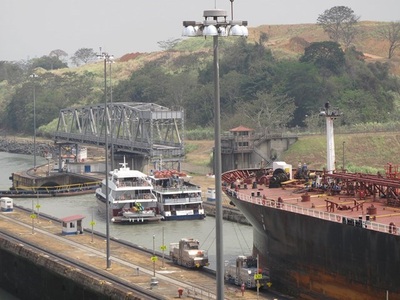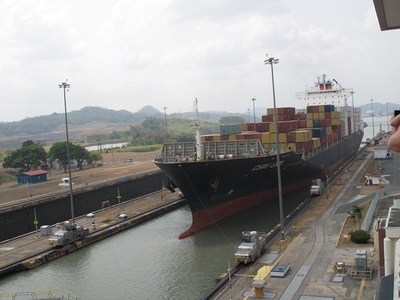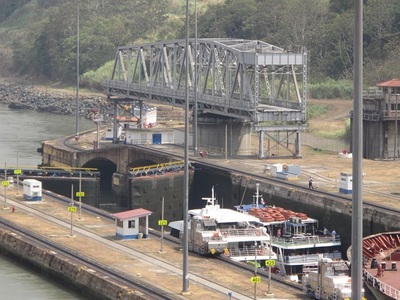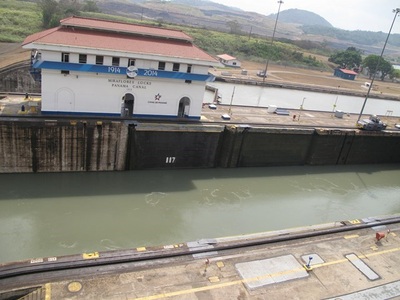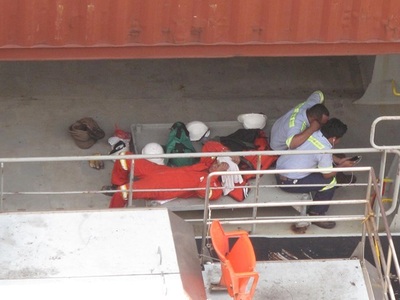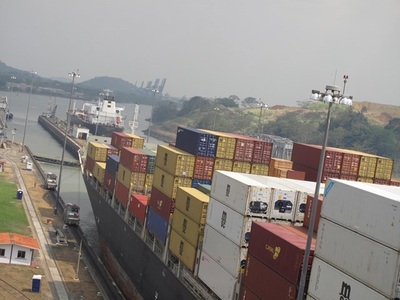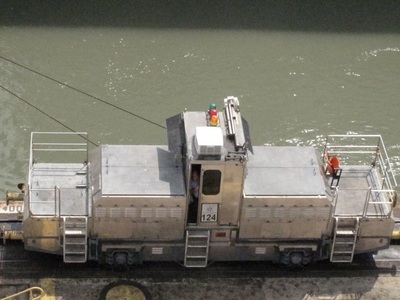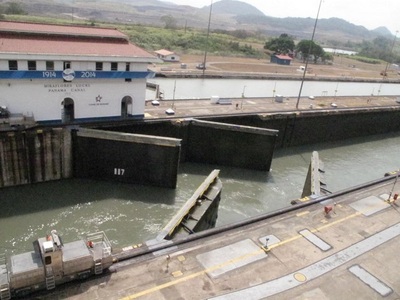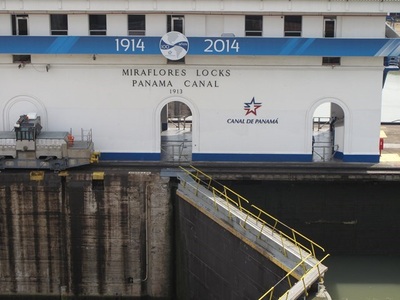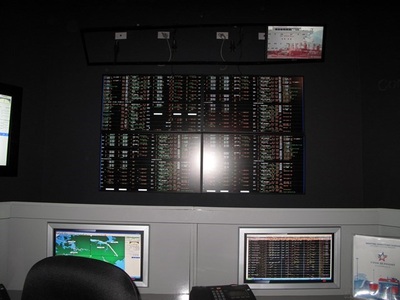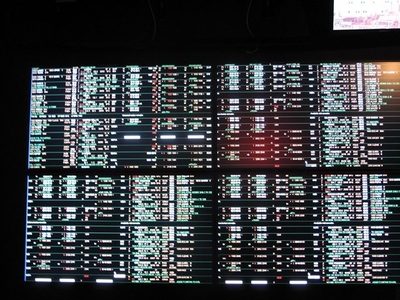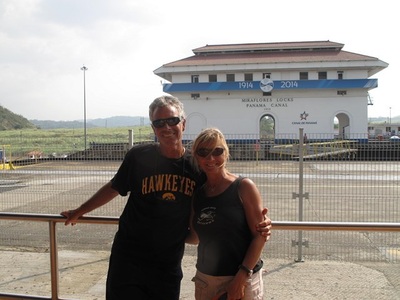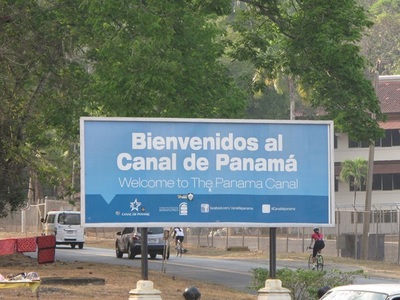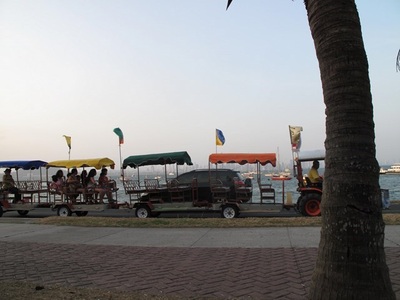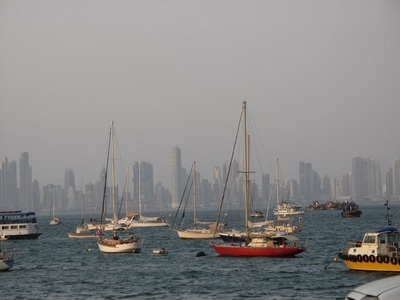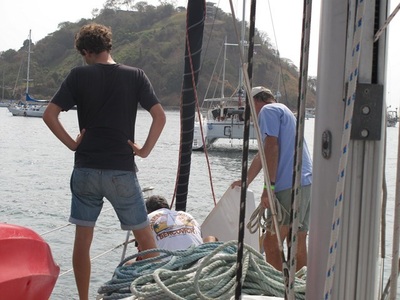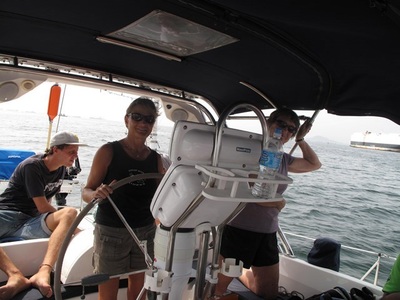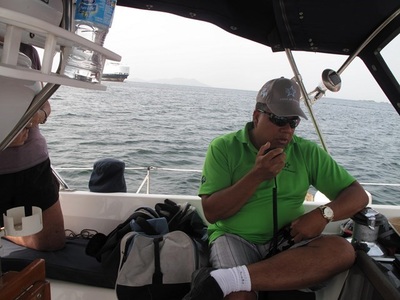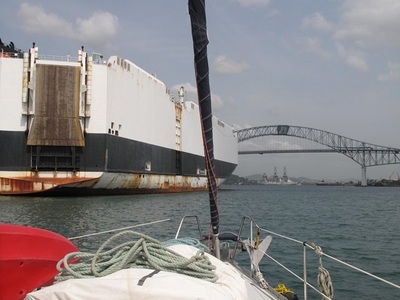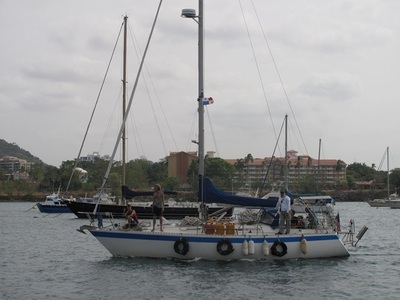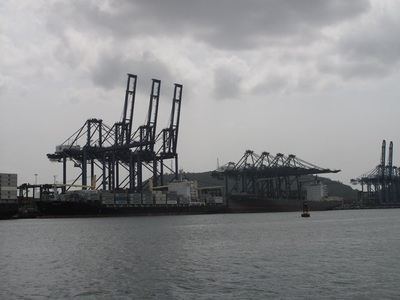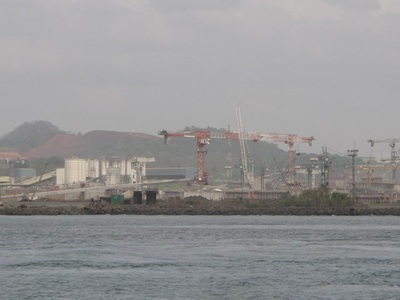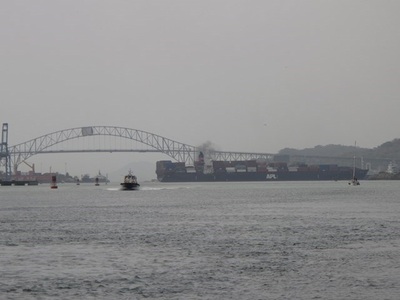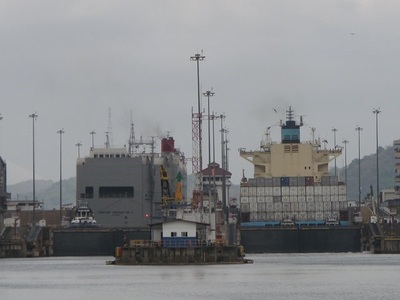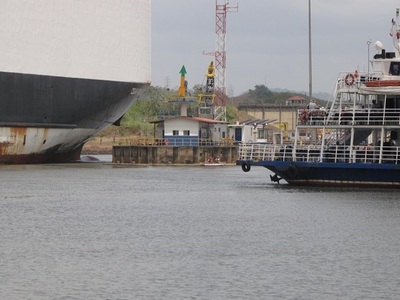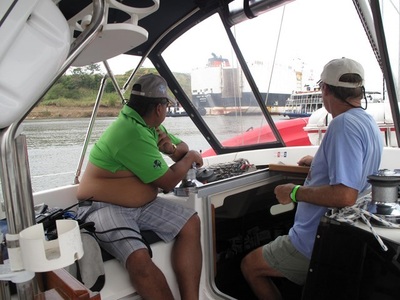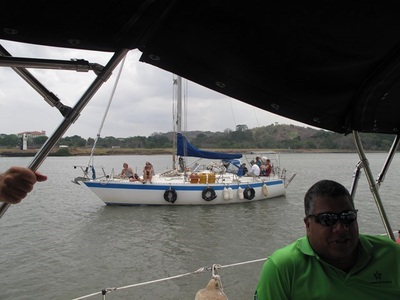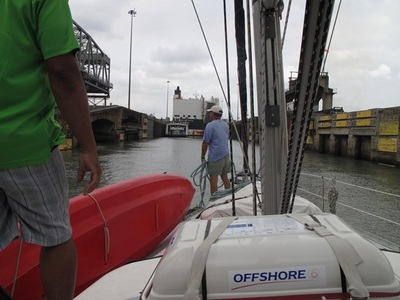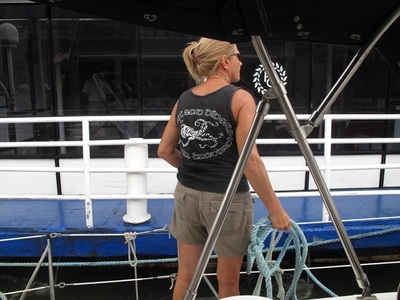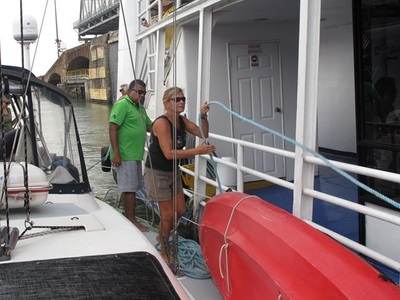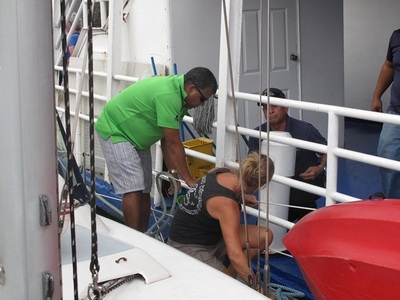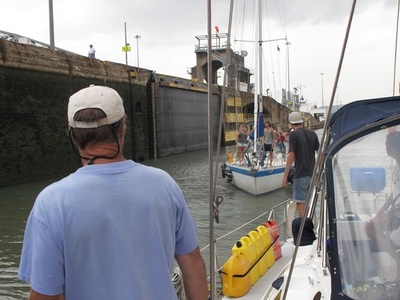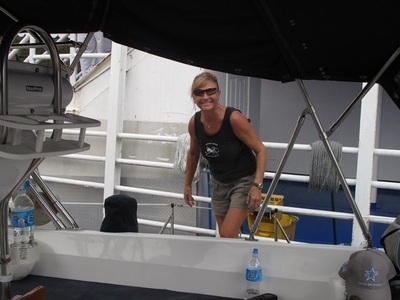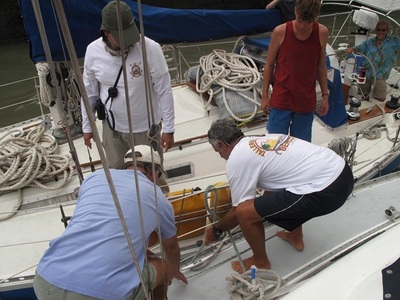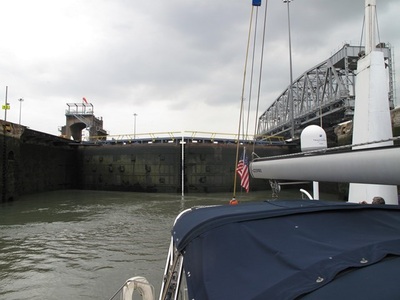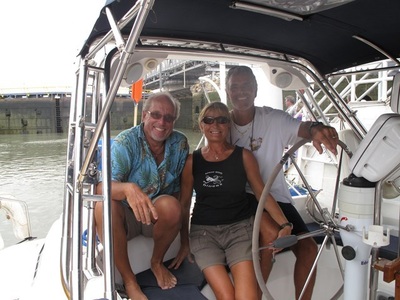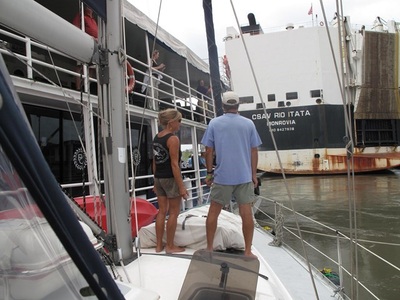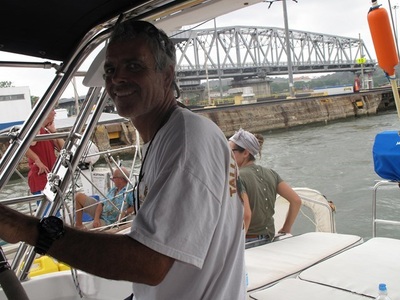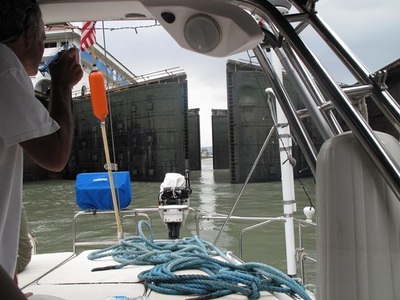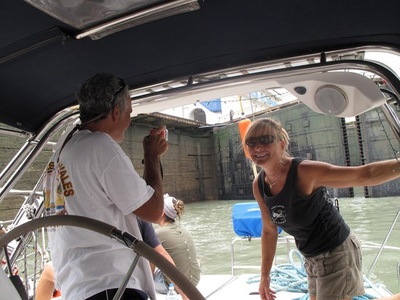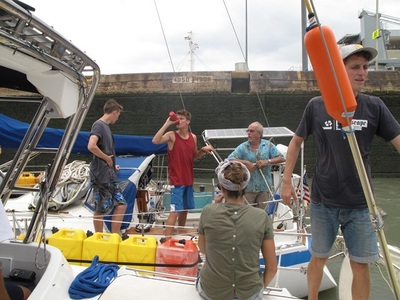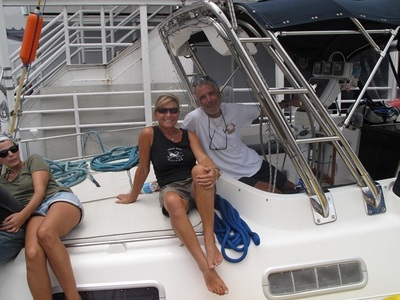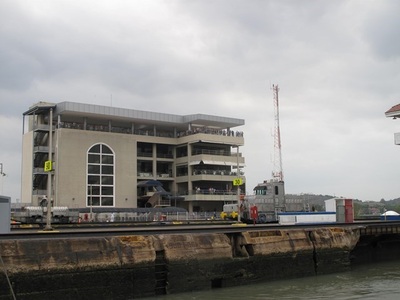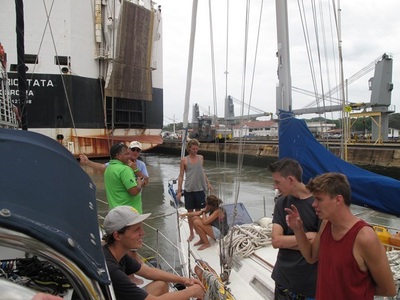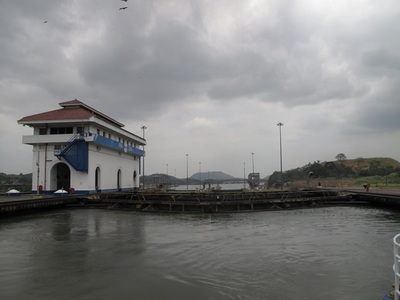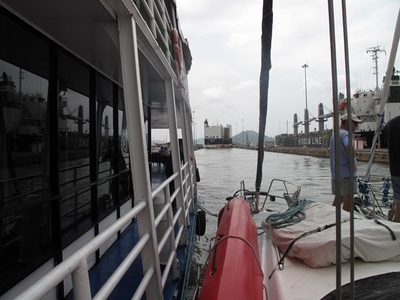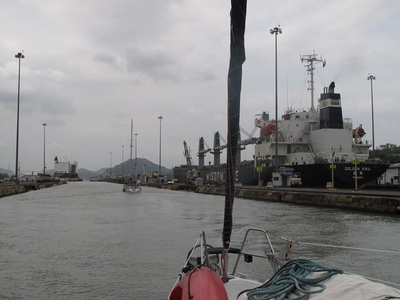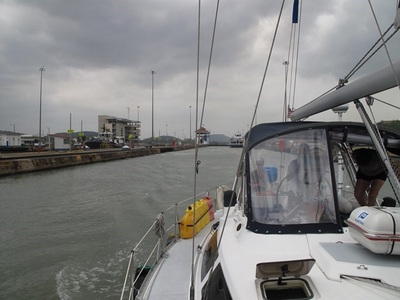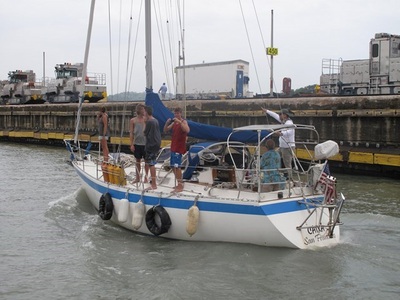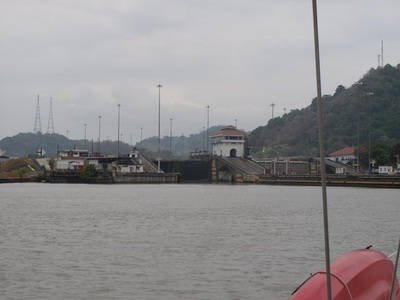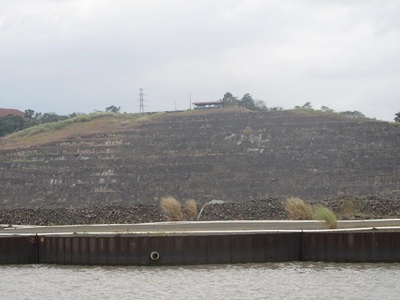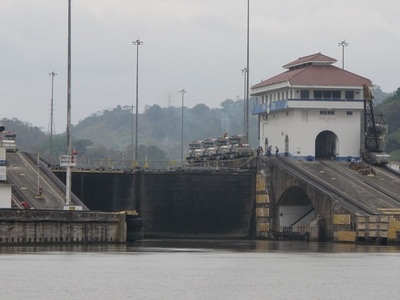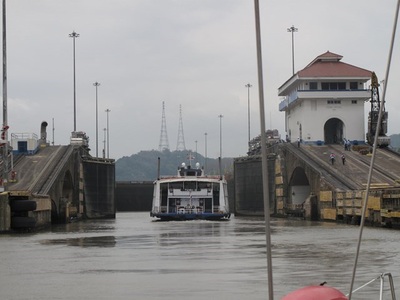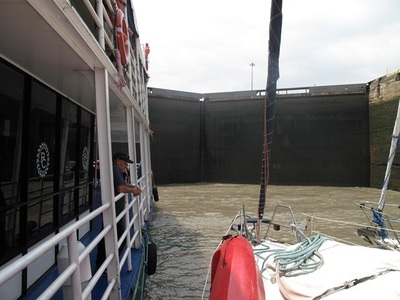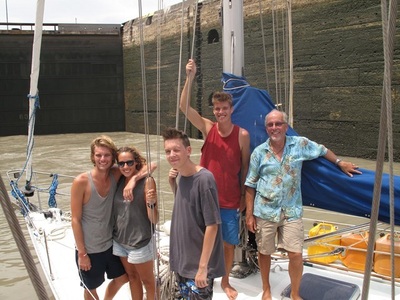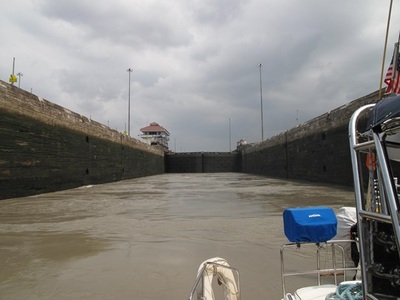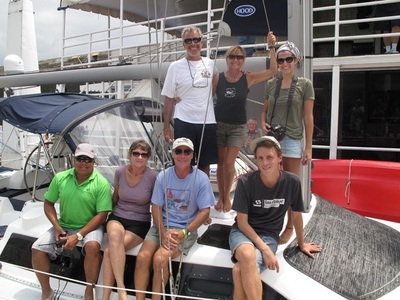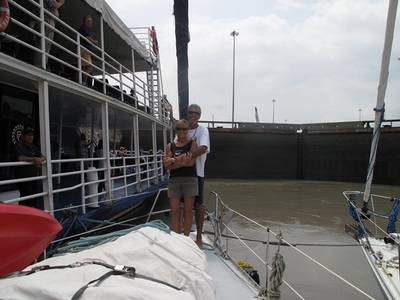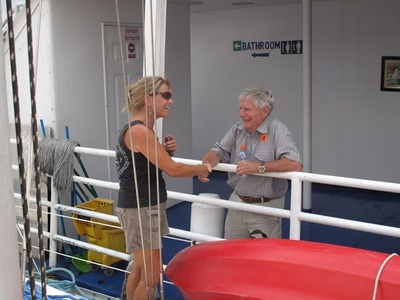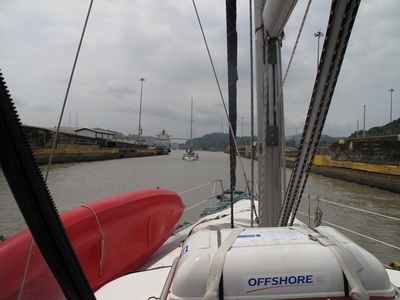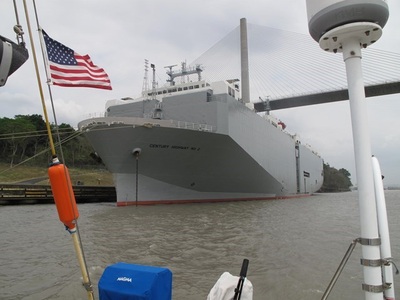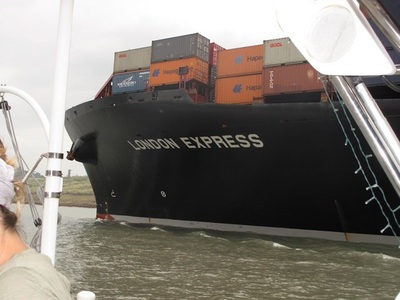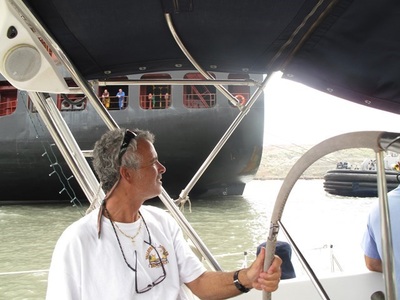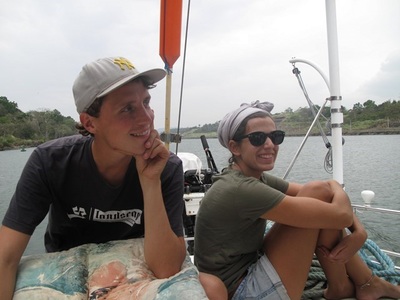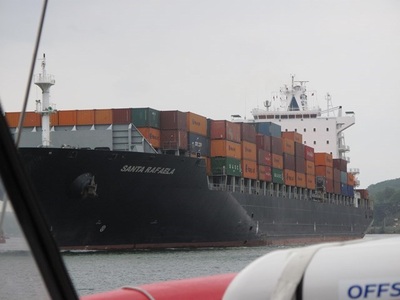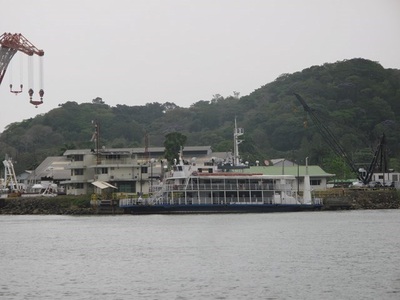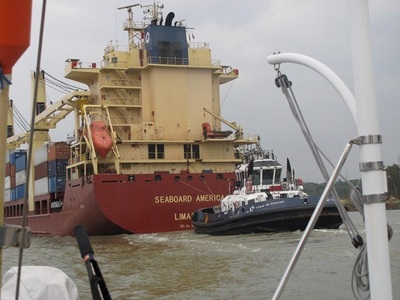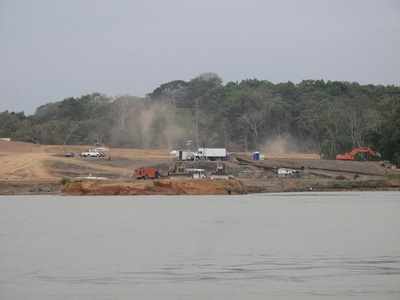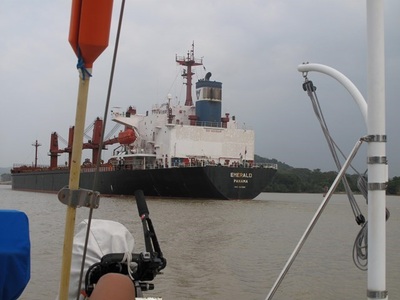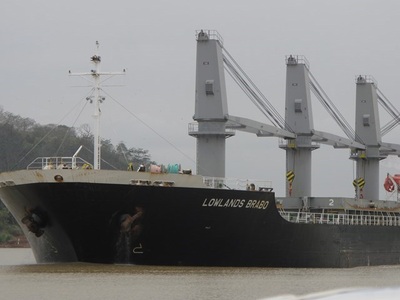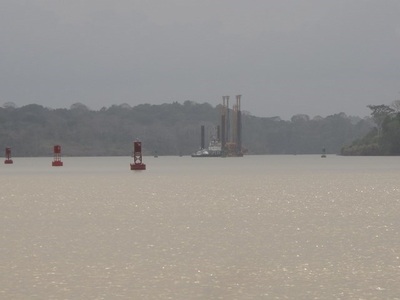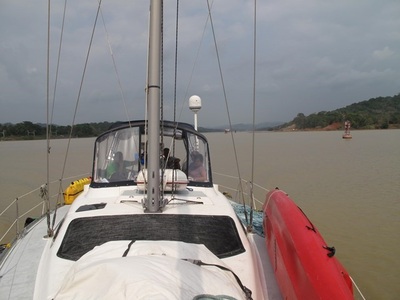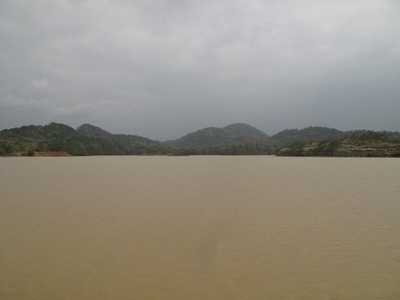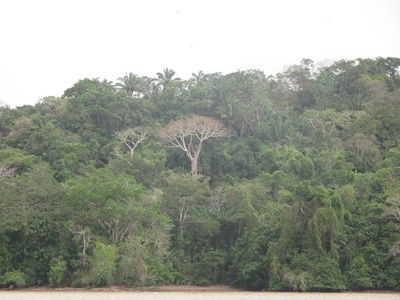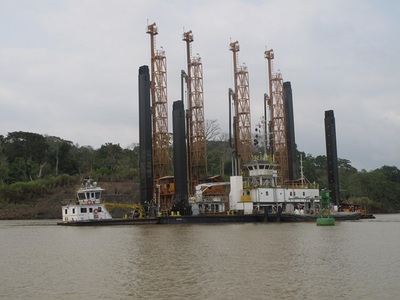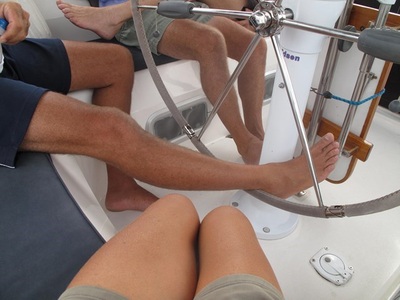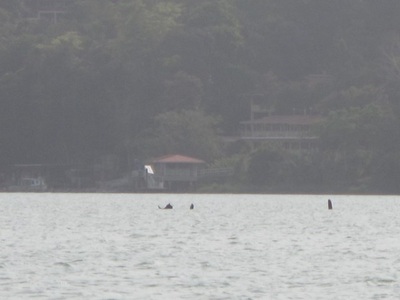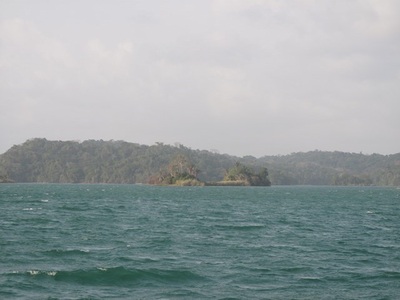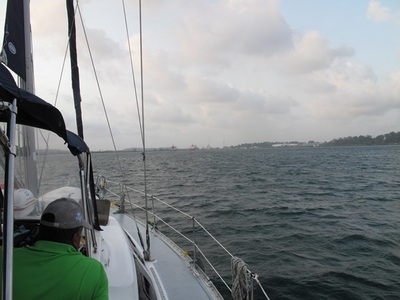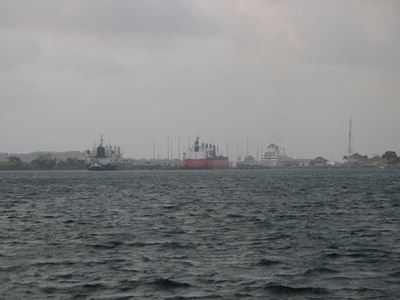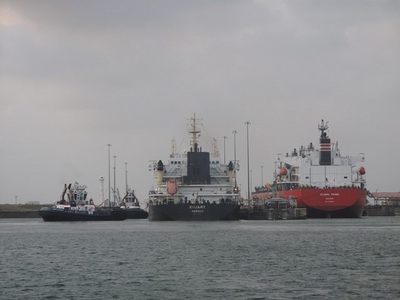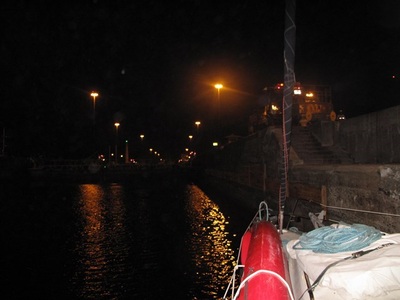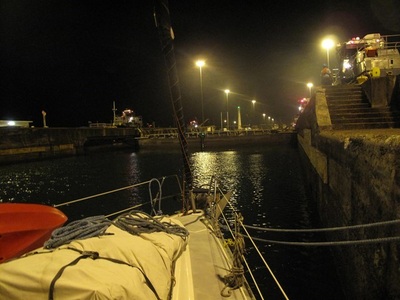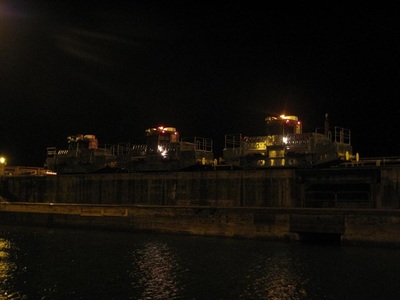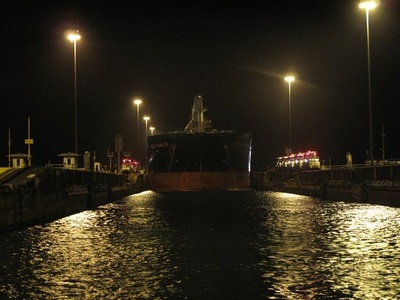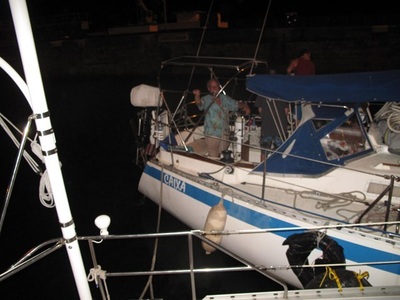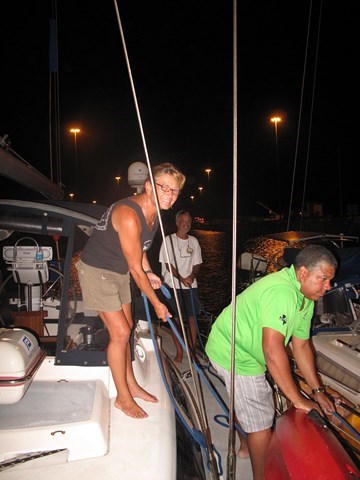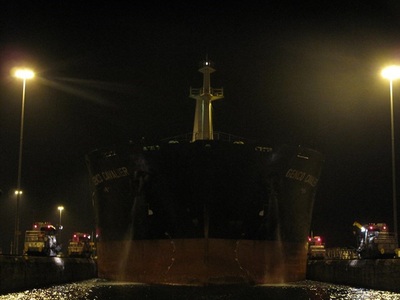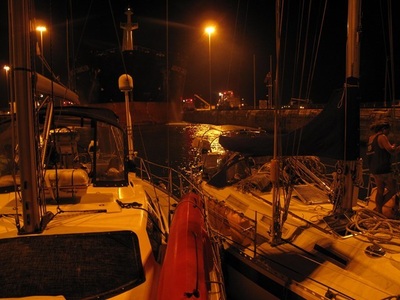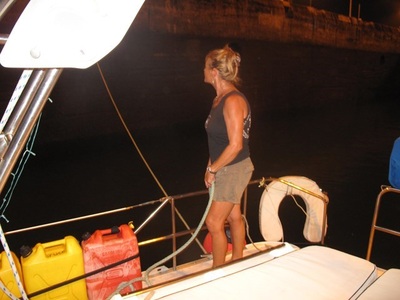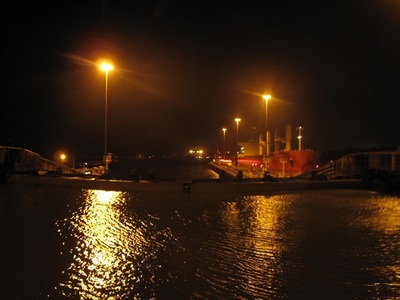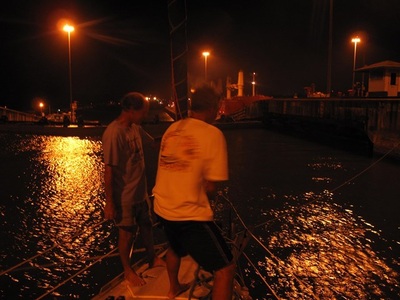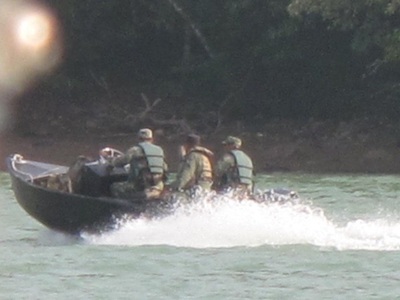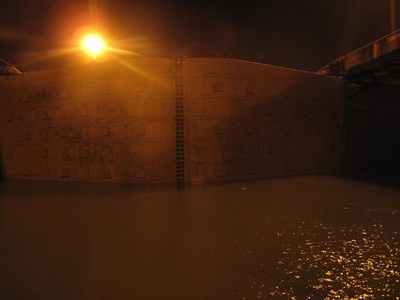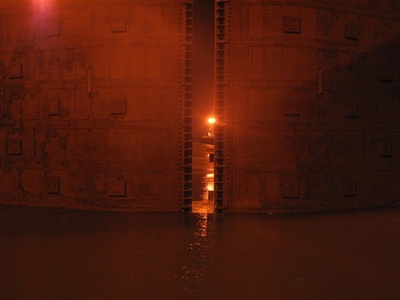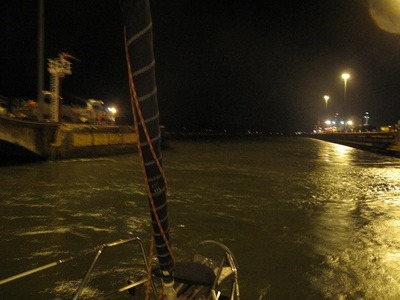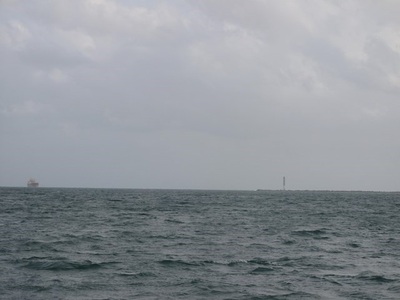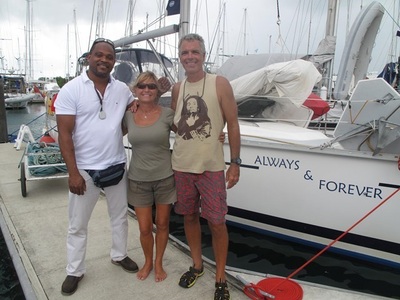November 21st
Lisa and I arrived back in La Paz, MX. After 8 months away from “Always& Forever”. We had a lot of work to do, to get her ready to go back into the water. We had to make many trips into town to get parts and supplies, on one of our first trips into town; we had to walk about a mile to the bus stop. Just before we got to the bus stop we waved at a van passing by, as we waved the van stopped and the guy driving asked if we needed a ride to town. This was the beginning of another wonderful friendship. Kris King and his wife Cassidy and Daughter Grace became fast friends. After we got back to the boat to do some work, I started talking to a Canadian Gentleman who also had his boat hauled out, at the boatyard; he was going in the water the next day. I watched he and his wife put their boat in the water and motor away, not knowing we would run into them later that day in the marina next door and spend many days with them, and also become good friends.
For a solid month Lisa and I worked on the boat trying desperately to get it ready to go in the water. Finally on December 17th she was launched, just the evening before Kristian, our Son, arrived for Christmas vacation. This wasn’t the end of the work however, our first night anchored in front of the Malacon in La Paz, and we discovered our sea water pump for the generator wasn’t working. We decided to head north to some nearby islands for snorkeling and fishing with Kristian, as we could still charge the batteries with the alternator on the engine. The first night at Isla Partida the engine died and we now had no way to charge our new batteries, so unfortunately after only one great day of adventure around the Island, we had to cut our trip short and sail back to La Paz and figure out the problem.
Dec. 24th
We arrived in Marina Palmira all businesses were closed so repairs would have to wait until after Christmas. Lisa and I had our friends Dean and Kathy over as well as our friends Kris, Cassidy and Grace, and of course Kristian was with us for Christmas dinner on the boat. It was a great time, but Kristian’s visit was too short!
Dec.26th
Lisa and I drove Kristian back to San Jose Airport and sadly said goodbye after a great visit. Tim, my Brother, flew in on the same plane Kristian was taking home, so we brought him back to La Paz with us. Tim spent his first week learning of some of the things that can go wrong with a sailboat. After a lot of head scratching we found the problem with the generator was the pickup tube had delaminated on the inside and water wouldn’t flow through. The problem with the engine was a dirty fuel tank and clogged fuel hose and filter. Problems solved.
Jan. 1st
After waiting several days for a break in the weather, we met Kris, Cassidy and Grace and all sailed out to look for whale sharks. After only a few minutes in the area where they hang out, we spotted one. We dropped anchor and spent several hours watching and swimming with several of the magnificent creatures. Later, Ultreya (Kris and Cassidy’s boat), and Always & Forever, headed for a beautiful anchorage to end a perfect start to the New Year.
Jan. 2nd
Tim, Lisa and I would spend one more day with our friends at anchor before heading across the sea of Cortez to the mainland of Mexico.
Jan 3rd
We got up and prepared for our 3 ½ day journey across to Jaltemba, a small town just to the northeast of Punta Mita. The journey started out great with good winds, however they soon died and the iron spinnaker was let loose. We motored for the next 2 days, Our first night, however we did catch a Dorado on our trolling line, and had a great dinner the second night out.
Jan 5th
As we were sailing between Islas Tres Marias (a Mexican Penal Colony) and Isla Isabel (a beautiful bird sanctuary) We pulled up next to a fishing Panga, and traded 3 t-shirts for a very large Dorado. Shortly after our trade the winds picked up and we sailed with following seas until the next morning.
Jan 6th
We arrived in Nuevo Vallarta around 3:30pm, after dodging our way through the numerous humpback whales in Banderas Bay.
Lisa and I arrived back in La Paz, MX. After 8 months away from “Always& Forever”. We had a lot of work to do, to get her ready to go back into the water. We had to make many trips into town to get parts and supplies, on one of our first trips into town; we had to walk about a mile to the bus stop. Just before we got to the bus stop we waved at a van passing by, as we waved the van stopped and the guy driving asked if we needed a ride to town. This was the beginning of another wonderful friendship. Kris King and his wife Cassidy and Daughter Grace became fast friends. After we got back to the boat to do some work, I started talking to a Canadian Gentleman who also had his boat hauled out, at the boatyard; he was going in the water the next day. I watched he and his wife put their boat in the water and motor away, not knowing we would run into them later that day in the marina next door and spend many days with them, and also become good friends.
For a solid month Lisa and I worked on the boat trying desperately to get it ready to go in the water. Finally on December 17th she was launched, just the evening before Kristian, our Son, arrived for Christmas vacation. This wasn’t the end of the work however, our first night anchored in front of the Malacon in La Paz, and we discovered our sea water pump for the generator wasn’t working. We decided to head north to some nearby islands for snorkeling and fishing with Kristian, as we could still charge the batteries with the alternator on the engine. The first night at Isla Partida the engine died and we now had no way to charge our new batteries, so unfortunately after only one great day of adventure around the Island, we had to cut our trip short and sail back to La Paz and figure out the problem.
Dec. 24th
We arrived in Marina Palmira all businesses were closed so repairs would have to wait until after Christmas. Lisa and I had our friends Dean and Kathy over as well as our friends Kris, Cassidy and Grace, and of course Kristian was with us for Christmas dinner on the boat. It was a great time, but Kristian’s visit was too short!
Dec.26th
Lisa and I drove Kristian back to San Jose Airport and sadly said goodbye after a great visit. Tim, my Brother, flew in on the same plane Kristian was taking home, so we brought him back to La Paz with us. Tim spent his first week learning of some of the things that can go wrong with a sailboat. After a lot of head scratching we found the problem with the generator was the pickup tube had delaminated on the inside and water wouldn’t flow through. The problem with the engine was a dirty fuel tank and clogged fuel hose and filter. Problems solved.
Jan. 1st
After waiting several days for a break in the weather, we met Kris, Cassidy and Grace and all sailed out to look for whale sharks. After only a few minutes in the area where they hang out, we spotted one. We dropped anchor and spent several hours watching and swimming with several of the magnificent creatures. Later, Ultreya (Kris and Cassidy’s boat), and Always & Forever, headed for a beautiful anchorage to end a perfect start to the New Year.
Jan. 2nd
Tim, Lisa and I would spend one more day with our friends at anchor before heading across the sea of Cortez to the mainland of Mexico.
Jan 3rd
We got up and prepared for our 3 ½ day journey across to Jaltemba, a small town just to the northeast of Punta Mita. The journey started out great with good winds, however they soon died and the iron spinnaker was let loose. We motored for the next 2 days, Our first night, however we did catch a Dorado on our trolling line, and had a great dinner the second night out.
Jan 5th
As we were sailing between Islas Tres Marias (a Mexican Penal Colony) and Isla Isabel (a beautiful bird sanctuary) We pulled up next to a fishing Panga, and traded 3 t-shirts for a very large Dorado. Shortly after our trade the winds picked up and we sailed with following seas until the next morning.
Jan 6th
We arrived in Nuevo Vallarta around 3:30pm, after dodging our way through the numerous humpback whales in Banderas Bay.
Lisa , Tim and I spent a week in Banderas Bay, mostly in Nuevo Vallarta, where we had a slip. We started out by docking with no reverse, which went very well. We then spent the next day repairing a broken cable, with the help of another cruiser, Robert. Robert and Roberta, his partner were very sweet and spent a lot of time with us either socializing or working on our boat. Roberta, it turns out knows quite a bit about sewing, and was able to fix our spinnaker that blew out last spring. We thought it was a goner. It is back together and working.
We arrived in Banderas Bay on the 6th and immediately called our friends Freddy and Cynthia who own a restaurant in Puerto Vallarta, it took us about 4 days to get together, but it was worth the wait. Freddy and Cynthia are 2 of the nicest people, and what fun we had with them. If anyone reading this ever goes to Puerto Vallarta you must visit "Freddy's". THE BEST FOOD IN PUERT VALLARTA.
Jan. 14th.
We left the marina in Nuevo Vallarta and headed over to the south side of the Bay to a Beautiful little cove, and the town of Yollapa. The town was a cross between small town Mexico, and Boulder, CO. A cute little village with a bunch of X- patriot hippies. Lisa and I hiked through a river and along the main path through town until we came to a magnificent waterfall. Lisa cooled off in the pool at the bottom of the fall then we hiked back to the beach to find Tim. Tim was meeting the locals and the tourist on the beach so Lisa and I fought our way (not so gracefully) through the surf on our kayak back to the boat.
The anchorage was among our worst yet, the swells were horrible and we were tossed all night. We got up with the light of morning and headed out and around Cabo Corrientas as be bid farewell to Banderas Bay.
Jan 15th
We are now truly in the tropics, the water is warmer the air is warm and wet. We sailed all day and night until we pulled into Chamela, about 80 miles south of Puerto Vallarta. The Bay was well protected with several good anchorages in it, we found the one that was highly recommended was to crowded, so we went around an Island to what we thought was the perfect anchorage. We dropped anchor just off the beach of a small island in crystal clear water, where we would spend the day snorkeling, kayaking and fishing.
Jan 17th
We left Chamela and headed east southeast to Tenacatita Bay for more great snorkeling and watching the birds and cruisers as they go by. There is a great little palapa restaurant on the beach where we had a cerveza, after snorkeling. We would visit 2 different anchorages in this bay, before heading to Barra Navidad.
We arrived in Banderas Bay on the 6th and immediately called our friends Freddy and Cynthia who own a restaurant in Puerto Vallarta, it took us about 4 days to get together, but it was worth the wait. Freddy and Cynthia are 2 of the nicest people, and what fun we had with them. If anyone reading this ever goes to Puerto Vallarta you must visit "Freddy's". THE BEST FOOD IN PUERT VALLARTA.
Jan. 14th.
We left the marina in Nuevo Vallarta and headed over to the south side of the Bay to a Beautiful little cove, and the town of Yollapa. The town was a cross between small town Mexico, and Boulder, CO. A cute little village with a bunch of X- patriot hippies. Lisa and I hiked through a river and along the main path through town until we came to a magnificent waterfall. Lisa cooled off in the pool at the bottom of the fall then we hiked back to the beach to find Tim. Tim was meeting the locals and the tourist on the beach so Lisa and I fought our way (not so gracefully) through the surf on our kayak back to the boat.
The anchorage was among our worst yet, the swells were horrible and we were tossed all night. We got up with the light of morning and headed out and around Cabo Corrientas as be bid farewell to Banderas Bay.
Jan 15th
We are now truly in the tropics, the water is warmer the air is warm and wet. We sailed all day and night until we pulled into Chamela, about 80 miles south of Puerto Vallarta. The Bay was well protected with several good anchorages in it, we found the one that was highly recommended was to crowded, so we went around an Island to what we thought was the perfect anchorage. We dropped anchor just off the beach of a small island in crystal clear water, where we would spend the day snorkeling, kayaking and fishing.
Jan 17th
We left Chamela and headed east southeast to Tenacatita Bay for more great snorkeling and watching the birds and cruisers as they go by. There is a great little palapa restaurant on the beach where we had a cerveza, after snorkeling. We would visit 2 different anchorages in this bay, before heading to Barra Navidad.
Jan. 19
Tim, Lisa and I pulled anchor early in the morning and headed just a few miles down the coast to a quaint little fishing town, GONE TOURIST, Barra Navidad, once a small fishing community 2 miles down the beach from Melaque, Barra Navidad has become the winter residence of a large portion of Canada. The town is always going and has some magnificent hotels and restaurants, not to mention some sports bars and regular all night drinking establishments. We plowed our way through the lagoon to the anchorage, and I do mean plowed. The "channel to the anchorage was unmarked and the bottom was all soft mud, so you couldn't see more than a couple feet, like the Mississippi river. We skipped from one side of the channel to the other, turning when we hit mud. finally we got to the anchorage, a wide open area of moderate depth, 10' - 15'. We set anchor and found a place to watch the Broncos win the AFC. The 3 of us spent a couple of days in Barra Navidad seeing the sights and planning our next stop as well as booking Tim's flight back to Colorado from Manzanillo.
Jan 21
Always & Forever would leave at high tide to try not to plow so much mud. It was around 10am. when we left Barra Navidad, turning south out of the bay then east down the coast to Manzanillo. Where we would anchor just off the beach at Las Hadas resort, where Bo Derik ran in her corn rolled hair, in the movie "10".
From the water Las Hadas looks spectacular, All white hotel terraced on the hillside overlooking the bay. from the inside it is, a once spectacular hotel that has been let go. Much too expensive for what it is today. Sad really.
For $15 American we were able to use the dingy dock at the marina and the facilities at the hotel, including swimming pool, bar and showers. The shower part sold us, then we found out that meant outdoor beach showers. This shocked the other guests of the hotel.
No we didn't
Jan. 23rd
We stopped at the fuel dock around 10am. Tim helped us fuel then scurried off to catch his flight home. It was fun having him along.
After Tim left Lisa and I would begin a long couple of days at sea, which were broken up by some real fishing, that afternoon I hooked into a Marlin and fought with it for only about 30min. I got it to the boat and was about to try and get my lure back when he snapped his head just inches from my hand and broke the line. Son of a _____ took my lure.
Jan 24th
The winds were great and the sailing was fast. Lisa has a big fish on, a Sailfish! Lisa got this one to the boat and we retrieved the lure and let it go. I have seldom seen Lisa so excited about fishing, she is used to blue gill and sunfish in the city ponds.
That night we finally reached Isla Ixtapa just around the corner is the narrow and shallow entrance to marina Ixtapa. We elected to anchor around the leeward side of the Island then head into the marina the next day. Anchoring in the dark in a strange place on the Mexican coast is not something to be taken lightly. The charts are not updated in Mexico like they are in the states. For instance our charts and chart books both say there is a rock awash (very shallow) that is marked by a red lighted buoy. NO LIGHT, NO BUOY. I rode on the bow with a spotlight while Lisa drove the boat to our selected anchorage. SLOWLY.
Tim, Lisa and I pulled anchor early in the morning and headed just a few miles down the coast to a quaint little fishing town, GONE TOURIST, Barra Navidad, once a small fishing community 2 miles down the beach from Melaque, Barra Navidad has become the winter residence of a large portion of Canada. The town is always going and has some magnificent hotels and restaurants, not to mention some sports bars and regular all night drinking establishments. We plowed our way through the lagoon to the anchorage, and I do mean plowed. The "channel to the anchorage was unmarked and the bottom was all soft mud, so you couldn't see more than a couple feet, like the Mississippi river. We skipped from one side of the channel to the other, turning when we hit mud. finally we got to the anchorage, a wide open area of moderate depth, 10' - 15'. We set anchor and found a place to watch the Broncos win the AFC. The 3 of us spent a couple of days in Barra Navidad seeing the sights and planning our next stop as well as booking Tim's flight back to Colorado from Manzanillo.
Jan 21
Always & Forever would leave at high tide to try not to plow so much mud. It was around 10am. when we left Barra Navidad, turning south out of the bay then east down the coast to Manzanillo. Where we would anchor just off the beach at Las Hadas resort, where Bo Derik ran in her corn rolled hair, in the movie "10".
From the water Las Hadas looks spectacular, All white hotel terraced on the hillside overlooking the bay. from the inside it is, a once spectacular hotel that has been let go. Much too expensive for what it is today. Sad really.
For $15 American we were able to use the dingy dock at the marina and the facilities at the hotel, including swimming pool, bar and showers. The shower part sold us, then we found out that meant outdoor beach showers. This shocked the other guests of the hotel.
No we didn't
Jan. 23rd
We stopped at the fuel dock around 10am. Tim helped us fuel then scurried off to catch his flight home. It was fun having him along.
After Tim left Lisa and I would begin a long couple of days at sea, which were broken up by some real fishing, that afternoon I hooked into a Marlin and fought with it for only about 30min. I got it to the boat and was about to try and get my lure back when he snapped his head just inches from my hand and broke the line. Son of a _____ took my lure.
Jan 24th
The winds were great and the sailing was fast. Lisa has a big fish on, a Sailfish! Lisa got this one to the boat and we retrieved the lure and let it go. I have seldom seen Lisa so excited about fishing, she is used to blue gill and sunfish in the city ponds.
That night we finally reached Isla Ixtapa just around the corner is the narrow and shallow entrance to marina Ixtapa. We elected to anchor around the leeward side of the Island then head into the marina the next day. Anchoring in the dark in a strange place on the Mexican coast is not something to be taken lightly. The charts are not updated in Mexico like they are in the states. For instance our charts and chart books both say there is a rock awash (very shallow) that is marked by a red lighted buoy. NO LIGHT, NO BUOY. I rode on the bow with a spotlight while Lisa drove the boat to our selected anchorage. SLOWLY.
Jan.25th
We had a casual breakfast, then headed around the corner to marina Ixtapa, where we could clean the boat charge up the batteries and turn on the Air Conditioning. Sorry to those of you suffering the cold right now, but A/C feels so good!!
The marina in Ixtapa looks as though it was once a great marina, but like so many places in Mexico the money ran out, or it was used somewhere else, the latter being more likely.
The beach in ixtapa is great, one of the best we've been to, about 2 miles long and very flat and wide. Volleyball courts and soccer, people flying kites or hanging from parasails. very active and fun. Lisa and I spent a couple days in Ixtapa, used one of the local all inclusive resorts, just for a short swim in there pool, it looked so inviting after body surfing in a big shore break we had to get the sand out of our suits and things.
Jan. 27th
Left Ixtapa and sailed in light winds to Zihuatinejo, a perfect chance to use our spinnaker that was repaired for us by a wonderful lady in Nuevo Vallarta, who fixed it in just a few hours and would not accept any money for it. So many of the cruisers are like this, we just all pay it forward and help each other when we can. The spinnaker worked beautifully and we made it to our next anchorage in just a few hours.
Here in Zihuatinejo we would explore the town and waters for a week, hang out with new and old friends, watch the locals as they play basketball nightly on a nice court next to the beach. The town comes to life nightly, not just for the tourists, but the locals come out and watch open air movies, play basketball, clowns come out and entertain the kids, and this happens several nights a week.
On Thursday afternoon Lisa and I went across the bay to snorkel in an area where a large statue of Christ stands about 25' underwater. apparently placed there to bless the boats that visit the bay.
We had a casual breakfast, then headed around the corner to marina Ixtapa, where we could clean the boat charge up the batteries and turn on the Air Conditioning. Sorry to those of you suffering the cold right now, but A/C feels so good!!
The marina in Ixtapa looks as though it was once a great marina, but like so many places in Mexico the money ran out, or it was used somewhere else, the latter being more likely.
The beach in ixtapa is great, one of the best we've been to, about 2 miles long and very flat and wide. Volleyball courts and soccer, people flying kites or hanging from parasails. very active and fun. Lisa and I spent a couple days in Ixtapa, used one of the local all inclusive resorts, just for a short swim in there pool, it looked so inviting after body surfing in a big shore break we had to get the sand out of our suits and things.
Jan. 27th
Left Ixtapa and sailed in light winds to Zihuatinejo, a perfect chance to use our spinnaker that was repaired for us by a wonderful lady in Nuevo Vallarta, who fixed it in just a few hours and would not accept any money for it. So many of the cruisers are like this, we just all pay it forward and help each other when we can. The spinnaker worked beautifully and we made it to our next anchorage in just a few hours.
Here in Zihuatinejo we would explore the town and waters for a week, hang out with new and old friends, watch the locals as they play basketball nightly on a nice court next to the beach. The town comes to life nightly, not just for the tourists, but the locals come out and watch open air movies, play basketball, clowns come out and entertain the kids, and this happens several nights a week.
On Thursday afternoon Lisa and I went across the bay to snorkel in an area where a large statue of Christ stands about 25' underwater. apparently placed there to bless the boats that visit the bay.
Feb 3rd.
After a most embarrassing super bowl, Lisa and I got up, prepared the boat and left Zihuatinejo. We were both ready to leave, the water in the anchorage near the town was quite disgusting and the bottom of the boat was crying for attention. We decided to break up the trip to Acapulco with a stop in a small village called Pompanoa. There used to be a Mx. Naval outpost here, however that has since gone and there are now a few run down homes and fishing shacks, lots of hammocks hanging on front porches and even in the palapas. The people seemed to enjoy just hanging around and socializing. We however didn’t go ashore. On our way here we caught a large feisty fish, I thought it was a Jack Crarvel; however I wasn’t sure until I started cleaning it. Dark red bloody meat, NO BUENO. This fish soon became fish food. After cleaning up Lisa and I enjoyed a cervesa while watching another spectacular sunset.
Feb 4th
Up at 4am. We have 70 miles to go to Acapulco. We have good wind and throw out our newly repaired and wonderful spinnaker, as we have a nice 8 knot following breeze. We make great time and arrive in Acapulco around 5pm. As we are approaching from the NW. we notice how nice the homes are, and the many little water taxis heading across the channel between Acapulco and a small island just ½ mile away. Then we turn the corner into the Bay and see the city, towering skyscraper hotels and apartment buildings, one on top of the other a small strip of sand separated the construction from the water, at one end of the bay there were 3 marinas with boats moored or anchored in every bit of water. We decided to get fuel and leave, however not one of the marinas would even answer the radio, so we decided we didn’t need fuel either, hell we’re a sailboat. So we turned and sailed out of the bay and into a small quieter bay around the corner and dropped anchor. Will NEVER GO BACK TO ACAPULCO.
Feb 5th
I got up early as usual and tied down the dingy and pulled up the spinnaker bag, getting ready for our next leg of the journey, it would be 2 days and 175 miles down the coast. As I was busy on deck I heard the most god-awful noise in the trees, I looked over and saw my first wild Parrots carrying on, doing what parrots do. I watched them for a while before getting on with my chores. When Lisa got up, we pulled up anchor and started on our way. We had good sailing winds with our spinnaker pulling us most of the day until sunset and the winds died. Lisa took the first watch that night and when I came up to relieve her around 11pm I noticed a fish on our trolling line. When I pulled it in, we had ourselves several meals, about 4’ of Barracuda. I went back down to sleep around 4am and Lisa took over. About 4:30 Lisa woke me and said there was a large cruise ship bearing down on us. When I ran up to the deck he must have turned, although he was close; about a mile away, he was now headed out to sea. I went back to bed.
Feb 7th we arrived at a beautiful little bay just 20 miles from Huatulco, called Puerto Angel. We spent a couple days here, cleaning the bottom of the boat and snorkeling and just enjoying the small village of Puerto Angel. There was one other sailboat in the anchorage that we had seen in Zihuatinejo. Our second day there the couple from that boat paddled over and introduced themselves, they had been told by our friends Mike and Holly to keep an eye out for us. So Garry and Caryn invited us over for Wine and appetizers that evening, we had a great time and could have stayed and talked all night, but we were going the same direction the next day and would surely have more time together. So we gingerly climbed down the ladder on the side of their boat and into our kayak, with a bit of wine in us. We made it back over to “Always & Forever” and were still dry.
Feb 9th
As Lisa and I were finishing breakfast I noticed that “WindFlower”, Garry and Caryn’s boat was on its way out of the bay and headed for Huatuco. As we hauled up our anchor and headed out about ½ an hour behind I hailed them on the radio and confirmed that they were still headed to Huatulco to fuel up and check the weather before crossing the infamous Bahia Tuannepec.
The bay of Tuannapec is notorious for catching ill prepared cruisers off guard and pounding them into the sea. At the head of this bay is a narrow isthmus 140 miles across to the Caribbean Sea. At each side of this isthmus are mountains that funnel all the wind from the other side through this gap, causing terrific wind storms here. Sailors need to be very cautious and check all weather resources before crossing this 300 mile stretch of water.
As we approached Huatulco it appeared as though “WindFlower” was not stopping. I hailed them on the radio again and they had a weather fax that said they had a window to go. We wished them luck and headed into Huatulco for fuel and Water, and to check the weather. We entered the marina and did all three of these things as well as talking to some of the other people in the marina. One couple we spoke with had been watching the weather and waiting for a window to cross the Tuanapec, they said that the next day around noon was the best time to go, we checked our sources and agreed.
Feb 10th
Again we made preparations for a couple nights at sea, then set out about noon for Chiapas, this would be our last stop in Mexico. As we left the marina we decided that we were going to motor sail, and run hard until we passed the isthmus of Tuanapec, to our surprise, we had a following current for most of the day that pushed us along as well as 10 knot winds across our beam, so needless to say we were moving along without using our motor, much faster than we typically go with it.
One of the suggestions for crossing the Tuanapec is to stay close to the beach, that way if the winds pick up, you don’t find yourself with large swells across your beam.
Just before the Isthmus is the busy shrimping port of Salina Cruz. There are boats going in and out of there 24 hours a day, as well as marked shipping lanes and lighted buoys, making it a very congested area. Lisa decided to go around this busy area as it was dark, making for a less stressful sail. We now found ourselves 8 miles out from the shore as we crossed the isthmus. Just around midnight the winds picked up to 25 knots, as did the swells. So we turned into the swells and motored toward the shore. As we got into about 3 miles from shore, as suggested, the swells disappeared but the wind was still there, making for great sailing. With the main already down 2 reef points, I reefed the Jib and we were off to Chiapas. First we had to run the gauntlet. When I took over around 10pm on the second night I noticed a row of lights on the horizon, as we got closer it was no longer a row, but a cluster of shrimping boats dragging their nets, they seemed to be everywhere. While dragging they moved very slowly and were easy to sail around, so by the time Lisa had come up to take over I had already gone through half of the boats, as I was explaining the situation to Lisa, one of the boats lifted its nets and sped right across our bow, I quickly spun the wheel to starboard and went around him. No more close calls.
Feb 12th
With the sunrise we were just 6 miles from Chiapas and I heard WindFlower calling the Port Captain. This took me by surprise as they had left 24 hours ahead of us. After he finished checking in with the Port Captain I called him to find out they had arrived in the middle of the night, and wisely hove too outside the breakwater and waited for sunrise to enter the narrow channel.
Lisa and I decided to stay in the marina here and use their facilities and their expertise with the Port Captain as our Spanish is extremely limited, WindFlower stayed on anchor outside the marina. After getting settled, cleaning the boat, delivering our laundry, and a 5 minute nap, Garry and Caryn invited us to the restaurant for apps & drinks. Lisa put down the vacuum and I woke up and we were off to compare stories of crossing the Tuanapec.
After a most embarrassing super bowl, Lisa and I got up, prepared the boat and left Zihuatinejo. We were both ready to leave, the water in the anchorage near the town was quite disgusting and the bottom of the boat was crying for attention. We decided to break up the trip to Acapulco with a stop in a small village called Pompanoa. There used to be a Mx. Naval outpost here, however that has since gone and there are now a few run down homes and fishing shacks, lots of hammocks hanging on front porches and even in the palapas. The people seemed to enjoy just hanging around and socializing. We however didn’t go ashore. On our way here we caught a large feisty fish, I thought it was a Jack Crarvel; however I wasn’t sure until I started cleaning it. Dark red bloody meat, NO BUENO. This fish soon became fish food. After cleaning up Lisa and I enjoyed a cervesa while watching another spectacular sunset.
Feb 4th
Up at 4am. We have 70 miles to go to Acapulco. We have good wind and throw out our newly repaired and wonderful spinnaker, as we have a nice 8 knot following breeze. We make great time and arrive in Acapulco around 5pm. As we are approaching from the NW. we notice how nice the homes are, and the many little water taxis heading across the channel between Acapulco and a small island just ½ mile away. Then we turn the corner into the Bay and see the city, towering skyscraper hotels and apartment buildings, one on top of the other a small strip of sand separated the construction from the water, at one end of the bay there were 3 marinas with boats moored or anchored in every bit of water. We decided to get fuel and leave, however not one of the marinas would even answer the radio, so we decided we didn’t need fuel either, hell we’re a sailboat. So we turned and sailed out of the bay and into a small quieter bay around the corner and dropped anchor. Will NEVER GO BACK TO ACAPULCO.
Feb 5th
I got up early as usual and tied down the dingy and pulled up the spinnaker bag, getting ready for our next leg of the journey, it would be 2 days and 175 miles down the coast. As I was busy on deck I heard the most god-awful noise in the trees, I looked over and saw my first wild Parrots carrying on, doing what parrots do. I watched them for a while before getting on with my chores. When Lisa got up, we pulled up anchor and started on our way. We had good sailing winds with our spinnaker pulling us most of the day until sunset and the winds died. Lisa took the first watch that night and when I came up to relieve her around 11pm I noticed a fish on our trolling line. When I pulled it in, we had ourselves several meals, about 4’ of Barracuda. I went back down to sleep around 4am and Lisa took over. About 4:30 Lisa woke me and said there was a large cruise ship bearing down on us. When I ran up to the deck he must have turned, although he was close; about a mile away, he was now headed out to sea. I went back to bed.
Feb 7th we arrived at a beautiful little bay just 20 miles from Huatulco, called Puerto Angel. We spent a couple days here, cleaning the bottom of the boat and snorkeling and just enjoying the small village of Puerto Angel. There was one other sailboat in the anchorage that we had seen in Zihuatinejo. Our second day there the couple from that boat paddled over and introduced themselves, they had been told by our friends Mike and Holly to keep an eye out for us. So Garry and Caryn invited us over for Wine and appetizers that evening, we had a great time and could have stayed and talked all night, but we were going the same direction the next day and would surely have more time together. So we gingerly climbed down the ladder on the side of their boat and into our kayak, with a bit of wine in us. We made it back over to “Always & Forever” and were still dry.
Feb 9th
As Lisa and I were finishing breakfast I noticed that “WindFlower”, Garry and Caryn’s boat was on its way out of the bay and headed for Huatuco. As we hauled up our anchor and headed out about ½ an hour behind I hailed them on the radio and confirmed that they were still headed to Huatulco to fuel up and check the weather before crossing the infamous Bahia Tuannepec.
The bay of Tuannapec is notorious for catching ill prepared cruisers off guard and pounding them into the sea. At the head of this bay is a narrow isthmus 140 miles across to the Caribbean Sea. At each side of this isthmus are mountains that funnel all the wind from the other side through this gap, causing terrific wind storms here. Sailors need to be very cautious and check all weather resources before crossing this 300 mile stretch of water.
As we approached Huatulco it appeared as though “WindFlower” was not stopping. I hailed them on the radio again and they had a weather fax that said they had a window to go. We wished them luck and headed into Huatulco for fuel and Water, and to check the weather. We entered the marina and did all three of these things as well as talking to some of the other people in the marina. One couple we spoke with had been watching the weather and waiting for a window to cross the Tuanapec, they said that the next day around noon was the best time to go, we checked our sources and agreed.
Feb 10th
Again we made preparations for a couple nights at sea, then set out about noon for Chiapas, this would be our last stop in Mexico. As we left the marina we decided that we were going to motor sail, and run hard until we passed the isthmus of Tuanapec, to our surprise, we had a following current for most of the day that pushed us along as well as 10 knot winds across our beam, so needless to say we were moving along without using our motor, much faster than we typically go with it.
One of the suggestions for crossing the Tuanapec is to stay close to the beach, that way if the winds pick up, you don’t find yourself with large swells across your beam.
Just before the Isthmus is the busy shrimping port of Salina Cruz. There are boats going in and out of there 24 hours a day, as well as marked shipping lanes and lighted buoys, making it a very congested area. Lisa decided to go around this busy area as it was dark, making for a less stressful sail. We now found ourselves 8 miles out from the shore as we crossed the isthmus. Just around midnight the winds picked up to 25 knots, as did the swells. So we turned into the swells and motored toward the shore. As we got into about 3 miles from shore, as suggested, the swells disappeared but the wind was still there, making for great sailing. With the main already down 2 reef points, I reefed the Jib and we were off to Chiapas. First we had to run the gauntlet. When I took over around 10pm on the second night I noticed a row of lights on the horizon, as we got closer it was no longer a row, but a cluster of shrimping boats dragging their nets, they seemed to be everywhere. While dragging they moved very slowly and were easy to sail around, so by the time Lisa had come up to take over I had already gone through half of the boats, as I was explaining the situation to Lisa, one of the boats lifted its nets and sped right across our bow, I quickly spun the wheel to starboard and went around him. No more close calls.
Feb 12th
With the sunrise we were just 6 miles from Chiapas and I heard WindFlower calling the Port Captain. This took me by surprise as they had left 24 hours ahead of us. After he finished checking in with the Port Captain I called him to find out they had arrived in the middle of the night, and wisely hove too outside the breakwater and waited for sunrise to enter the narrow channel.
Lisa and I decided to stay in the marina here and use their facilities and their expertise with the Port Captain as our Spanish is extremely limited, WindFlower stayed on anchor outside the marina. After getting settled, cleaning the boat, delivering our laundry, and a 5 minute nap, Garry and Caryn invited us to the restaurant for apps & drinks. Lisa put down the vacuum and I woke up and we were off to compare stories of crossing the Tuanapec.
We spent 3 days in Chiapas, cleaning the boat filling the water tanks and preparing to exit Mexico.
Feb 14th
Guiarmo (AKA) Memo, is the right hand man at the marina in Chiapas, he took Lisa and I to checkout of the country, which involved driving to the airport to checkout with immigration, then driving several miles to the Port Captains office and checking out with him, then you have to make arrangements for the Navy to come and inspect your boat. This would have taken 2 days and would have been a nightmare without Memo's help.
Feb 15th
Lisa and I got up and had breakfast with the last of our Pesos, then said goodbye to the staff at the marina. As we pulled out of our slip they gave us a loud blast of their horn to say goodbye. We really loved Mexico and the people we met there.
We left the estuary and turned left, heading toward El Salvador. We had a brisk onshore breeze, blowing 10 to 15 knots over our Starboard beam, so we set our main with one reef and a full head sail and made 6 to 7 knots for about 6 hours without any adjustments. as the sun set, so did the wind. we started the motor and it ran all night. As we sailed past Guatemala the landscape changed, and Volcanoes started showing up along the coast. There was one Volcano that has been erupting, as we went by there was steam coming up from the caldron. We were told that if you go by at night you can see the lava flow.
Feb 16th
The winds came up again, only now they were 10 to 15 knots right on our nose and against the prevailing current, this meant big and steep swells. We battled these seas for about 24 hours with water splashing over the bow and neither of us got any sleep to speak of. We arrived at the entrance to Bahia del Sol, El Salvador. This Estuary has a very dangerous bar and you MUST get a pilot to guide you over the bar, as the shoal moves and you need local knowledge to safely navigate the entrance. Further more you can only cross the bar at high tide which was 6 hours away, so we dropped the anchor in 35' of water and went to sleep for a while. At 4:30pm we got a call on the VHF radio, the pilot was on his way. Soon we see about 20 pangas heading out over the bar, the pilot says he is one of the pangas coming out. "We are the white one with the blue bottom" he says. Then we see him waving and he directs us in, saying don't worry we'll stay out of your way. Not 30 seconds later, we are surfing a wave in our 42' boat when they disappear under our bow, then emerge on the other side. Looked a little to close. After a thrilling 5 minutes surfing wave after wave, we were safely inside the estuary and heading for Bahia del Sol Hotel and marina. Upon our arrival at the dock we were met by our host and pilot Bill holding rum drinks, standing next to him were the customs agent the imigrations officer and 6 other cruisers. This was by far our nicest reception yet. Customs and immigration even held our drinks while we took pictures and shook hands. This would never happen in the USA or most other countries. Salvadorians are very happy, and kind people. Our stay here will be way to short, but we must keep moving. The Marina is in the shadow of a Volcano, and there are 5 of them visible from here.
Feb 19th
Bill and Gene, our American hosts here, are heading into the capital city of San Salvador, and kindly invite Lisa and I along for a little tour of the capital. How could we say no to such an offer. On our way to the city we stopped at a local hardware store where they make their own cement tiles by hand. each worker can make up to 500 per day. It is a very interesting process and the workers were smiling and having fun the entire time.
We left there and went on to the city, where you could see any franchise that you would see in the states. The American influence is extremely strong here since the end of the civil war. Many of the indigenous people left during the war, and 77,000 were killed. The Salvadorians seem to have lost their identity, and in the capital city anyway have adopted that of the United States.
Feb 14th
Guiarmo (AKA) Memo, is the right hand man at the marina in Chiapas, he took Lisa and I to checkout of the country, which involved driving to the airport to checkout with immigration, then driving several miles to the Port Captains office and checking out with him, then you have to make arrangements for the Navy to come and inspect your boat. This would have taken 2 days and would have been a nightmare without Memo's help.
Feb 15th
Lisa and I got up and had breakfast with the last of our Pesos, then said goodbye to the staff at the marina. As we pulled out of our slip they gave us a loud blast of their horn to say goodbye. We really loved Mexico and the people we met there.
We left the estuary and turned left, heading toward El Salvador. We had a brisk onshore breeze, blowing 10 to 15 knots over our Starboard beam, so we set our main with one reef and a full head sail and made 6 to 7 knots for about 6 hours without any adjustments. as the sun set, so did the wind. we started the motor and it ran all night. As we sailed past Guatemala the landscape changed, and Volcanoes started showing up along the coast. There was one Volcano that has been erupting, as we went by there was steam coming up from the caldron. We were told that if you go by at night you can see the lava flow.
Feb 16th
The winds came up again, only now they were 10 to 15 knots right on our nose and against the prevailing current, this meant big and steep swells. We battled these seas for about 24 hours with water splashing over the bow and neither of us got any sleep to speak of. We arrived at the entrance to Bahia del Sol, El Salvador. This Estuary has a very dangerous bar and you MUST get a pilot to guide you over the bar, as the shoal moves and you need local knowledge to safely navigate the entrance. Further more you can only cross the bar at high tide which was 6 hours away, so we dropped the anchor in 35' of water and went to sleep for a while. At 4:30pm we got a call on the VHF radio, the pilot was on his way. Soon we see about 20 pangas heading out over the bar, the pilot says he is one of the pangas coming out. "We are the white one with the blue bottom" he says. Then we see him waving and he directs us in, saying don't worry we'll stay out of your way. Not 30 seconds later, we are surfing a wave in our 42' boat when they disappear under our bow, then emerge on the other side. Looked a little to close. After a thrilling 5 minutes surfing wave after wave, we were safely inside the estuary and heading for Bahia del Sol Hotel and marina. Upon our arrival at the dock we were met by our host and pilot Bill holding rum drinks, standing next to him were the customs agent the imigrations officer and 6 other cruisers. This was by far our nicest reception yet. Customs and immigration even held our drinks while we took pictures and shook hands. This would never happen in the USA or most other countries. Salvadorians are very happy, and kind people. Our stay here will be way to short, but we must keep moving. The Marina is in the shadow of a Volcano, and there are 5 of them visible from here.
Feb 19th
Bill and Gene, our American hosts here, are heading into the capital city of San Salvador, and kindly invite Lisa and I along for a little tour of the capital. How could we say no to such an offer. On our way to the city we stopped at a local hardware store where they make their own cement tiles by hand. each worker can make up to 500 per day. It is a very interesting process and the workers were smiling and having fun the entire time.
We left there and went on to the city, where you could see any franchise that you would see in the states. The American influence is extremely strong here since the end of the civil war. Many of the indigenous people left during the war, and 77,000 were killed. The Salvadorians seem to have lost their identity, and in the capital city anyway have adopted that of the United States.
Feb 21st
We have met some great people here in Bahia del Sol, both locals and cruisers. Definitely more people to add to the e-mail list. Don and Cathy on Wild Rose, and Jeff and Judy on Island Mistress. These 2 couples really made our stay at the marina nice we spent most of our time with one of these two couples. Then there are our hosts Bill and Jean, who have moved down to El Salvador and built a house on the Island across the estuary from Bahia del Sol. They have employed some of the locals to help them and are really making a difference in the area. They have also organized a cruisers rally, to try to promote the area and bring in some tourist dollars, as well as educate people to the hardship of life in the area. Lisa and I were invited to their home and given a tour of the island and met some of the nicest, happiest people and they really have nothing tangible. But they do have friends and family and seem content with that. There is one school on the island that goes up to eighth grade, after that most kids are finished because it costs $1.00 each way on the ferry to get to the high school and most men only make about $8.00/day. Bill and Jean are also trying to get some ceramic water filters for the islands wells as this is the source of all the water on the island and it could definitely use filtering.
Any Cruisers coming down this way will want to join the Annual Salvador Rally. "Elsalvadorrally.com" Facebook: Annual Salvador Rally
Enough of that
Lisa and I readied the boat to leave as we had to hit, high slack tide to get out over the bar that was at 07:00am. The guide boat came by to get us and Don and Jeff tended our lines as we left Bahia del Sol for a 24 hour sail down the coast to Puesta del Sol, Nicaragua. Again the coast is lined with volcanoes and the trip is pretty uneventful until sundown when we caught 2 Spanish Mackerel, known to the locals as Sierra. Whatever you call them they are tasty. But they have some wicked teeth and even their gills have teeth.
We have met some great people here in Bahia del Sol, both locals and cruisers. Definitely more people to add to the e-mail list. Don and Cathy on Wild Rose, and Jeff and Judy on Island Mistress. These 2 couples really made our stay at the marina nice we spent most of our time with one of these two couples. Then there are our hosts Bill and Jean, who have moved down to El Salvador and built a house on the Island across the estuary from Bahia del Sol. They have employed some of the locals to help them and are really making a difference in the area. They have also organized a cruisers rally, to try to promote the area and bring in some tourist dollars, as well as educate people to the hardship of life in the area. Lisa and I were invited to their home and given a tour of the island and met some of the nicest, happiest people and they really have nothing tangible. But they do have friends and family and seem content with that. There is one school on the island that goes up to eighth grade, after that most kids are finished because it costs $1.00 each way on the ferry to get to the high school and most men only make about $8.00/day. Bill and Jean are also trying to get some ceramic water filters for the islands wells as this is the source of all the water on the island and it could definitely use filtering.
Any Cruisers coming down this way will want to join the Annual Salvador Rally. "Elsalvadorrally.com" Facebook: Annual Salvador Rally
Enough of that
Lisa and I readied the boat to leave as we had to hit, high slack tide to get out over the bar that was at 07:00am. The guide boat came by to get us and Don and Jeff tended our lines as we left Bahia del Sol for a 24 hour sail down the coast to Puesta del Sol, Nicaragua. Again the coast is lined with volcanoes and the trip is pretty uneventful until sundown when we caught 2 Spanish Mackerel, known to the locals as Sierra. Whatever you call them they are tasty. But they have some wicked teeth and even their gills have teeth.
Feb 22nd
We arrived in Puesta del Sol, Nicaragua at 07:00am and pulled up to the dock to check into the country. Right away we decided this is not like El Salvador. The Employees here could care less if we stayed here or not, they waited in the office until we came up. They wanted 5 copies of everything and couldn't tell me why. They would make copies at .20/page. The slip fees were higher than San Diego, but the facilities were not so great. electricity was monitored and cost .45/kw and water was .01/liter on top of the $53./night just to tie up. The food was way out of line, so we just ate on the boat like usual. I would recommend to other cruisers to bypass this place. We will be filling our diesel tanks at over $5.00/gal. incase we have to motor through the dreaded Papagayo winds. Leaving here we have a couple days of very strong winds that blow daily, called Papaguyos; these winds build up and howl off shore then they let up for a while before blowing again. This happens from November through February. We can't wait for them to stop because after the papaguyos is the rainy season complete with thunderstorms. Lightning with a 60' aluminum mast doesn't give me a warm fuzzy feeling. So Monday morning we head out of Nicaragua and head on down the coast to Costa Rica. We are planning to hug the coast to avoid the large swells that build up due to wind. When the winds get too high we'll find a spot to drop anchor and wait for a break to move on.
We arrived in Puesta del Sol, Nicaragua at 07:00am and pulled up to the dock to check into the country. Right away we decided this is not like El Salvador. The Employees here could care less if we stayed here or not, they waited in the office until we came up. They wanted 5 copies of everything and couldn't tell me why. They would make copies at .20/page. The slip fees were higher than San Diego, but the facilities were not so great. electricity was monitored and cost .45/kw and water was .01/liter on top of the $53./night just to tie up. The food was way out of line, so we just ate on the boat like usual. I would recommend to other cruisers to bypass this place. We will be filling our diesel tanks at over $5.00/gal. incase we have to motor through the dreaded Papagayo winds. Leaving here we have a couple days of very strong winds that blow daily, called Papaguyos; these winds build up and howl off shore then they let up for a while before blowing again. This happens from November through February. We can't wait for them to stop because after the papaguyos is the rainy season complete with thunderstorms. Lightning with a 60' aluminum mast doesn't give me a warm fuzzy feeling. So Monday morning we head out of Nicaragua and head on down the coast to Costa Rica. We are planning to hug the coast to avoid the large swells that build up due to wind. When the winds get too high we'll find a spot to drop anchor and wait for a break to move on.
BELOW
Nicaragua to Costa Rica
Nicaragua to Costa Rica
Feb 24th
We left Puesta del Sol first thing in the morning as the coast of Nicaragua had nothing to offer the average cruiser we decided to head for Costa Rica. “ Papaguyos be damned.”
We had a few days before arriving in Costa Rica and this stretch of coast is known for the Papaguyo winds that build coming across Southern Nicaragua and Northern Costa Rica. Papaguyo winds are also known as gap winds that come and go as they please, we found that the forecasts for these winds are only accurate for when they might occur, not for their strength. We found ourselves heading straight into the wind for the first 8 hours pounding our way along the Nicaraguan coast as the fetch from the wind is a heavy chop rather than the giant swells you would encounter farther from shore. We stopped at our first roadstead anchorage near a town called El Transito, this turned out to be a comfortable anchorage and we were able to get some rest.
Feb 25th
We woke up to heavy winds and knew we were going to be battling again and we were right. Around mid-day, or just after we found our prop had caught a fishing line, so we turned off the motor and pulled out the sails as we headed for shallow water where we could drop anchor so I could dive under the boat and cut us loose. The ordeal took us a while so we decided to stop, as there was another roadstead anchorage nearby, and we weren’t making much headway with 33 knot winds directly on our nose.
Feb 26th
The day started off with 30 knot winds, but for a change they were across our beam, so we reefed our sails and made our way along the coast. The second half of the day we had 20 to 25 knot winds so we let out more sail and cruised into Costa Rica, stopping in the most beautiful calm bay with protection all the way around from wind and swells; Bahia Elena. Our cruising books really talked this bay up so we were really looking forward to this stop. We were not disappointed. As soon as we set our anchor we hoisted the dingy off the bow and took a trip up the estuary that entered into the bay. As soon as we entered this tidal estuary we heard bird noises that sounded like children fighting, it turned out to be parrots then we saw a spotted ray and turned off the motor and rowed the dingy so we could hear the strange yet awesome jungle around us. We got back to the bay just as the tide went out, another 20minutes and we would have had to leave the dingy. The water only goes in and out at high tide. Lisa and I were enjoying a glass of wine on deck, when a dingy pulled alongside, The couple introduced themselves as Doug and Ann. We invited them aboard and spent several hours exchanging stories and information, as they had just come from the East coast of the United States and we were headed that way.
Feb 27th
After breakfast and coffee, we joined Doug and Ann on a hike up a dry riverbed (mostly dry) to a small but beautiful waterfall with a crystal clear freshwater pond below it. EXTREMELY REFRESHING. We had a great day and ended it with popcorn and drinks on “Gallivant.”
Feb 28th
We pulled anchor and said goodbye to the Crew of Gallivant as we headed for Playa de Cocoa. Just as we turned west out of the bay I called for one final check of the papaguyos, as this was to be the teeth of the beast. Our last check said that the day would be calm with winds increasing in the evening. The news I just got was quite different. About an hour into the day the winds picked up to 25 knots, behind us. This was great we were sailing at 8 knots. In 1 hour we would make a 180 degree turn around a point called Cabo Elena then sail head into the wind between a small archipelago and a mountain, where the winds would double as they are pinched through this gap. Just before we made the turn we furled in both sails and started up the engine expecting the worst. As we made the turn the swells were about 9’ to 10’ high and the winds were about 35knots. We motored up close to the shore, so we could get out of the swells then the winds picked up, just as the script read, 49 knots. These are the highest wind speeds Lisa and I have seen on our boat. I cranked up the motor and we were going 2 knots dead into the wind, as we moved farther along the slot I was able to turn the boat at a 40 degree angle to the wind we were now “sailing the sticks” The hull of the boat was catching enough wind to bring our boat speed up to 5.5 knots. We did this for about 1.5 hours until we cleared the Islands, and as scripted the winds slowed to 22 knots abeam. We sailed for about 6 hours like this and dropped anchor in Playa de Cocoa right next to a couple we had met and had dinner with in Puesta del Sol.
March 1st
It’s Saturday and the Port Captain, Customs office, and immigration are all closed until Monday, so we can’t check into the country for 2 days. Lisa and I went into town to find wifi. We came across this outdoor bar and restaurant that has wifi, so we order a couple beers and start checking e-mails when a troop of howler monkeys decide to visit. They start swinging and jumping in the trees overhead. This was all very entertaining, then one of them decided to relieve himself on a table of unsuspecting customers. The best part was, when they told the manager what had happened, his response was, you should have brought an umbrella. I thoroughly enjoyed that. We spent the rest of the weekend visiting with our new friends Jan and Emily, then went through the most agonizing checkin with the port captain, then to immigration, then back to the port captain then out to the boat, which is on anchor, so customs can inspect it, then back to the port captain where they want to see the signed inspection sheet, so Jan goes to find the customs agent who is sitting at a bar and has already finished 2 beers, he apparently didn’t realize he had to turn in a copy of the sheet. Then we had to go to the customs office 35 miles away in a taxi. When we got there the girl at the desk said we had to wait for the agent to get back with the paperwork, he was still in the bar finishing his liquid lunch. An hour later he showed up and could barely type up the paperwork. Long story shortened we got checked in and spent a quiet night getting ready to head around to our next anchorage the following day.
We left Puesta del Sol first thing in the morning as the coast of Nicaragua had nothing to offer the average cruiser we decided to head for Costa Rica. “ Papaguyos be damned.”
We had a few days before arriving in Costa Rica and this stretch of coast is known for the Papaguyo winds that build coming across Southern Nicaragua and Northern Costa Rica. Papaguyo winds are also known as gap winds that come and go as they please, we found that the forecasts for these winds are only accurate for when they might occur, not for their strength. We found ourselves heading straight into the wind for the first 8 hours pounding our way along the Nicaraguan coast as the fetch from the wind is a heavy chop rather than the giant swells you would encounter farther from shore. We stopped at our first roadstead anchorage near a town called El Transito, this turned out to be a comfortable anchorage and we were able to get some rest.
Feb 25th
We woke up to heavy winds and knew we were going to be battling again and we were right. Around mid-day, or just after we found our prop had caught a fishing line, so we turned off the motor and pulled out the sails as we headed for shallow water where we could drop anchor so I could dive under the boat and cut us loose. The ordeal took us a while so we decided to stop, as there was another roadstead anchorage nearby, and we weren’t making much headway with 33 knot winds directly on our nose.
Feb 26th
The day started off with 30 knot winds, but for a change they were across our beam, so we reefed our sails and made our way along the coast. The second half of the day we had 20 to 25 knot winds so we let out more sail and cruised into Costa Rica, stopping in the most beautiful calm bay with protection all the way around from wind and swells; Bahia Elena. Our cruising books really talked this bay up so we were really looking forward to this stop. We were not disappointed. As soon as we set our anchor we hoisted the dingy off the bow and took a trip up the estuary that entered into the bay. As soon as we entered this tidal estuary we heard bird noises that sounded like children fighting, it turned out to be parrots then we saw a spotted ray and turned off the motor and rowed the dingy so we could hear the strange yet awesome jungle around us. We got back to the bay just as the tide went out, another 20minutes and we would have had to leave the dingy. The water only goes in and out at high tide. Lisa and I were enjoying a glass of wine on deck, when a dingy pulled alongside, The couple introduced themselves as Doug and Ann. We invited them aboard and spent several hours exchanging stories and information, as they had just come from the East coast of the United States and we were headed that way.
Feb 27th
After breakfast and coffee, we joined Doug and Ann on a hike up a dry riverbed (mostly dry) to a small but beautiful waterfall with a crystal clear freshwater pond below it. EXTREMELY REFRESHING. We had a great day and ended it with popcorn and drinks on “Gallivant.”
Feb 28th
We pulled anchor and said goodbye to the Crew of Gallivant as we headed for Playa de Cocoa. Just as we turned west out of the bay I called for one final check of the papaguyos, as this was to be the teeth of the beast. Our last check said that the day would be calm with winds increasing in the evening. The news I just got was quite different. About an hour into the day the winds picked up to 25 knots, behind us. This was great we were sailing at 8 knots. In 1 hour we would make a 180 degree turn around a point called Cabo Elena then sail head into the wind between a small archipelago and a mountain, where the winds would double as they are pinched through this gap. Just before we made the turn we furled in both sails and started up the engine expecting the worst. As we made the turn the swells were about 9’ to 10’ high and the winds were about 35knots. We motored up close to the shore, so we could get out of the swells then the winds picked up, just as the script read, 49 knots. These are the highest wind speeds Lisa and I have seen on our boat. I cranked up the motor and we were going 2 knots dead into the wind, as we moved farther along the slot I was able to turn the boat at a 40 degree angle to the wind we were now “sailing the sticks” The hull of the boat was catching enough wind to bring our boat speed up to 5.5 knots. We did this for about 1.5 hours until we cleared the Islands, and as scripted the winds slowed to 22 knots abeam. We sailed for about 6 hours like this and dropped anchor in Playa de Cocoa right next to a couple we had met and had dinner with in Puesta del Sol.
March 1st
It’s Saturday and the Port Captain, Customs office, and immigration are all closed until Monday, so we can’t check into the country for 2 days. Lisa and I went into town to find wifi. We came across this outdoor bar and restaurant that has wifi, so we order a couple beers and start checking e-mails when a troop of howler monkeys decide to visit. They start swinging and jumping in the trees overhead. This was all very entertaining, then one of them decided to relieve himself on a table of unsuspecting customers. The best part was, when they told the manager what had happened, his response was, you should have brought an umbrella. I thoroughly enjoyed that. We spent the rest of the weekend visiting with our new friends Jan and Emily, then went through the most agonizing checkin with the port captain, then to immigration, then back to the port captain then out to the boat, which is on anchor, so customs can inspect it, then back to the port captain where they want to see the signed inspection sheet, so Jan goes to find the customs agent who is sitting at a bar and has already finished 2 beers, he apparently didn’t realize he had to turn in a copy of the sheet. Then we had to go to the customs office 35 miles away in a taxi. When we got there the girl at the desk said we had to wait for the agent to get back with the paperwork, he was still in the bar finishing his liquid lunch. An hour later he showed up and could barely type up the paperwork. Long story shortened we got checked in and spent a quiet night getting ready to head around to our next anchorage the following day.
March 3rd
We had planned to leave Playa de Cocoa today but because of the delay checking in we had a few errands to run before leaving. So after provisioning, we are ready to go and see more of Costa Rica.
March 4th
We leave early, on our way to Bahia Ballena, close behind us is Caxia, with Emily and Jan. Richard and Susan decided to leave later and just do a short sail to Tamarindo. After sailing all day we stopped for a short night of rest near a small village, named Samara.
March 5th
Lisa and I push southward to a great big bay another 50 or so miles from samara about 100 miles from Playa de Cocoa. The bay is well protected and has a small town on the south shore with a beautiful resort hotel owned by a guy from Oregon. We were invited to sit at their bar and use the internet, while we planned the coming week, checked our messages, and caught up with the outside world.
March 6th
Lisa and I spent a good part of the day cleaning the bottom of the boat and preparing to leave the next morning.
March 7th
We headed out of the bay and east along the coast for about 8 miles to the Isla Tortugas, 2 islands just about half a mile off the coast that are supposed to be great snorkeling. It turns out the snorkeling is OK. Not what I would call great. There were a lot of fish but the water wasn’t that clear. We pulled anchor and headed another 20 miles down the coast on a great beam reach and sailing along at a comfortable 6 knots. We reached our anchorage at Bahia Herradura, just off an island on the south side of the bay. We watched as the local fisherman walked across a reef that is only above water at low tide, they would fish on the island, then hurry back before the tide came in.
March 8th
We continued down the coast to what was our favorite anchorage so far, a small quiet cove off Manuel Antonio National Park. When we arrived there, the bay had one other boat in it, National Geographic’s Sea Lion. This is an excursion boat, run by N.G. that takes its guests around to the premier spots along the Panama, and Costa Rica coasts. They were only there until just before the park closed then we had the bay all to ourselves as we watched the park rangers try to clear the people out of the park for at least an hour after closing. During the day we went ashore and walked through the park with a guide, who pointed out the smallest of jungle creatures as well as two, and three toed sloths, mostly sleeping high in the trees. We did see one that was quite active and climbing back up to the canopy with baby in tow. The highlight for me though, was the troop of white faced Capuchin monkeys. These master thieves would watch the tourists as they came to the beach with their picnics and backpacks, as soon as the unsuspecting beachgoer left their belongings the monkeys would go through and take what they wanted, then scurry into the trees with the victim running and yelling close behind.
March 9th
We had to backtrack a couple miles to Quepos and pick up some fuel from Marina Pez Vela. As much as we didn’t want to buy fuel in Costa Rica we had a long way to go before Panama and we were very low. Costa Rica is not cheap. So we got our fuel and headed for Drakes bay, on the north side of the Osa Peninsula and Corcovado National Park.
March 11th
We were just about to Drakes Bay when a large thunderstorm grew over the mountains with a lot of lightning, we watched from a distance hoping this was not going to come over our way, as luck would have it the storm never came over the mountain, and it was just a good light show. We arrived in Drakes Bay in the dark and set our anchor in about 20’ of water.
March 12th
On our way to shore we stopped to chat with the occupants of another boat in the bay, Dan, Lisa, and Savanah on “ Endorfin”. As we were talking about dingy landings and the fact we somehow left the U.S. without dingy wheels, Dan said their friends over on the next boat are going back to California today to get replacement parts for their wheels and they could bring some back for us. Just a few minutes later the crew from the other boat came over on their dingy, so we met; Art, Jen, Shay, and levon from “Eternal Bliss”. Shay left from Drakes Bay and flew back to California and we would see him again in Panama City. Lisa and I took our dingy about a mile up a river that came out of the Corcovada National Park and into Drakes Bay on our way up the river our eyes were on the water, watching for shoals and rocks, of which there were plenty. We finally reached a shallow Rapid that was the end of the line for our boat. After securing the dingy to a tree on shore we took a nice refreshing dip in the river, the water was very cool and best of all it was salt free. We swam for a short time and got all the salt off our bodies and out of our hair then floated back down the river with the motor out of the water, now we could look up into the canopy and see what was around us. As I was looking deep into the jungle I could see the tree branches shaking in the distance, I immediately told Lisa there were monkeys heading our way, soon we could see a troop of Spider monkeys swinging overhead with a mission. The monkeys were headed up river and had no time for us as they disappeared into the jungle. We also saw a pair of Scarlet Macaws, a crocodile and a plethora of butterflies.
After our trip up the river we stopped at a small resort at the mouth of the river and had a snack and used their wifi for a bit.
We had planned to leave Playa de Cocoa today but because of the delay checking in we had a few errands to run before leaving. So after provisioning, we are ready to go and see more of Costa Rica.
March 4th
We leave early, on our way to Bahia Ballena, close behind us is Caxia, with Emily and Jan. Richard and Susan decided to leave later and just do a short sail to Tamarindo. After sailing all day we stopped for a short night of rest near a small village, named Samara.
March 5th
Lisa and I push southward to a great big bay another 50 or so miles from samara about 100 miles from Playa de Cocoa. The bay is well protected and has a small town on the south shore with a beautiful resort hotel owned by a guy from Oregon. We were invited to sit at their bar and use the internet, while we planned the coming week, checked our messages, and caught up with the outside world.
March 6th
Lisa and I spent a good part of the day cleaning the bottom of the boat and preparing to leave the next morning.
March 7th
We headed out of the bay and east along the coast for about 8 miles to the Isla Tortugas, 2 islands just about half a mile off the coast that are supposed to be great snorkeling. It turns out the snorkeling is OK. Not what I would call great. There were a lot of fish but the water wasn’t that clear. We pulled anchor and headed another 20 miles down the coast on a great beam reach and sailing along at a comfortable 6 knots. We reached our anchorage at Bahia Herradura, just off an island on the south side of the bay. We watched as the local fisherman walked across a reef that is only above water at low tide, they would fish on the island, then hurry back before the tide came in.
March 8th
We continued down the coast to what was our favorite anchorage so far, a small quiet cove off Manuel Antonio National Park. When we arrived there, the bay had one other boat in it, National Geographic’s Sea Lion. This is an excursion boat, run by N.G. that takes its guests around to the premier spots along the Panama, and Costa Rica coasts. They were only there until just before the park closed then we had the bay all to ourselves as we watched the park rangers try to clear the people out of the park for at least an hour after closing. During the day we went ashore and walked through the park with a guide, who pointed out the smallest of jungle creatures as well as two, and three toed sloths, mostly sleeping high in the trees. We did see one that was quite active and climbing back up to the canopy with baby in tow. The highlight for me though, was the troop of white faced Capuchin monkeys. These master thieves would watch the tourists as they came to the beach with their picnics and backpacks, as soon as the unsuspecting beachgoer left their belongings the monkeys would go through and take what they wanted, then scurry into the trees with the victim running and yelling close behind.
March 9th
We had to backtrack a couple miles to Quepos and pick up some fuel from Marina Pez Vela. As much as we didn’t want to buy fuel in Costa Rica we had a long way to go before Panama and we were very low. Costa Rica is not cheap. So we got our fuel and headed for Drakes bay, on the north side of the Osa Peninsula and Corcovado National Park.
March 11th
We were just about to Drakes Bay when a large thunderstorm grew over the mountains with a lot of lightning, we watched from a distance hoping this was not going to come over our way, as luck would have it the storm never came over the mountain, and it was just a good light show. We arrived in Drakes Bay in the dark and set our anchor in about 20’ of water.
March 12th
On our way to shore we stopped to chat with the occupants of another boat in the bay, Dan, Lisa, and Savanah on “ Endorfin”. As we were talking about dingy landings and the fact we somehow left the U.S. without dingy wheels, Dan said their friends over on the next boat are going back to California today to get replacement parts for their wheels and they could bring some back for us. Just a few minutes later the crew from the other boat came over on their dingy, so we met; Art, Jen, Shay, and levon from “Eternal Bliss”. Shay left from Drakes Bay and flew back to California and we would see him again in Panama City. Lisa and I took our dingy about a mile up a river that came out of the Corcovada National Park and into Drakes Bay on our way up the river our eyes were on the water, watching for shoals and rocks, of which there were plenty. We finally reached a shallow Rapid that was the end of the line for our boat. After securing the dingy to a tree on shore we took a nice refreshing dip in the river, the water was very cool and best of all it was salt free. We swam for a short time and got all the salt off our bodies and out of our hair then floated back down the river with the motor out of the water, now we could look up into the canopy and see what was around us. As I was looking deep into the jungle I could see the tree branches shaking in the distance, I immediately told Lisa there were monkeys heading our way, soon we could see a troop of Spider monkeys swinging overhead with a mission. The monkeys were headed up river and had no time for us as they disappeared into the jungle. We also saw a pair of Scarlet Macaws, a crocodile and a plethora of butterflies.
After our trip up the river we stopped at a small resort at the mouth of the river and had a snack and used their wifi for a bit.
March 13th
We left Drakes Bay and headed around the Osa peninsula, about a 60 mile trip to Golfito, Costa Rica. This is a Port of Entry and our last stop in Costa Rica, where we will spend the better part of a day checking out of the country. As we entered the bay we could see our destination, a small building on the water with about 5 moorings out front. This was “Land and Sea”, a small business started by a cruiser that had fallen in love with the area and decided to find a way to stay. Tim converted a house into a club for cruisers, complete with Shower, Wifi, Laundry, a safe place to tie up your dingy and a gathering place for cruisers to mingle and swap stories of the sea. Tim and his wife Katie would charge a small fee for the use of the dock and wifi, they also had a fee for their moorings and laundry and of course for beverages. Their prices were very reasonable and they have their own little piece of “paradise”. Personally I didn’t care for Costa Rica and especially Golfito. The crime there was rampant, it storms every day and it was extremely hot and humid. So on March 14th we went through all the paper work and running around to check out of the country then we left along with our new friends on “Eternal Bliss” and “Endorfin”. We would travel with these 2 boats for the next couple of weeks, until we go through the Canal. As we left Golfito, just before sunset a storm rolled into the little bay. We continually looked over our shoulders as the storm grew. We could see the rain intensify and the lightning was frequent, but it seemed to be stalled in Golfito. We had left just in time and felt sorry for the boats still in there.
March 15th
After an all-night sail we arrived at a small Island in the Seca Islands called Cavada, this was my favorite stop on the Pacific. The water here was crystal clear and the reefs were alive and healthy and the fish were amazing, the anchorage was well protected, for cruisers heading north from the canal or south from Costa Rica you must stop here.
March 16th
After a mourning of snorkeling, we had lunch and headed out for Bahia Beanou. We pulled into this anchorage just before sunset on the 17th then got a good night’s sleep before a potentially long hard day around Punta Mala and North to Panama City.
March 18th
We left our anchorage at 06:00 and headed east for Punta Mala. This point is a worry for many sailors as the tidal currents flow out and around this point on eb-tides and the winds can really scream through the Panama isthmus. Dan on Endorfin was our designated weather guy and he had found us a good window to go around which was why we didn’t stay longer in Cavada. We rounded Punta Mala at 08:00 and there was no wind this makes it tough to sail but it makes for a safe and comfortable passage north to Panama. We motored north for 12 hours with no more than a breath of wind, and very flat seas, Dan had nailed the weather. At 6pm everything changed The winds came up and the seas got extremely rough and it was all on the nose, then the tides changed and we were also heading directly into a strong tidal current, at times we couldn’t go more than 1 knot. We finally pulled into a safe anchorage at 02:00am on the 19th.
March19th
Lisa and I had a short night then pulled anchor and continued north about 20 miles to Panama City, as we rounded Isla Tabago we saw nothing but giant tankers everywhere. There were literally hundreds of tankers and cargo ships some anchored and some not this entire area was controlled like an airport. All ships, sailboats, motor yachts, everyone was under the direction of Flamenco Signal Station. So as soon as we were in range we called Flamanco Signal, and were directed to the outer sea bouy, then directly north at 0 degrees until we reached a point between Flamenco Island and bouy #4, there we were told to hold until canal traffic cleared before we could proceed to Balboa Yacht Club. We were assigned a mooring ball at Balboa where we would spend one night before having to go back to an anchorage near Flamenco Island to be measured and inspected by the A.C.P. ( Autoridad del Canal de Panama). In order to transit the canal you must first be measured and inspected. The official measurement is so they know how much to charge you to transit, and the inspection is to be sure your vessel can handle the tremendous pressure and strain on the cleats as you are raised and lowered in the chambers along with giant tankers that can create tremendous turbulence as they start up their props.
March 20th
We went back to the anchorage for measurement and decided we would stay here until our transit date on March 26th. After our measurement we went along with our friends from “wind Flower” Gary and Caryn to officially check into Panama and pay for our transit. We hired a local taxi driver named Rogelio to take us around town to all the different offices and to the bank to get ourselves ready for our transit. This took almost all day.
We would spend the next few days with friends we had made along the way, some getting ready to transit themselves, some staying for a while before going back north, some heading to Galapagos and some to the Marquesas, after months of running into the same people all headed for Panama before splitting into all different directions, the next leg of our journey would shrink our group into only 3 boats headed for the east coast of the United States, and 1 headed for The Rio Dulce of Guatemala.
March 22nd
We continued getting “Always & Forever” ready for the canal transit. We started tying old tires around her hull as fenders, we rented heavy lines to keep her tied off and oriented in the heavy turbulence, we met and invited 2 couples to join us as crew through the canal, and they would help as line handlers as we locked through the 3 different locks on the canal. Then that evening we had a little get together with our friends from “Eternal Bliss” and “Endorfin” This was a combination, farewell and Birthday Party. It was bitter- sweet, we had a great night but it would be a long time before we saw these people again.
March 23rd
2 of our groups of friends had left for the perlas Islands, but another couple had returned. We finally caught up with Jan and Emily from “Caixia”, and as it turns out they may have the same transit date as us.
We left Drakes Bay and headed around the Osa peninsula, about a 60 mile trip to Golfito, Costa Rica. This is a Port of Entry and our last stop in Costa Rica, where we will spend the better part of a day checking out of the country. As we entered the bay we could see our destination, a small building on the water with about 5 moorings out front. This was “Land and Sea”, a small business started by a cruiser that had fallen in love with the area and decided to find a way to stay. Tim converted a house into a club for cruisers, complete with Shower, Wifi, Laundry, a safe place to tie up your dingy and a gathering place for cruisers to mingle and swap stories of the sea. Tim and his wife Katie would charge a small fee for the use of the dock and wifi, they also had a fee for their moorings and laundry and of course for beverages. Their prices were very reasonable and they have their own little piece of “paradise”. Personally I didn’t care for Costa Rica and especially Golfito. The crime there was rampant, it storms every day and it was extremely hot and humid. So on March 14th we went through all the paper work and running around to check out of the country then we left along with our new friends on “Eternal Bliss” and “Endorfin”. We would travel with these 2 boats for the next couple of weeks, until we go through the Canal. As we left Golfito, just before sunset a storm rolled into the little bay. We continually looked over our shoulders as the storm grew. We could see the rain intensify and the lightning was frequent, but it seemed to be stalled in Golfito. We had left just in time and felt sorry for the boats still in there.
March 15th
After an all-night sail we arrived at a small Island in the Seca Islands called Cavada, this was my favorite stop on the Pacific. The water here was crystal clear and the reefs were alive and healthy and the fish were amazing, the anchorage was well protected, for cruisers heading north from the canal or south from Costa Rica you must stop here.
March 16th
After a mourning of snorkeling, we had lunch and headed out for Bahia Beanou. We pulled into this anchorage just before sunset on the 17th then got a good night’s sleep before a potentially long hard day around Punta Mala and North to Panama City.
March 18th
We left our anchorage at 06:00 and headed east for Punta Mala. This point is a worry for many sailors as the tidal currents flow out and around this point on eb-tides and the winds can really scream through the Panama isthmus. Dan on Endorfin was our designated weather guy and he had found us a good window to go around which was why we didn’t stay longer in Cavada. We rounded Punta Mala at 08:00 and there was no wind this makes it tough to sail but it makes for a safe and comfortable passage north to Panama. We motored north for 12 hours with no more than a breath of wind, and very flat seas, Dan had nailed the weather. At 6pm everything changed The winds came up and the seas got extremely rough and it was all on the nose, then the tides changed and we were also heading directly into a strong tidal current, at times we couldn’t go more than 1 knot. We finally pulled into a safe anchorage at 02:00am on the 19th.
March19th
Lisa and I had a short night then pulled anchor and continued north about 20 miles to Panama City, as we rounded Isla Tabago we saw nothing but giant tankers everywhere. There were literally hundreds of tankers and cargo ships some anchored and some not this entire area was controlled like an airport. All ships, sailboats, motor yachts, everyone was under the direction of Flamenco Signal Station. So as soon as we were in range we called Flamanco Signal, and were directed to the outer sea bouy, then directly north at 0 degrees until we reached a point between Flamenco Island and bouy #4, there we were told to hold until canal traffic cleared before we could proceed to Balboa Yacht Club. We were assigned a mooring ball at Balboa where we would spend one night before having to go back to an anchorage near Flamenco Island to be measured and inspected by the A.C.P. ( Autoridad del Canal de Panama). In order to transit the canal you must first be measured and inspected. The official measurement is so they know how much to charge you to transit, and the inspection is to be sure your vessel can handle the tremendous pressure and strain on the cleats as you are raised and lowered in the chambers along with giant tankers that can create tremendous turbulence as they start up their props.
March 20th
We went back to the anchorage for measurement and decided we would stay here until our transit date on March 26th. After our measurement we went along with our friends from “wind Flower” Gary and Caryn to officially check into Panama and pay for our transit. We hired a local taxi driver named Rogelio to take us around town to all the different offices and to the bank to get ourselves ready for our transit. This took almost all day.
We would spend the next few days with friends we had made along the way, some getting ready to transit themselves, some staying for a while before going back north, some heading to Galapagos and some to the Marquesas, after months of running into the same people all headed for Panama before splitting into all different directions, the next leg of our journey would shrink our group into only 3 boats headed for the east coast of the United States, and 1 headed for The Rio Dulce of Guatemala.
March 22nd
We continued getting “Always & Forever” ready for the canal transit. We started tying old tires around her hull as fenders, we rented heavy lines to keep her tied off and oriented in the heavy turbulence, we met and invited 2 couples to join us as crew through the canal, and they would help as line handlers as we locked through the 3 different locks on the canal. Then that evening we had a little get together with our friends from “Eternal Bliss” and “Endorfin” This was a combination, farewell and Birthday Party. It was bitter- sweet, we had a great night but it would be a long time before we saw these people again.
March 23rd
2 of our groups of friends had left for the perlas Islands, but another couple had returned. We finally caught up with Jan and Emily from “Caixia”, and as it turns out they may have the same transit date as us.
March 24th
Lisa and I did some more preparation, we went to the country Inn where Jan and Emily were staying, we had a nice swim in the pool then got a bit of laundry done. We said goodbye to Emily as she would be flying home to Guatemala and not going through the canal with Jan.
March 25th
Rogelio, our local driver and “agent” for the canal picked us up at 09:00 then drove us to the port captain and the immigration office to check out of Panama. He then took us to a couple different grocery stores so we could provision for the next several weeks, as we would not be in another town until Roatan, Honduras.
Lisa and I met up with Raphael and Alisa on shore at 7:00pm then loaded them and there belongings into our dingy and shuttled them to the boat, they would spend the night as we were expecting an early departure for the canal.
March 26th
This would be a day that I will never forget. Lisa and I expected our canal advisor “pilot” aboard at 07:00, so we had the other couple come aboard at 06:30, so we could prepare the lines and have breakfast ready for everyone before our departure at 08:00. Everyone that goes through the canal is expected to provide meals and a place to sleep for all crew, just incase it takes 2 days. The schedules for the canal are made 3 days in advance, so if you’re not at the locks and ready at your scheduled time, you may be delayed a week or more.
With the 6 of us on board and ready for breakfast we hear a call on the VHF Radio for “Always & Forever” I get all excited and tell the crew that we are being called. I responded to Flamenco Signal Station and instead of hearing,” your pilot is ready to board” we got “your transit has been delayed 2 hours, stand by”. So we all had breakfast and got to know each other. The pilot/advisor finally came aboard at 09:30 and we were told we would lock through at 10:30am, by the time we were actually entering the first of 2 chambers in the Mira Flores locks on the Pacific side of the canal it was 11:20am.
Ahead of us in the same chamber was a HUGE freighter from Liberia, then we rafted up to a ferry and became part of a canal tour, and finally our friend Jan on “Caixa” with 4 backpackers as line handlers with NO boating experience, rafted up to us. Our crew did a great job tying us off to the ferry then shifting quickly over to Starboard and helped “Caixa” safely tie off to us. Rafting up to a ferry is the safest and easiest way to transit, we were really lucky in the first locks to have this opportunity. When the chamber started filling with its 26 million gallons of water in 8 minutes the turbulence from the water flowing in from the bottom of the chamber moved the entire raft around as the ¾” and 1” lines strained and stretched to stay secure. When the locks were full and the gates started to open, I heard the young inexperienced crew on the other boat talking about how easy this was. I told them to keep their fingers and toes away from the sides of the boats, the hard part is about to start. The large freighter carrying hundreds of tons of cargo started his props and sent a wave of turbulence into our little raft, the boats started heaving and pulling at the lines, the tires that we had tied onto our boat 2 days earlier were doing their job. As we finally untied “Caixa” and tried to push her off the turbulence was still pinning her to our side, being a smaller boat her stations were being bent by our tires and at one point I thought they might break, she finally got free with a lot of coaxing by my crew. No harm done. We would repeat this entire procedure in the next chamber.
After leaving the Mira Flores locks we were told the Freighter would be anchoring and not going through the second locks with us, otherwise everything would be the same, we would raft up to the ferry and Caixa would tie to us.
With such a late start I wasn’t so confident that we would make the transit in one day, however our advisor thought we could make it. So he told us to run the motor as hard as possible without over heating it. We haven’t pushed our motor, so we weren’t sure how hard we could run it. I ran up the rpm’s to 2500, our turbo charger kicks in at 2300. The boat ran great and we were cruising at about 6 to 6.5 knots all day through Gatun lake my chart plotter said we would get to the locks at 5:58pm. Our advisor said that if we missed the 6:00 ship going through we would have to anchor in Gatun lake. I was quite happy to do that and our crew was prepared for that possibility. Our advisor however kept asking if we could push the motor up, Lisa and I decided we would rather spend the night than run the motor harder. As we approached Gatun Locks our advisor kept trying to reach the Lock controller, he was getting no answer. There was a large freighter just getting ready to enter the locks.
When down locking the small boats, ( “ handlines” they call us, because we use large lines tied around bollards at the top of the chamber wall and wrapped around cleats at the bow and stern of our boat, our line handlers pay out line or take up line to keep the boat straight and centered in the chamber). Go in front of the freighters.
The freighters are controlled by cables run from their bow, stern, and amidships to very powerful locomotives called mules. These mules run on tracks on both sides of the locks and keep the ships centered and do the braking for the ships, the ships prop takes care of forward movement.
So this Large freighter is getting ready to enter the locks and our advisor says to keep going and we will sneak in just ahead of him. Now I’m getting a bit nervous. Our advisor finally got in touch with the lock control and they told him this was not our ship, and we would have to move away from the locks and wait for the next ship, which we were scheduled to lock through with. So after running hard for eight hours, we would drift and wait for an hour and a half, while we wait for the ship ahead to lock through. Meanwhile, Lisa prepared dinner for the crew. Caixa whom we hadn’t seen for several hours caught up to us. We entered the 1st of three chambers in Gatun Locks around 8:00pm. Caixa entered right behind us, we rafted up in the center of the chamber and the Canal crew through lines over to our starboard side where Lisa would catch one line and tie it off to our larger line and they would pull it over to the wall and again put it over a bollard then Lisa would rap it on the stern cleat and keep us straight and centered, another line handler would be doing the same thing at the bow, and 2 more line handlers on Caixa’s port side would do the same, keeping us centered in the chamber and away from the lock walls.
Staying away from the walls is very important in a sailboat, as the turbulence could smash your mast and rigging on the wall if you get to close.
After we got tied off and ready the large ship would enter the chamber behind us, getting right up to our stern we would look up as if we were in a down town city looking up at a skyscraper. The 2 bow anchors on this ship looked as big as our entire boat. I felt very vulnerable, and watched as the mule stopped the ship, the cable on the bow wrapped around the starboard anchor and twisted it. I don’t think that was supposed to happen. The chamber doors closed and we were lowered 24 feet in each of the 3 chambers. Finally the last gates opened and we were in the Caribbean Sea and in one piece. We would take our advisor another 3 miles and he would be picked up by an ACP boat and we would anchor and spend the night together with a bottle of wine and some fresh baked carrot cake, compliments of my wonderful wife.
Lisa and I did some more preparation, we went to the country Inn where Jan and Emily were staying, we had a nice swim in the pool then got a bit of laundry done. We said goodbye to Emily as she would be flying home to Guatemala and not going through the canal with Jan.
March 25th
Rogelio, our local driver and “agent” for the canal picked us up at 09:00 then drove us to the port captain and the immigration office to check out of Panama. He then took us to a couple different grocery stores so we could provision for the next several weeks, as we would not be in another town until Roatan, Honduras.
Lisa and I met up with Raphael and Alisa on shore at 7:00pm then loaded them and there belongings into our dingy and shuttled them to the boat, they would spend the night as we were expecting an early departure for the canal.
March 26th
This would be a day that I will never forget. Lisa and I expected our canal advisor “pilot” aboard at 07:00, so we had the other couple come aboard at 06:30, so we could prepare the lines and have breakfast ready for everyone before our departure at 08:00. Everyone that goes through the canal is expected to provide meals and a place to sleep for all crew, just incase it takes 2 days. The schedules for the canal are made 3 days in advance, so if you’re not at the locks and ready at your scheduled time, you may be delayed a week or more.
With the 6 of us on board and ready for breakfast we hear a call on the VHF Radio for “Always & Forever” I get all excited and tell the crew that we are being called. I responded to Flamenco Signal Station and instead of hearing,” your pilot is ready to board” we got “your transit has been delayed 2 hours, stand by”. So we all had breakfast and got to know each other. The pilot/advisor finally came aboard at 09:30 and we were told we would lock through at 10:30am, by the time we were actually entering the first of 2 chambers in the Mira Flores locks on the Pacific side of the canal it was 11:20am.
Ahead of us in the same chamber was a HUGE freighter from Liberia, then we rafted up to a ferry and became part of a canal tour, and finally our friend Jan on “Caixa” with 4 backpackers as line handlers with NO boating experience, rafted up to us. Our crew did a great job tying us off to the ferry then shifting quickly over to Starboard and helped “Caixa” safely tie off to us. Rafting up to a ferry is the safest and easiest way to transit, we were really lucky in the first locks to have this opportunity. When the chamber started filling with its 26 million gallons of water in 8 minutes the turbulence from the water flowing in from the bottom of the chamber moved the entire raft around as the ¾” and 1” lines strained and stretched to stay secure. When the locks were full and the gates started to open, I heard the young inexperienced crew on the other boat talking about how easy this was. I told them to keep their fingers and toes away from the sides of the boats, the hard part is about to start. The large freighter carrying hundreds of tons of cargo started his props and sent a wave of turbulence into our little raft, the boats started heaving and pulling at the lines, the tires that we had tied onto our boat 2 days earlier were doing their job. As we finally untied “Caixa” and tried to push her off the turbulence was still pinning her to our side, being a smaller boat her stations were being bent by our tires and at one point I thought they might break, she finally got free with a lot of coaxing by my crew. No harm done. We would repeat this entire procedure in the next chamber.
After leaving the Mira Flores locks we were told the Freighter would be anchoring and not going through the second locks with us, otherwise everything would be the same, we would raft up to the ferry and Caixa would tie to us.
With such a late start I wasn’t so confident that we would make the transit in one day, however our advisor thought we could make it. So he told us to run the motor as hard as possible without over heating it. We haven’t pushed our motor, so we weren’t sure how hard we could run it. I ran up the rpm’s to 2500, our turbo charger kicks in at 2300. The boat ran great and we were cruising at about 6 to 6.5 knots all day through Gatun lake my chart plotter said we would get to the locks at 5:58pm. Our advisor said that if we missed the 6:00 ship going through we would have to anchor in Gatun lake. I was quite happy to do that and our crew was prepared for that possibility. Our advisor however kept asking if we could push the motor up, Lisa and I decided we would rather spend the night than run the motor harder. As we approached Gatun Locks our advisor kept trying to reach the Lock controller, he was getting no answer. There was a large freighter just getting ready to enter the locks.
When down locking the small boats, ( “ handlines” they call us, because we use large lines tied around bollards at the top of the chamber wall and wrapped around cleats at the bow and stern of our boat, our line handlers pay out line or take up line to keep the boat straight and centered in the chamber). Go in front of the freighters.
The freighters are controlled by cables run from their bow, stern, and amidships to very powerful locomotives called mules. These mules run on tracks on both sides of the locks and keep the ships centered and do the braking for the ships, the ships prop takes care of forward movement.
So this Large freighter is getting ready to enter the locks and our advisor says to keep going and we will sneak in just ahead of him. Now I’m getting a bit nervous. Our advisor finally got in touch with the lock control and they told him this was not our ship, and we would have to move away from the locks and wait for the next ship, which we were scheduled to lock through with. So after running hard for eight hours, we would drift and wait for an hour and a half, while we wait for the ship ahead to lock through. Meanwhile, Lisa prepared dinner for the crew. Caixa whom we hadn’t seen for several hours caught up to us. We entered the 1st of three chambers in Gatun Locks around 8:00pm. Caixa entered right behind us, we rafted up in the center of the chamber and the Canal crew through lines over to our starboard side where Lisa would catch one line and tie it off to our larger line and they would pull it over to the wall and again put it over a bollard then Lisa would rap it on the stern cleat and keep us straight and centered, another line handler would be doing the same thing at the bow, and 2 more line handlers on Caixa’s port side would do the same, keeping us centered in the chamber and away from the lock walls.
Staying away from the walls is very important in a sailboat, as the turbulence could smash your mast and rigging on the wall if you get to close.
After we got tied off and ready the large ship would enter the chamber behind us, getting right up to our stern we would look up as if we were in a down town city looking up at a skyscraper. The 2 bow anchors on this ship looked as big as our entire boat. I felt very vulnerable, and watched as the mule stopped the ship, the cable on the bow wrapped around the starboard anchor and twisted it. I don’t think that was supposed to happen. The chamber doors closed and we were lowered 24 feet in each of the 3 chambers. Finally the last gates opened and we were in the Caribbean Sea and in one piece. We would take our advisor another 3 miles and he would be picked up by an ACP boat and we would anchor and spend the night together with a bottle of wine and some fresh baked carrot cake, compliments of my wonderful wife.
